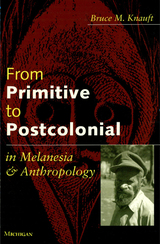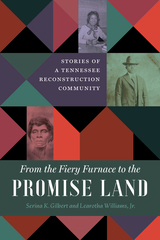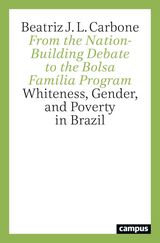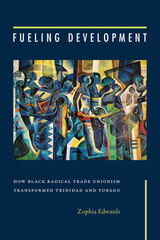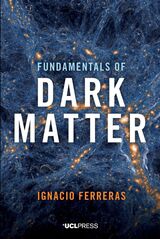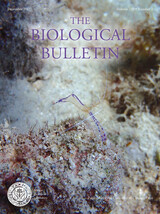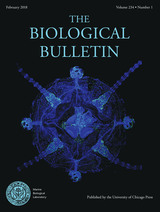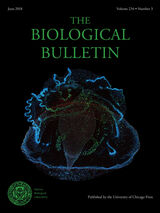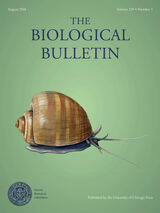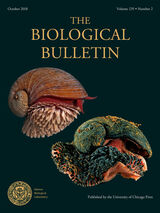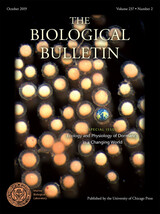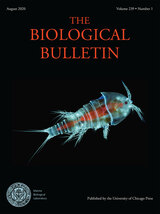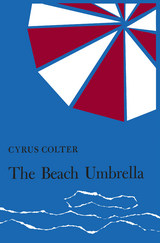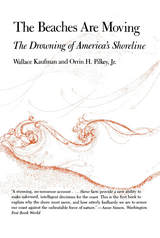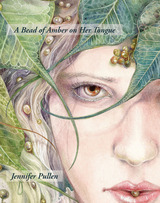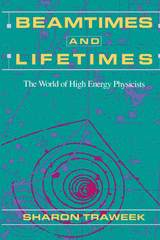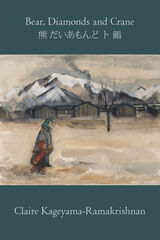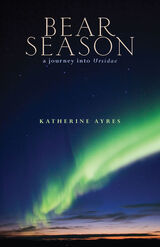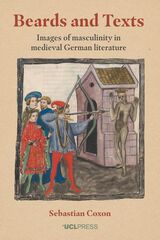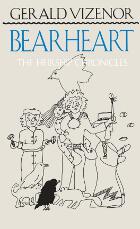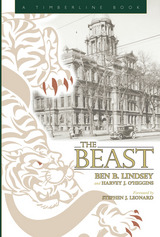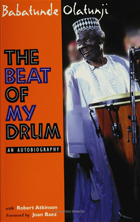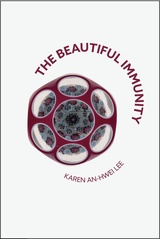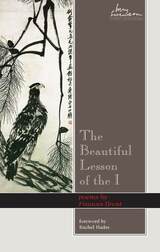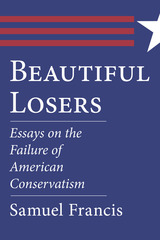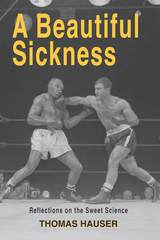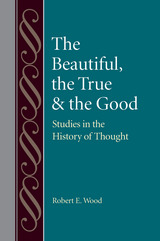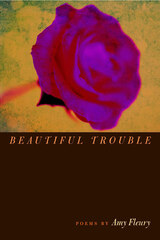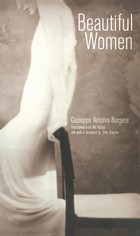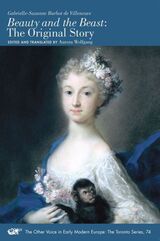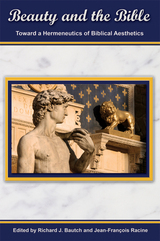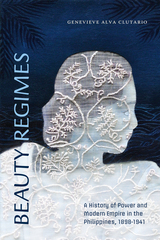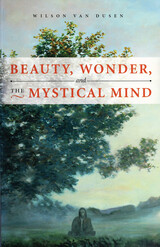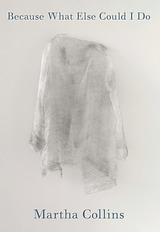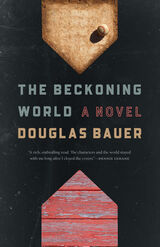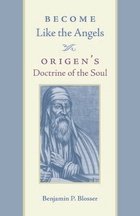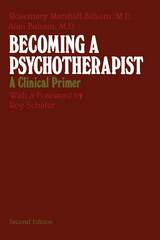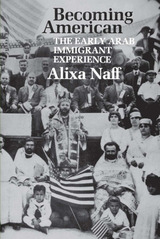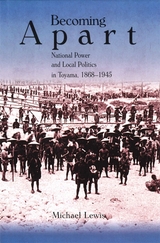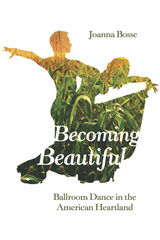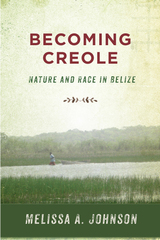BBL vol 233 num 1
The University of Chicago Press
University of Chicago Press Journals, 2017
BBL vol 233 num 2
The University of Chicago Press
University of Chicago Press Journals, 2017
BBL vol 233 num 3
The University of Chicago Press
University of Chicago Press Journals, 2017
BBL vol 234 num 1
The University of Chicago Press
University of Chicago Press Journals, 2018
BBL vol 234 num 3
The University of Chicago Press
University of Chicago Press Journals, 2018
BBL vol 235 num 1
The University of Chicago Press
University of Chicago Press Journals, 2018
BBL vol 235 num 2
The University of Chicago Press
University of Chicago Press Journals, 2018
BBL vol 235 num 3
The University of Chicago Press
University of Chicago Press Journals, 2018
BBL vol 236 num 1
The University of Chicago Press
University of Chicago Press Journals, 2019
BBL vol 236 num 2
The University of Chicago Press
University of Chicago Press Journals, 2019
BBL vol 236 num 3
The University of Chicago Press
University of Chicago Press Journals, 2019
BBL vol 237 num 1
The University of Chicago Press
University of Chicago Press Journals, 2019
BBL vol 237 num 2
The University of Chicago Press
University of Chicago Press Journals, 2019
BBL vol 237 num 3
The University of Chicago Press
University of Chicago Press Journals, 2019
BBL vol 238 num 1
The University of Chicago Press
University of Chicago Press Journals, 2020
BBL vol 238 num 2
The University of Chicago Press
University of Chicago Press Journals, 2020
BBL vol 238 num 3
The University of Chicago Press
University of Chicago Press Journals, 2020
BBL vol 239 num 1
The University of Chicago Press
University of Chicago Press Journals, 2020
BBL vol 239 num 2
The University of Chicago Press
University of Chicago Press Journals, 2020
BBL vol 239 num 3
The University of Chicago Press
University of Chicago Press Journals, 2020
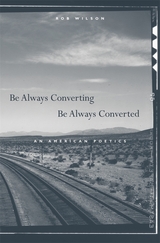 Be Always Converting, Be Always Converted: An American Poetics
Rob Wilson
Harvard University Press, 2009 “Be always converting, and be always converted; turn us again, O Lord,” Thomas Shepard urged his Cambridge congregation in the 1640s. This mandate coming down from American Puritan times to New Age seekers, to be “always converting, and always converted,” places a radical burden on the self as site of renewal and world-change, even as conversion becomes surrounded by deconversion (rejection of prior beliefs) and counterconversion (turns to alternative beliefs) across global modernity.
Rob Wilson’s reconceptualization of the American project of conversion begins with the story of Henry ‘Ōpūkaha‘ia, the first Hawaiian convert to Christianity, “torn from the stomach” of his Native Pacific homeland and transplanted to New England. Wilson argues that ‘Ōpūkaha‘ia’s conversion is both remarkable and prototypically American, because he dared to redefine himself via this drive to rebirth.
By mapping the poetics and politics of conversion and counterconversion, Wilson returns conversion to its central place in the American literature, history, and psyche. Through ‘Ōpūkaha‘ia’s story, and through the works of the Tongan social scientist and fiction writer Epeli Hau‘ofa, Wild West poet Ai, and the mercurial Bob Dylan, Wilson demonstrates that conversion—seemingly an anachronistic concern in this secular age—is instead a global, yet deeply American subject, less about “salvation” or finality than about “experimentation” and the quest for modern beatitude.
Be Faithful Unto Death
Zsigmond Móricz
Central European University Press, 1996 Be Faithful unto Death is the moving story of a bright and sensitive schoolboy growing up in an old-established boarding school in the city of Debrecen in eastern Hungary. Misi, a dreamer and would-be writer, is falsely accused of stealing a winning lottery ticket. The torments through which he goes – and grows – are superbly described. The novel is brimming with vivid detail from the provincial life that Móricz knew so well and shot through with a sense of the tragic fate of a newly truncated Hungary.
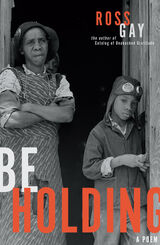 Be Holding: A Poem
Ross Gay
University of Pittsburgh Press, 2020 Winner, 2021 PEN/Jean Stein Award
Winner, 2021 Ohioana Book Award in Poetry
Winner, 2022 Indiana Author Award in Poetry
Be Holding is a love song to legendary basketball player Julius Erving—known as Dr. J—who dominated courts in the 1970s and ‘80s as a small forward for the Philadelphia ‘76ers. But this book-length poem is more than just an ode to a magnificent athlete. Through a kind of lyric research, or lyric meditation, Ross Gay connects Dr. J’s famously impossible move from the 1980 NBA Finals against the Los Angeles Lakers to pick-up basketball and the flying Igbo and the Middle Passage, to photography and surveillance and state violence, to music and personal histories of flight and familial love. Be Holding wonders how the imagination, or how our looking, might make us, or bring us, closer to each other. How our looking might make us reach for each other. And might make us be reaching for each other. And how that reaching might be something like joy.
 Be Not Afraid: A Southern Journey Through Law, Liberty, and Civil Rights
Jack Drake
University of Alabama Press, 2026 A civil rights attorney’s unflinching memoir about the fight against segregation and systemic racism through landmark legal battles in Alabama. Be Not Afraid: A Southern Journey Through Law, Liberty, and Civil Rights is a timely and unflinching memoir from civil rights attorney Jack Drake, who has spent decades on the front lines of Alabama’s legal battles for racial justice. Raised in a segregated community in Gardendale, Alabama, Drake came of age during the Civil Rights Movement and became a pivotal figure in cases that reshaped the state’s legal and moral landscape. Drake helped reform Alabama’s grossly inadequate mental health system and supported voting rights efforts throughout Alabama. His career underscores the crucial role private attorneys and grassroots advocates played in enforcing civil rights laws long after their passage. Through vivid recollections of courtroom battles, civil rights alliances, and personal transformation, Be Not Afraid offers an intimate view into the persistence and courage required to challenge systemic injustice. At a time when debates over equity and democracy remain pressing, Drake’s story is both a powerful reflection on the past and a call to action for the present. It speaks to the enduring importance of legal advocacy and community solidarity in the fight for a more just society, making it essential reading for those engaged in civil rights history, law, or social change.
 Be Not Conformed: Rene Girard at the Nexus of Athens, Jerusalem, and Silicon Valley
Luke Burgis
Catholic University of America Press, 2026 René Girard (1923–2015) was one of the most influential interdisciplinary thinkers of the 20th century. His mimetic theory—which argues that human desire is fundamentally imitative and that rivalry and conflict arise from this imitation—cuts across philosophy, anthropology, history, literary criticism, theology, and more. To manage the destructive potential of mimetic rivalry, societies resort to violence, often in the form of what he called the scapegoat mechanism. The implications of his theory for today’s world are profound.
This volume brings together essays that place Girard in conversation with other major thinkers, including Dietrich von Hildebrand, Luigi Giussani, and Marshall McLuhan, while exploring his insights on technology, education, and race. Though Girard spent most of his career as a professor at Stanford, his influence extends beyond academia. His thought has shaped Silicon Valley entrepreneurs, who recognized the impact of mimetic dynamics on innovation, competition, and value creation.
Many of the essays in Be Not Conformed originated from the NOVITĀTE Conference at The Catholic University of America held in November 2023 to mark the centennial of Girard’s birth. The book’s subtitle—René Girard at the Nexus of Athens, Jerusalem, and Silicon Valley—reflects his synthesis of classical philosophy, theological depth, and modern technological discourse.
Bishop Robert Barron has called Girard a potential future “father of the Church,” underscoring the lasting significance of his work. This volume offers an exploration of Girard’s legacy, revealing why his ideas remain essential for understanding today’s cultural and intellectual landscape. You will find in the pages of Be Not Conformed a glimpse of the width, breadth, depth, and grandeur of this singular thinker.
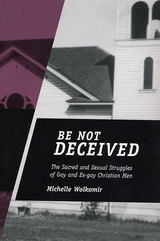 Be Not Deceived: The Sacred and Sexual Struggles of Gay and Ex-gay Christian Men
Wolkomir, Michelle
Rutgers University Press, 2006 Homosexuality has become increasingly accepted in mainstream America over the past two decades. Yet despite indications of progress that can be found everywhere from academia to popular culture, gay men and women remain the target of much discrimination and stigma, particularly within conservative Christianity.
In Be Not Deceived, Michelle Wolkomir explores the difficult dilemma that gay Christians face in their attempts to reconcile their religious and sexual identities. She introduces the ideologies and practices of two alternative and competing ministries that offer solutions for Christians who experience homosexual desire.
One organization—the Universal Fellowship of Metropolitan Community Churches—believes that God made people gay to suit divine purposes. Changing one’s sexuality is therefore impossible and a defiance of God. In contrast, Exodus International preaches that homosexuality is a sin and a symptom of disordered psychological development—one that can be cured through redemptive prayer. By comparing participant experiences in these ministries, Wolkomir explores the paths and processes by which members learn to become gay or ex-gay Christians.
Through careful analysis of the groups’ ideologies, interactions, and symbolic resources, Be Not Deceived goes far beyond the obvious differences between the ministries to uncover their similarities, namely that both continue to define heterosexuality as the normative and dominant lifestyle.
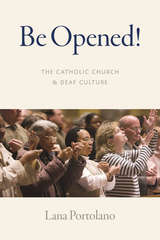 Be Opened! The Catholic Church and Deaf Culture
Lana Portolano
Catholic University of America Press, 2021 Be Opened! The Catholic Church and Deaf Culture offers readers a people’s history of deafness and sign language in the Catholic Church. Paying ample attention to the vocation stories of deaf priests and pastoral workers, Portolano traces the transformation of the Deaf Catholic community from passive recipients of mercy to an active language minority making contributions in today’s globally diverse church.
Background chapters familiarize readers with early misunderstandings about deaf people in the church and in broader society, along with social and religious issues facing deaf people throughout history. A series of connected narratives demonstrate the strong Catholic foundations of deaf education in sign language, including sixteenth-century monastic schools for deaf children and nineteenth-century French education in sign language as a missionary endeavor. The author explains how nineteenth-century schools for deaf children, especially those founded by orders of religious sisters, established small communities of Deaf Catholics around the globe. A series of portraits illustrates the work of pioneering missionaries in several different countries—“apostles to the Deaf”—who helped to establish and develop deaf culture in these communities through adult religious education and the sacraments in sign language. In several chapters focused on the twentieth century, the author describes key events that sparked a modern transformation in Deaf Catholic culture. As linguists began to recognize sign languages as true human languages, deaf people borrowed the practices of Civil Rights activists to gain equality both as citizens and as members of the church. At the same time, deaf people drew inspiration and cultural validation from key documents of Vatican II, and leadership of the Deaf Catholic community began to come from the deaf community rather than to it through missionaries. Many challenges remain, but this book clearly presents Deaf Catholic culture as an important and highly visible embodiment of Catholic heritage.
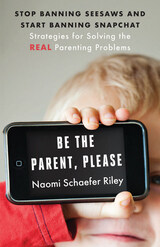 Be the Parent, Please: Stop Banning Seesaws and Start Banning Snapchat: Strategies for Solving the Real Parenting Problems
Naomi Schaefer Riley
Templeton Press, 2018 Silicon Valley tech giants design their products to hook even the most sophisticated adults. Imagine, then, the influence these devices have on the developing minds of young people. Touted as tools of the future that kids must master to ensure a job in the new economy, they are, in reality, the culprits, stealing our children’s attention, making them anxious, agitated, and depressed. What’s worse, schools across the country are going digital under the assumption that a tablet with a wi-fi connection is what’s lacking in our education system. Add to that the legion of dangers invited by unregulated access to the internet, and it becomes clear that our screen-saturated culture is eroding some of the essential aspects of childhood. In Be the Parent, Please, former New York Post and Wall Street Journal writer Naomi Schaefer Riley draws from her experience as a mother of three and delves into the latest research on the harmful effects that excessive technology usage has on a child’s intellectual, social, and moral formation. Throughout each chapter, she backs up her discussion with “tough mommy tips”—realistic advice for parents who want to take back control from tech. With the alluring array of gadgets, apps, and utopian promises expanding by the day, engulfing more and more of our lives, Be the Parent, Please is both a wake-up call and an indispensable guide for parents who care about the healthy development of their children.
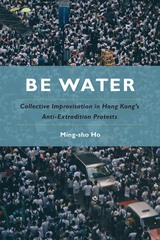 Be Water: Collective Improvisation in Hong Kong's Anti-Extradition Protests
Ming-sho Ho
Temple University Press, 2025 During the eventful summer of 2019 in Hong Kong, the Be Water Revolution formed to resist the proposed extradition of fugitives to mainland China’s courts. With its name derived from martial arts master Bruce Lee’s adage to be “formless and shapeless like water,” the movement turned out to be the city’s largest episode of contentious politics and was unique for using impromptu communication among participants and the absence of central leadership.
In Be Water, Ming-sho Ho examines the dynamics of the city-wide uprising from the perspective of agency power. He seeks to understand how numerous and anonymous Hongkongers contributed to this epoch-making campaign as well as how they responded to the full-scale state repression that enveloped them. Ho praises and questions the durability of the inventive Be Water Revolution and how the activists encouraged protests spontaneously, through interpersonal networks and by voluntarily collaborating with strangers at great personal risk.
Ho posits a new concept of “collective improvisation” to make sense of such a decentralized yet creative way of protesting. Be Water seeks to understand the rise and long afterlife of this movement and illustrate its efficacy. As Ho shows, these dynamics of collective improvisation have implications for contemporary protest movements around the world.
The Beaches Are Moving: The Drowning of America's Shoreline
Wallace Kaufman and Orrin H. Pilkey Jr.
Duke University Press, 1983 Our beaches are eroding, sinking, washing out right under our houses, hotels, bridges; vacation dreamlands become nightmare scenes of futile revetments, fills, groins, what have you—all thrown up in a frantic defense against the natural system. The romantic desire to live on the seashore is in doomed conflict with an age-old pattern of beach migration. Yet it need not be so. Conservationist Wallace Kaufman teams up with marine geologist Orrin H. Pilkey Jr., in an evaluation of America's beaches from coast to coast, giving sound advice on how to judge a safe beach development from a dangerous one and how to live at the shore sensibly and safely.
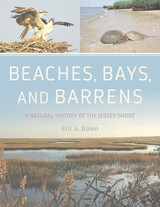 Beaches, Bays, and Barrens: A Natural History of the Jersey Shore
Eric G. Bolen
Rutgers University Press, 2024 The Jersey Shore attracts millions of visitors each year, drawn to its sandy beaches. Yet New Jersey’s coastline contains a richer array of biodiverse habitats than most tourists realize, from seagrass meadows to salt marshes to cranberry bogs.
Beaches, Bays, and Barrens introduces readers to the natural wonders of the Jersey Shore, revealing its unique ecology and fascinating history. The journey begins with the contributions and discoveries of early naturalists who visited the region and an overview of endangered species and natural history, followed by chapters that explore different facets of the shore’s environments. These start with sandy beaches and dunes and culminate in the engaging Pine Barrens, the vital watershed for much of the state’s varied coastline. Along the way, readers will also learn about whaling, decoy carvers, an extinct duck, and the cultivation of wild blueberries.
Including over seventy color photographs, the book also features twenty-three infoboxes that go deep into areas of ecological or historical interest, such as the Forsythe National Wildlife Refuge or the Jaws-like shark attacks of 1916. From Cape May to Sandy Hook, biologist Eric G. Bolen takes you on a guided tour of the Jersey Shore’s rich ecological heritage.
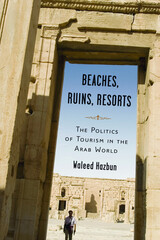 Beaches, Ruins, Resorts: The Politics of Tourism in the Arab World
Waleed Hazbun
University of Minnesota Press, 2008 How Arab states use tourism for their own ends Despite being viewed as a dangerous region to visit, leisure travel across the Middle East has thrived even in the post–9/11 era. In Beaches, Ruins, Resorts, Waleed Hazbun investigates this overlooked industry to show how tourism is shaping the economic development and international relations of the region in dramatic ways. Following Europeans seeking Mediterranean beaches, Israelis crossing into Jordan as leisure tourists, and visitors discovering Dubai, Hazbun offers an original perspective on the Middle East and North Africa and challenges common portrayals of Arab nations as disconnected from the rest of the world. Rather, Hazbun reveals how government elites are using tourism to take part in globalization while, at the same time, crafting it to serve state interests. Paradoxically, the expansion of travel in the region has allowed states to encourage integration into the global economy while simultaneously expanding control over their society. Beaches, Ruins, Resorts also explores tourism’s broader beneficial effects on the region, such as aiding the peace process between Israel and Jordan, fostering Tunisia’s economic connection with Europe, and transforming Arab cities into hubs of international travel.Hazbun tells the new and surprising story of how the draw of glittering beaches, luxury hotels and resorts, and sightseeing at ancient ruins impacts the Arab world—promoting both economic globalization and political authoritarianism. In doing so, Beaches, Ruins, Resorts provides a much-needed guide for those interested in the changing nature of this fraught region and its place in the world.
Beachlight: Poems
Cyril Wong
Seagull Books, 2023 A profound poem on the mystical and the ecstatic and about our connection with nature.
Beachlight is a sustained poem divided into smaller parts that take on the anonymous voices of those lost and forgotten. A walk along a Singaporean beach transforms into a meditation that bridges an ecological consciousness to the sexual and the homoerotic. The poems in Beachlight expose revelations about the nature of desire, inviting readers to walk beside—and inside—them, reminding us of what we gain when we abandon ourselves to nature and exhorting us to reclaim our primordial connections to the world and to one another.
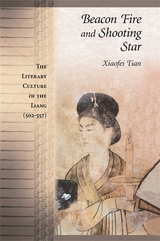 Beacon Fire and Shooting Star: The Literary Culture of the Liang (502–557)
Xiaofei Tian
Harvard University Press, 2007 The Liang dynasty (502–557) is one of the most brilliant and creative periods in Chinese history and one of the most underestimated and misunderstood. Under the Liang, literary activities, such as writing, editing, anthologizing, and cataloguing, were pursued on an unprecedented scale, yet the works of this era are often dismissed as “decadent” and no more than a shallow prelude to the glories of the Tang.
This book is devoted to contextualizing the literary culture of this era—not only the literary works themselves but also the physical process of literary production such as the copying and transmitting of texts; activities such as book collecting, anthologizing, cataloguing, and various forms of literary scholarship; and the intricate interaction of religion, particularly Buddhism, and literature. Its aim is to explore the impact of social and political structure on the literary world.
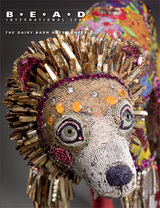 Bead International 2008 and Beyond Basketry
Andrew R. Lewis
Ohio University Press, 2008 This unique book combines two catalogs in one. Bead International 2008 & Beyond Basketry represents the best of two juried exhibitions held at the Dairy Barn Arts Center in Athens, Ohio. Beads have long been worn as jewelry, but in Bead International 2008 contemporary bead artists are shaking things up. From fine jewelry to loom weaving to sculpture, the sixty-eight pieces by fifty-one artists in this collection represent some of the most innovative and well-executed art in the modern beading world. Considering any pierced object to be a bead, pieces range in style from the traditional to the whimsical as they incorporate a variety of colors and materials. This vibrant collection will spark the reader’s creativity and broaden his or her perspective. When the age-old art form of basketry is combined with contemporary visions and techniques, the result is the striking Beyond Basketry, a collection of sixty-five artworks created by forty-two artists from across the United States. The artworks represented in these beautiful color photographs will challenge the reader’s ideas of what constitutes a basket. All artworks are vessels made of woven materials, but the pieces explore a variety of sizes, colors, shapes, and techniques
A Bead of Amber on Her Tongue
Jennifer Pullen
Omnidawn, 2019 Helen of Troy and Aphrodite: two classical paragons of beauty and love. These two figures have served as the inspiration for innumerable works of art in the Western cannon. In the twenty-first century, however, what do their stories provide but a reminder of the predictable roles which sexism has assigned women throughout history and literature?
In this fresh new take on the two women’s stories, Jennifer Pullen takes us away from the familiar and deeper into their experiences. Rewriting Homer, Pullen revitalizes these two figures for the contemporary era. In A Bead of Amber on Her Tongue, Aphrodite maintains autonomy through her experience of her own body, even when forced into marriage. Helen of Troy, meanwhile, harbors a love for her maid, Esme, that no conquering hero can vanquish. Revisiting these classic stories with an inventive twist, Pullen shows that, with a little imagination, the classics may yet bear new insights.
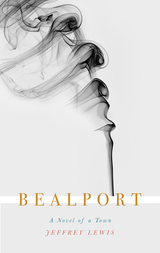 Bealport: A Novel of a Town
Jeffrey Lewis
Haus Publishing, 2018 Bealport, Maine is one of the forgotten towns of America, a place that all too often seems to have its best days behind it. And perhaps nothing symbolizes that more than the old shoe factory—“NORUMBEGA Makers of Fine Footwear Since 1903”—that has been perpetually on the brink of failure, and is now up for sale. But maybe there’s hope? A private equity savant with a fondness for the factory’s shoes buys it—and thus sets in motion a story with profound implications for the town, and for the larger question of how we live today. The factory is a hobby for him, but it represents infinitely more for the residents of Bealport: not only their livelihoods but their self-respect, their connectedness, their sense of self-sufficiency are all bound up in it. Can this high-flying outsider understand that? How will he negotiate the complicated long-term relationships that define the town and its families?
In Bealport, Jeffrey Lewis takes us inside the town, revealing its secrets, acknowledging its problems, and honoring its ambitions. Brilliantly deploying a large cast from all walks of life, this novel reveals small town America in the early twenty-first century through the interwoven secrets and desires of its residents, and through them delivers a striking portrait of America at a moment of national uncertainty.
Bealport, called “a hugely satisfying read” by the Evening Standard and “deeply appealing” by the Times Literary Supplement, is now available in paperback.
Beamtimes and Lifetimes: The World of High Energy Physicists
Sharon Traweek
Harvard University Press, 1988 The unique breed of particle physicists constitutes a community of sophisticated mythmakers—explicators of the nature of matter who forever alter our views of space and time. But who are these people? What is their world really like? Sharon Traweek, a bold and original observer of culture, opens the door to this unusual domain and offers us a glimpse into the inner sanctum.
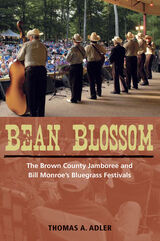 Bean Blossom: The Brown County Jamboree and Bill Monroe's Bluegrass Festivals
Thomas A. Adler
University of Illinois Press, 2011 Bean Blossom, Indiana--near Brown County State Park and the artist-colony town of Nashville, Indiana--is home to the annual Bean Blossom Bluegrass Festival, founded in 1967 by Bill Monroe, the father of bluegrass. Widely recognized as the oldest continuously running bluegrass music festival in the world, this June festival's roots run back to late 1951, when Monroe purchased the Brown County Jamboree, a live weekly country music show presented between April and November each year. Over the years, Monroe's festival featured the top performers in bluegrass music, including Jimmy Martin, Lester Flatt, Earl Scruggs, the Goins Brothers, the Stanley Brothers, and many more. Thomas A. Adler's history of Bean Blossom traces the long and colorful life of the Brown County Jamboree and Bill Monroe's Bluegrass Festival. Adler discusses the development of bluegrass music, the many personalities involved in the bluegrass music scene, the interplay of local, regional, and national interests, and the meaning of this venue to the music's many performers--both professional and amateur--and its legions of fans.
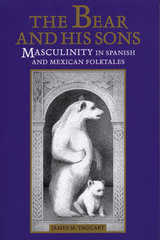 The Bear and His Sons: Masculinity in Spanish and Mexican Folktales
By James M. Taggart
University of Texas Press, 1997 All the world over, people tell stories to express their deepest feelings about such things as what makes a "real" man or woman; what true love, courage, or any other virtue is; what the proper relationships are between people. Often groups of people widely separated by space or time will tell the same basic story, but with differences in the details that reveal much about a particular group's worldview. This book looks at differences in the telling of several common Hispanic folktales. James Taggart contrasts how two men—a Spaniard and an Aztec-speaking Mexican—tell such tales as "The Bear's Son." He explores how their stories present different ways of being a man in their respective cultures. Taggart's analysis contributes to a revision of Freud's theory of gender, which was heavily grounded in biological determinism. Taggart focuses instead on how fathers reproduce different forms of masculinity in their sons. In particular, he shows how fathers who care for their infant sons teach them a relational masculinity based on a connected view of human relationships. Thus, The Bear and His Sons will be important reading not only in anthropology and folklore, but also in the growing field of men's studies.
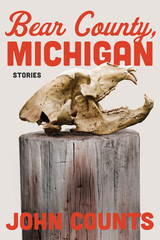 Bear County, Michigan: Stories
John Counts
Northwestern University Press, 2025 Following desperate characters in desperate circumstances in the rural Midwest In these colorful, darkly comic stories, veteran journalist and crime reporter John Counts takes readers to an often-ignored part of the country: a fictional Great Lakes coastal town in northern Michigan defined by beauty and bleakness. The cast of characters in these connected stories ranges from addicts to backwoods misfits to ruined lumber families, all bound together by their desire to obtain something just out of reach. Big Frank breaks out of a rehab facility trying to outrun grief. The women in the village of Brotherhood grapple with sterility resulting from an environmental calamity. A local politician must convince her mother to leave a nudist colony. And in the final, sweeping story, a splinter group from the local tribe attempts to reclaim its ancestral land by force. The people of Bear County and their predicaments encompass the wildly original and yet totally ordinary truths about American life off the beaten track.
Bear, Diamonds and Crane
Claire Kageyama-Ramakrishnan
Four Way Books, 2011 Bear, Diamonds and Crane depicts the sansei, the grandchildren of Japanese immigrants to America in villanelles, haiku, and lyric poems collaged from family letters. Kageyama-Ramakrishnan recounts her relatives’ internment in Manzanar, the California concentration camp where Japanese Americans were imprisoned during World War II. Honoring Sadako Sasaki, who, “after Hiroshima and Nagasaki, / […] folded / a thousand cranes/ for world peace,” Bear, Diamonds and Crane looks to the yonsei (fourth generation) to transform “the wound” that “resists erasure and cultural amnesia”: “For you, I will keep the ripe weight,/ […]/ The limes and climbing wisteria vines.”
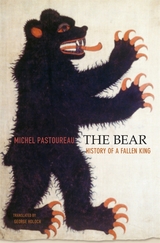 The Bear: History of a Fallen King
Michel Pastoureau
Harvard University Press, 2011 The oldest discovered statue, fashioned some fifteen to twenty thousand years ago, is of a bear. The lion was not always king. From antiquity to the Middle Ages, the bear’s centrality in cults and mythologies left traces in European languages, literatures, and legends from the Slavic East to Celtic Britain. Historian Michel Pastoureau considers how this once venerated creature was deposed by the advent of Christianity and continued to sink lower in the symbolic bestiary before rising again in Pyrrhic triumph as a popular toy.
The early Church was threatened by pagan legends of the bear’s power, among them a widespread belief that male bears were sexually attracted to women and would violate them, producing half-bear, half-human beings—invincible warriors who founded royal lines. Marked for death by the clergy, bears were massacred. During the Renaissance, the demonic prestige bears had been assigned in biblical allegory was lost to the goat, ass, bat, and owl, who were the devil’s new familiars, while the lion was crowned as the symbol of nobility. Once the undefeated champions of the Roman arena, prized in princely menageries, bears became entertainers in the marketplace, trained to perform humiliating tricks or muzzled and devoured by packs of dogs for the amusement of humans. By the early twentieth century, however, the bear would return from exile, making its way into the hearts of children everywhere as the teddy bear.
This compelling history reminds us that men and bears have always been inseparable, united by a kinship that gradually moved from nature to culture—a bond that continues to this day.
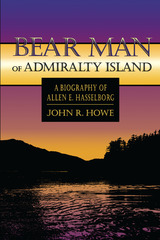 Bear Man of Admiralty Island: A Biography of Allen E. Hasselborg
John Howe
University of Alaska Press, 1996 Bear Man of Admiralty Island is the life story of a rugged loner and self-taught naturalist who came to southeastern Alaska in 1901 to seek his fortune in the awe-inspiring wilderness but found his destiny instead. In the process, this sturdy Midwesterner learned the skills of a prospector, fisherman, trapper, guide, boatbuilder, and homesteader. At all these things he eventually excelled, but his greatest fame came from his greatest skill: he was a peerless bear hunter. He joined several natural history expeditions and worked for about ten years as a specimen collector and guide. He later guided sportsmen and photographers interested in Southeastern's wildlife and majestic natural beauty. As his respect for the great brown bears increased, he lost his interest in killing them, and his experiences inspired conservationists who lobbied to protect Admiralty Island from logging. Hasselborg's keen wit, fierce independence, and eccentric ways attracted much attention during his lifetime. He was an extraordinary man who was in some ways a perfectly ordinary Alaskan of his time, and author Howe reflects on both sides of that character in a balanced, detailed way.
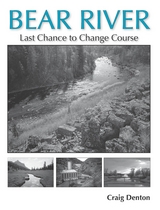 Bear River: Last Chance to Change Course
Craig Denton
Utah State University Press, 2007 Craig Denton notes, “Water will be the primary political, social, and economic issue in the Intermountain West in the twenty-first century.” Urban Utah thirsts for the Great Salt Lake principal source, the Bear River. Plans abound to divert it for a rapidly growing Wasatch Front, as the last good option for future water. But is it? Who now uses the river and how? Who are its stakeholders? What does the Bear mean to them? What is left for further use? How do we measure the Bear's own interest, give it a voice in decisions?
Craig Denton's documentary takes on these questions. He tells the story of the river and the people, of many sorts, with diverse purposes, who live and depend on it. Bear River begins in alpine snowfields, lakes, and creeks in the Uinta Mountains, flows north through Wyoming, loops south in Idaho, and enters the inland sea by way of the an environmentally critical bird refuge. Along the way it has many uses: habitat, farms, electricity, recreation, lawns and homes. Denton researches the natural and human history of the river, photographed it, interviewed many stakeholders, and tried to capture the river perspective. His photographs, printed as crisp duotones, carry us downstream, ultimately to big questions, begging to be answered soon, about what we should and can make of the Bear River. Denton writes,
Gravity my engine,
Water my soul.
I am the teller of life and deep time.
You would measure me.
Sever me.
Own me.
In your name.
Let me flow
In your imagination
That I may speak.
Bear Season
Katherine Ayres
Autumn House Press, 2013 Award-winning author Katherine Ayres charts a lyrical, thoughtful path through the lives of bears she encounters in the forests of Western Massachusetts. Using her natural curiosity and wit, Ayres explores how people and bears coexist, and what happens when things go wrong. This page-turner will delight any reader with an interest in the natural world, and also anyone who is awed by the power and majesty of the black bear.
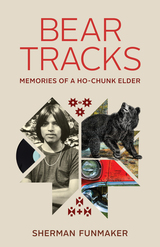 Bear Tracks: Memories of a Ho-Chunk Elder
Sherman Funmaker
Wisconsin Historical Society Press, 2026 Poems, essays, and photos reveal the life, art, and inspirations of a Ho-Chunk elder.
“For me, writing is a form of therapy. I write thoughts down and send them out to the universe. I miss the ones I loved, and when I write about them it feels good to put these stories onto paper. It allows me to visit them when I need to.”
Sherman Funmaker—poet and musician, designer and teacher, son and brother—shares his life story in his intensely personal debut, Bear Tracks: Memories of a Ho-Chunk Elder. In this collection of poems and short essays, Funmaker explores themes of childhood and familial ties, finding and leaving home, coming of age, experiencing love and loss, creating art, and seeking belonging.
A Ho-Chunk Nation Bear Clan elder and grandson of renowned Ho-Chunk storyteller Xéhachiwinga (Mountain Wolf Woman), Funmaker illuminates how his Ho-Chunk culture has had a lasting impact on his life, self-expression, and point of view. With emotional depth and clarity, Bear Tracks confronts hard topics, such as poverty, racism, and personal loss, leavening them with optimism and a wry sense of humor.
Family photos from across generations accompany Funmaker’s reflections on the people and places that have shaped his life and art. Bear Tracks concludes with a reader’s guide offering additional topics for discussion and reflection.
With a voice both distinct and entirely relatable, Funmaker creates space for readers to find resilience and hope for the future while reckoning with the struggles of their past.
 Bear With Me: A Cultural History of Famous Bears in America
Daniel Horowitz
Duke University Press, 2025 From teddy bears and Winnie-the-Pooh to Smokey Bear, Yogi Bear, and Cocaine Bear, American popular culture has been fascinated with real and fictional bears for more than two centuries. Bears are ubiquitous, appearing in advertisements, as logos for sports teams, and as central characters in children’s books, cartoons, movies, and video games. In Bear With Me, Daniel Horowitz presents a vibrant history of the pedestrian and celebrity bears who have captured our imaginations and infiltrated our everyday lives. He shows that bears’ ability to represent and evoke both terror and comfort makes them well-suited for their omnipresence. Today, cultural depictions of bears largely encompass examples of human-bear relationships, reciprocity, and emotional engagement. Reminders that climate change threatens the lives of polar bears engender feelings of empathy, while news of bear attacks drives us to fascinated fear. Whether examining the subculture of gay bears or the deadly consequences of anthropomorphizing animals, Horowitz charts the complexities and depth of American culture’s unique and enduring relationship with bears.
Bear Wrangler: Memoirs of an Alaska Pioneer Biologist
Will Troyer
University of Alaska Press, 2008 Beginning in 1951, Will Troyer embarked on a thirty-year career with the U.S. Department of the Interior that included positions such as fish and game warden and manager of the Kodiak Island brown bear preserve. Troyer’s engaging prose affirms his passionate connection to the natural world, as he describes experiences such as being in the midst of a herd of 40,000 caribou. Bear Wrangler is an absorbing tale of one man’s experience as an authentic pioneer in the last vestiges of American wilderness.
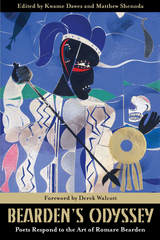 Bearden's Odyssey: Poets Respond to the Art of Romare Bearden
Edited by Kwame Dawes and Matthew Shenoda, Foreword by Derek Walcott
Northwestern University Press, 2017 Borrowing from Romare Bearden’s aesthetic palette and inspired by his Odysseus series, Bearden’s Odyssey gathers, for the first time, poems from thirty-five of the most revered African diaspora poets in the United States. Poetic echoes come forth in themes of inspiration with historical intersections of one of the greatest visual artists of the twentieth century.
The award-winning editors, Kwame Dawes and Matthew Shenoda, assemble an esteemed literary congregation, with original poems by Chris Abani, Rita Dove, Lyrae Van Clief-Stefanon, Ed Roberson, Aracelis Girmay, Yusef Komunyakaa, and more. With a powerful foreword by Nobel laureate Derek Walcott and stunning visual reproductions of select Bearden masterpieces, this anthology fuses art and literature, standing as a testament to Romare Bearden’s power and influence in the contemporary artistic world.
Beards and Texts: Images of Masculinity in Medieval German Literature
Sebastian Coxon
University College London, 2021 A study of beard motifs in medieval German poetry.
Beards make frequent appearances in medieval German poetry—as esteemed markers of majestic wisdom or as hilarious props for undignified manhandling. In Beards and Texts, Sebastian Coxon traces this preeminent symbol of masculinity through four major poetic traditions across the twelfth and sixteenth centuries—Pfaffe Konrad’s Rolandslied, Wolfram von Eschenbach’s Willehalm, ‘Sangspruchdichtung’, and Heinrich Wittenwiler’s Ring. By attending to this hairy trope, Beards and Texts sheds new light on the construction of both poetic form and masculinity in the Middle Ages.
Bearheart: The Heirship Chronicles
Gerald Vizenor Vizenor
University of Minnesota Press, 1990 Bearheart, Gerald Vizenors first novel, overturns “terminal creeds” and violence in a decadent material culture. American civilization has collapsed and Proude Cedarfair, his wife, Rosina, and a bizarre collection of disciples, are forced on a pilgrimage when government agents descend on the reservation to claim their sacred cedar trees for fuel. The tribal pilgrims reverse the sentiments of Manifest Destiny and travel south through the ruins of a white world that ran out of gas.
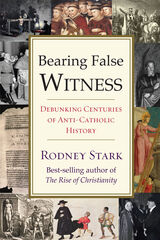 Bearing False Witness: Debunking Centuries of Anti-Catholic History
Rodney Stark
Templeton Press, 2016 As we all know and as many of our well-established textbooks have argued for decades, the Inquisition was one of the most frightening and bloody chapters in Western history; Pope Pius XII was anti-Semitic and rightfully called “Hitler’s Pope,” the Dark Ages were stunting the progress of knowledge to be redeemed only by the secular spirit of the Enlightenment. The religious Crusades were an early example of the rapacious Western thirst for riches and power. But what if these long held beliefs were all wrong? In this stunning, powerful, and ultimately persuasive book, Rodney Stark, one of the most highly regarded sociologists of religion and bestselling author of The Rise of Christianity (HarperSanFrancisco 1997), argues that some of our most firmly held ideas about history, ideas that paint the Catholic Church in the least favorable light are, in fact, fiction. Why have we held these wrongheaded ideas so firmly and for so long? And if our beliefs are wrong, what is the truth? In each chapter, Stark takes on a well-established anti-Catholic myth, gives a fascinating history of how each myth became conventional wisdom and presents a startling picture of the real truth. For example, instead of the Spanish Inquisition being an anomaly of torture and murder of innocent people persecuted for “imaginary” crimes such as witchcraft and blasphemy, Stark argues that not only did the Spanish Inquisition spill very little blood, but it was a major force in support of moderation and justice. Stark dispels the myth of Pope Pius XII being apathetic or even helpful to the Nazi movement, such as to merit the title “Hitler’s Pope,” and instead shows that the campaign to link Pope Pius XII to Hitler was initiated by the Soviet Union, presumably in hopes of neutralizing the Vatican in post-World War II affairs. Many praised Pope Pius XIIs vigorous and devoted efforts to saving Jewish lives during the war. Instead of understanding the Dark Ages as a millennium of ignorance and backwardness inspired by the Catholic Church’s power, Stark argues that the whole notion of the “Dark Ages” was an act of pride perpetuated by anti-religious intellectuals who were determined to claim that theirs was the era of “Enlightenment.” In the end, readers of Bearing False Witness will have a more accurate history of the Catholic Church and will also understand why it became unfairly maligned for so long. Bearing False Witness is a compelling and sobering account of how egotism and ideology often work together to give us a false truth.
 Bearing the Bad News: Contemporary American Literature and Culture
Sanford Pinsker
University of Iowa Press, 1990 For a number of years Sanford Pinsker has been one of our most incisive and spirited observers of contemporary American literature. His books have been widely and enthusiastically reviewed and his essays have appeared regularly in such intellectual quarterlies as the Georgia Review, the Virginia Quarterly Review, and the Gettysburg Review. Now Pinsker focuses on the current American world of letters in this volume of essays to explore what literary culture in America was and what it too often has become, the ways in which cultural politics shapes our sense of contemporary values, and how the resources of American humor and the work of our best writers can help us maintain our equilibrium in “what can only be described as a bad cultural patch.” The eleven essays in this insightful volume take on such subjects as the decline and fall of "formative reading"; the difficulties of identifying themes that unify American literature; the cultural value of such humorists as Robert Benchley, Lenny Bruce, and Woody Allen; versions of cultural politics—from the rise of the neoconservatives to the steady course held by social critics such as Irving Howe; and the place of the college novel in American literature. Pinsker concludes with some sobering thoughts about the current state of American intellectuals. Ultimately, Bearing the Bad News reaffirms certain principles that have come under powerful attack during the last few decades—for example, that literature is a human and humanistic enterprise, one which speaks both to individual moral value and to our larger cultural health. It reflects Pinsker's commitment to the clarity and significance of the literary essay and his belief that what we read, and what we say about what we read, matters deeply.
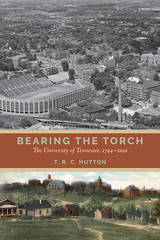 Bearing the Torch: The University of Tennessee, 1794–2010
T.R.C. Hutton
University of Tennessee Press, 2022
Bearing the Torch stands as a comprehensive history of the University of Tennessee, replete with anecdotes and vignettes of interest to anyone interested in UT, from the administrators and chancellors to students and alums, and even to the Vols fans whose familiarity with the school comes mainly from the sports page. It is also a biography of a school whose history reflects that of its state and its nation. The institution that began as Blount College in 1794 in a frontier village called Knoxville exemplifies the relationship between education and American history.
This is the first scholarly history of UT since 1984. T. R. C. Hutton not only provides a much-needed update, but also seeks to present a social history of the university, fully integrating historical context and showing how the volume’s central “character”—the university itself—reflects historical themes and concerns. For example, Hutton shows how the school’s development was hampered in the early nineteenth century by stingy state funding (a theme that also appears in subsequent decades) and Jacksonian fears that publicly funded higher education equaled elite privilege. The institution nearly disappeared as the Civil War raged in a divided region, but then it flourished thanks to policies that never could have happened without the war. In the twentieth century, students embraced dramatic social changes as the university wrestled with race, gender, and other important issues. In the Cold War era, UT became a successful research institution and entered into a deep partnership with Oak Ridge National Laboratories that persists to this day. All the while UT athletics experienced the highs of national championships and the lows of lawsuits and losing seasons. UT is a university with a universe of historical experiences.
The University of Tennessee’s story has always been defined by inclusion and exclusion, and the school has triumphed when it practiced the former and failed when it took part in the latter. Bearing the Torch traces that ongoing process, richly detailing the University’s contributions to what one president, Joseph Estabrook, called the “diffusion of knowledge among the people.”
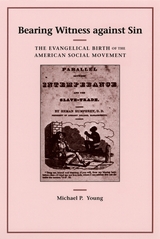 Bearing Witness against Sin: The Evangelical Birth of the American Social Movement
Michael P. Young
University of Chicago Press, 2007 During the 1830s the United States experienced a wave of movements for social change over temperance, the abolition of slavery, anti-vice activism, and a host of other moral reforms. Michael Young argues for the first time in Bearing Witness against Sin that together they represented a distinctive new style of mobilization—one that prefigured contemporary forms of social protest by underscoring the role of national religious structures and cultural schemas. In this book, Young identifies a new strain of protest that challenged antebellum Americans to take personal responsibility for reforming social problems.In this period activists demanded that social problems like drinking and slaveholding be recognized as national sins unsurpassed in their evil and immorality. This newly awakened consciousness undergirded by a confessional style of protest, seized the American imagination and galvanized thousands of people. Such a phenomenon, Young argues, helps explain the lives of charismatic reformers such as William Lloyd Garrison and the Grimké sisters, among others. Marshalling lively historical materials, including letters and life histories of reformers, Bearing Witness against Sin is a revelatory account of how religion lay at the heart of social reform.
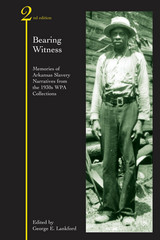 Bearing Witness: Memories of Arkansas Slavery
George E. Lankford
University of Arkansas Press, 2006 The first edition of Bearing Witness brought together for the first time 176 slave narratives from the state of Arkansas. Now, this new edition adds ten previously undiscovered accounts. No one knew the truths of slavery better than the slaves themselves, but no one consulted them until the 1930s. Then, recognizing that this generation of unique witnesses would soon be lost to history, the Works Progress Administration's Federal Writers' Project acted to interview as many former slaves as possible. In a continuation of the project's interest in the life histories of ordinary people, writers interviewed over two thousand former slaves, more than a third of them in Arkansas. These oral histories were first published in the 1970s in a thirty-nine-volume series organized by state, and they transformed America's understanding of slavery. They have offered crucial evidence on a variety of other topics as well: the Civil War, Reconstruction, agricultural practices, everyday life, and oral history itself. But some former Arkansas slaves were interviewed in Texas, Oklahoma, and other states, so their narratives were published in those other collections. And more than half of the testimonies in the Arkansas volume were interviews with people who had moved to Arkansas after freedom. Folklorist George Lankford combed all of the state collections for the testimonies properly belonging to Arkansas and deleted from this state's collection the testimony of later migrants
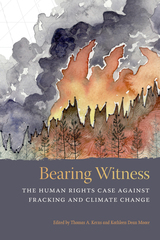 Bearing Witness: The Human Rights Case Against Fracking and Climate Change
Thomas A. Kerns
Oregon State University Press, 2021 Fracking, the practice of shattering underground rock to release oil and natural gas, is a major driver of climate change. The 300,000 fracking facilities in the US also directly harm the health and livelihoods of people in front-line communities, who are disproportionately poor and people of color. Impacted citizens have for years protested that their rights have been ignored.
On May 14, 2018, a respected international human-rights court, the Rome-based Permanent Peoples’ Tribunal, began a week-long hearing on the impacts of fracking and climate change on human and Earth rights. In its advisory opinion, the Tribunal ruled that fracking systematically violates substantive and procedural human rights; that governments are complicit in the rights violations; and that to protect human rights and the climate, the practice of fracking should be banned.
The case makes history. It revokes the social license of extreme-extraction industries by connecting environmental destruction to human-rights violations. It affirms that climate change, and the extraction techniques that fuel it, directly violate deeply and broadly accepted moral norms encoded in the Universal Declaration of Human Rights.
Bearing Witness maps a promising new direction in the ongoing struggle to protect the planet from climate chaos. It tells the story of this landmark case through carefully curated court materials, including searing eye-witness testimony, groundbreaking legal testimony, and the Tribunal’s advisory opinion. Essays by leading climate writers such as Winona LaDuke, Robin Wall Kimmerer, and Sandra Steingraber and legal experts such as John Knox, Mary Wood, and Anna Grear give context to the controversy. Framing essays by the editors, experts on climate ethics and human rights, demonstrate that a human-rights focus is a powerful, transformative new tool to address the climate crisis.
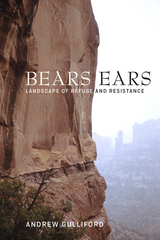 Bears Ears: Landscape of Refuge and Resistance
Andrew Gulliford
University of Utah Press, 2022 Designated in 2016 by President Obama and reduced to 85 percent of its original size one year later by President Trump, Bears Ears National Monument continues to be a flash point of conflict among ranchers, miners, environmental groups, states’ rights advocates, and Native American activists. In this volume, Andrew Gulliford synthesizes 11,000 years of the region’s history to illuminate what’s truly at stake in this conflict and distills this geography as a place of refuge and resistance.
Gulliford’s engaging narrative explains prehistoric Pueblo villages and cliff dwellings, Navajo and Ute history, stories of Mormon families who arrived by wagon train in 1880, impacts of the Atomic Age, uranium mining, and the pothunting and looting of Native graves that inspired the passage of the Antiquities Act over a century ago. The book describes how the national monument came about and its deep significance to five native tribes.
Bears Ears National Monument is a bellwether for public land issues in the American West. Its recognition will be relevant for years to come.
The Beast
Benjamin B. Lindsey
University Press of Colorado, 2009 Judge Benjamin Barr Lindsey’s exposé of big business’s influence on Colorado and Denver politics, a best seller when it was originally published in 1911, is now back in print. The Beast reveals the plight of working-class Denver citizens—in particular those Denver youths who ended up in Lindsey’s court day after day. These encounters led him to create the juvenile court, one of the first courts in the country set up to deal specifically with young delinquents. In addition, Lindsey exposes the darker side of many well-known figures in Colorado history, including Mayor Robert W. Speer, Governor Henry Augustus Buchtel, Will Evans, and many others. When first published, The Beast was considered every bit the equal Upton Sinclair’s The Jungle and sold over 500,000 copies. More than just a fascinating slice of Denver history, this book—and Lindsey’s court— offered widespread social change in the United States.
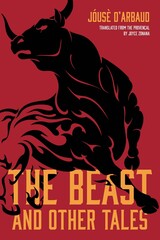 The Beast, and Other Tales
Jóusè d'Arbaud; Translated from the Provençal by Joyce Zonana
Northwestern University Press, 2020 Winner of the Global Humanities Prize A classic of modern Provençal literature, Jóusè d’Arbaud’s 1926 masterpiece “The Beast of Vacarés” (also known as “The Beast of Vaccarès”) is a haunting parable. Set during the fifteenth century, the tale is narrated by a solitary bull herder—known as a gardian—who stumbles upon a starving creature that is half man, half goat. Terrified, the gardian is nonetheless drawn to the eloquent Beast, a dying demigod who laments the loss of his glorious past even as he wields power over the animals around him. Torn between pity and fear, unable to understand his experiences and afraid he will be condemned for heresy, the gardian records his encounters in a journal, hoping that one day readers will make sense of what he cannot. Set in the vast, lonely landscape of the Camargue delta, where the Rhône meets the Mediterranean, The Beast seamlessly melds fantasy with naturalistic detail about the region’s flora and fauna. Three additional stories—“The Caraco,” “Pèire Guilhem’s Remorse,” and “The Longline”—explore the lives of twentieth-century gardians in the region. Each man succumbs to fears and social pressure, tragically losing what he most loves.
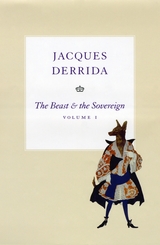 The Beast and the Sovereign, Volume I
Jacques Derrida
University of Chicago Press, 2009 When he died in 2004, Jacques Derrida left behind a vast legacy of unpublished material, much of it in the form of written lectures. With The Beast and the Sovereign, Volume 1, the University of Chicago Press inaugurates an ambitious series, edited by Geoffrey Bennington and Peggy Kamuf, translating these important works into English. The Beast and the Sovereign, Volume 1 launches the series with Derrida’s exploration of the persistent association of bestiality or animality with sovereignty. In this seminar from 2001–2002, Derrida continues his deconstruction of the traditional determinations of the human. The beast and the sovereign are connected, he contends, because neither animals nor kings are subject to the law—the sovereign stands above it, while the beast falls outside the law from below. He then traces this association through an astonishing array of texts, including La Fontaine’s fable “The Wolf and the Lamb,” Hobbes’s biblical sea monster in Leviathan, D. H. Lawrence’s poem “Snake,” Machiavelli’s Prince with its elaborate comparison of princes and foxes, a historical account of Louis XIV attending an elephant autopsy, and Rousseau’s evocation of werewolves in The Social Contract. Deleuze, Lacan, and Agamben also come into critical play as Derrida focuses in on questions of force, right, justice, and philosophical interpretations of the limits between man and animal.
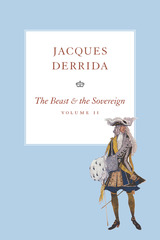 The Beast and the Sovereign, Volume II
Jacques Derrida
University of Chicago Press, 2011 Following on from The Beast and the Sovereign, Volume I, this book extends Jacques Derrida’s exploration of the connections between animality and sovereignty. In this second year of the seminar, originally presented in 2002–2003 as the last course he would give before his death, Derrida focuses on two markedly different texts: Heidegger’s 1929–1930 course The Fundamental Concepts of Metaphysics, and Daniel Defoe’s Robinson Crusoe. As he moves back and forth between the two works, Derrida pursuesthe relations between solitude, insularity, world, violence, boredom and death as they supposedly affect humans and animals in different ways. Hitherto unnoticed or underappreciated aspects of Robinson Crusoe are brought out in strikingly original readings of questions such as Crusoe’s belief in ghosts, his learning to pray, his parrot Poll, and his reinvention of the wheel. Crusoe’s terror of being buried alive or swallowed alive by beasts or cannibals gives rise to a rich and provocative reflection on death, burial, and cremation, in part provoked by a meditation on the death of Derrida’s friend Maurice Blanchot. Throughout, these readings are juxtaposed with interpretations of Heidegger's concepts of world and finitude to produce a distinctively Derridean account that will continue to surprise his readers.
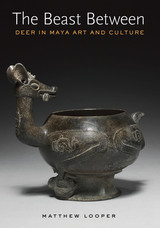 The Beast Between: Deer in Maya Art and Culture
By Matthew Looper
University of Texas Press, 2019 The first book to focus on the multifaceted images of deer and hunting in ancient Maya art, from the award-winning author of To Be Like Gods: Dance in Ancient Maya Civilization. Winner, CHOICE Outstanding Academic Title, 2019 The white-tailed deer had a prominent status in Maya civilization: it was the most important wild-animal food source at many inland Maya sites and also functioned as a major ceremonial symbol. Offering an in-depth semantic analysis of this imagery, The Beast Between considers iconography, hieroglyphic texts, mythological discourses, and ritual narratives to translate the significance and meaning of the vibrant metaphors expressed in a variety of artifacts depicting deer and hunting. Charting the importance of deer as a key component of the Maya diet, especially for elites, and analyzing the coupling of deer and maize in the Maya worldview, The Beast Between reveals a close and long-term interdependence between the Maya and these animals. Not only are deer depicted naturalistically in hunting and ritual scenes, but also they are assigned human attributes. This rich imagery reflects the many ways in which deer hunting was linked to status, sexuality, and war as part of a deeper process to ensure the regeneration of both agriculture and ancestry. Drawing on methodologies of art history, archaeology, and ethnology, this illuminating work is poised to become a key resource for multiple fields.
Beast in View: A Study of the Earl of Rochester’s Poetry
Francis Whitfield
Harvard University Press In this charming essay, Mr. Whitfield has pointed out the similarity of literary conditions in our own time and in the days of John Wilmot, Earl of Rochester. In this light he has treated as particularly significant Rochester’s peculiar type of satire, that boomerang which returns on its sender and finds him as defenceless as his enemies. In Rochester’s lyrics and occasional speeches as well, it is his freely accepted dissonance that holds most meaning for the modern reader. After two centuries and a half of misunderstanding, this truly significant Restoration poet finds his meed of appreciation from a representative of the younger generation.
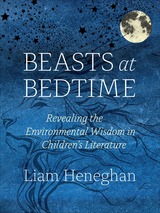 Beasts at Bedtime: Revealing the Environmental Wisdom in Children’s Literature
Liam Heneghan
University of Chicago Press, 2018 Talking lions, philosophical bears, very hungry caterpillars, wise spiders, altruistic trees, companionable moles, urbane elephants: this is the magnificent menagerie that delights our children at bedtime. Within the entertaining pages of many children’s books, however, also lie profound teachings about the natural world that can help children develop an educated and engaged appreciation of the dynamic environment they inhabit.
In Beasts at Bedtime, scientist (and father) Liam Heneghan examines the environmental underpinnings of children’s stories. From Beatrix Potter to Harry Potter, Heneghan unearths the universal insights into our inextricable relationship with nature that underlie so many classic children’s stories. Some of the largest environmental challenges in coming years—from climate instability, the extinction crisis, freshwater depletion, and deforestation—are likely to become even more severe as this generation of children grows up. Though today’s young readers will bear the brunt of these environmental calamities, they will also be able to contribute to environmental solutions if prepared properly. And all it takes is an attentive eye: Heneghan shows how the nature curriculum is already embedded in bedtime stories, from the earliest board books like The Rainbow Fish to contemporary young adult classics like The Hunger Games.
Beasts at Bedtime is an awakening to the vital environmental education children’s stories can provide—from the misadventures of The Runaway Bunny to more overt tales like The Lorax. Heneghan serves as our guide, drawing richly upon his own adolescent and parental experiences, as well as his travels in landscapes both experienced and imagined. Organized into thematic sections, the work winds its way through literary forests, colorful characters, and global environments.
This book enthralls as it engages. Heneghan as a guide is as charming as he is insightful, showing how kids (and adults) can start to experience the natural world in incredible ways from the comfort of their own rooms. Beasts at Bedtime will help parents, teachers, and guardians extend those cozy times curled up together with a good book into a lifetime of caring for our planet.
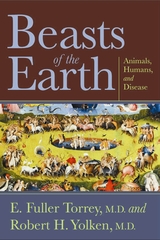 Beasts of the Earth: Animals, Humans, and Disease
Torrey, E. Fuller
Rutgers University Press, 2014 Humans have lived in close proximity to other animals for thousands of years. Recent scientific studies have even shown that the presence of animals has a positive effect on our physical and mental health. People with pets typically have lower blood pressure, show fewer symptoms of depression, and tend to get more exercise.
But there is a darker side to the relationship between animals and humans. Animals are carriers of harmful infectious agents and the source of a myriad of human diseases. In recent years, the emergence of high-profile illnesses such as AIDS, SARS, West Nile virus, and bird flu has drawn much public attention, but as E. Fuller Torrey and Robert H. Yolken reveal, the transfer of deadly microbes from animals to humans is neither a new nor an easily avoided problem.
Beginning with the domestication of farm animals nearly 10,000 years ago, Beasts of the Earth traces the ways that human-animal contact has evolved over time. Today, shared living quarters, overlapping ecosystems, and experimental surgical practices where organs or tissues are transplanted from non-humans into humans continue to open new avenues for the transmission of infectious agents. Other changes in human behavior like increased air travel, automated food processing, and threats of bioterrorism are increasing the contagion factor by transporting microbes further distances and to larger populations in virtually no time at all.
While the authors urge that a better understanding of past diseases may help us lessen the severity of some illnesses, they also warn that, given our increasingly crowded planet, it is not a question of if but when and how often animal-transmitted diseases will pose serious challenges to human health in the future.
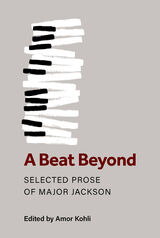 A Beat Beyond: Selected Prose of Major Jackson
Edited by Amor Kohli
University of Michigan Press, 2022 In this collection of essays, talks, and reviews, Major Jackson revels in the work of poetry not only to limn and assess the intellectual and spiritual dimensions of poets, but to amplify the controversies and inner conflicts that define our age: political unrest, climate crises, the fallout from bewildering traumas, and the social function of the art of poetry itself. Accessible and critically minded, Jackson returns to the poem as an unparalleled source of linguistic pleasure that structures a multilayered “lyric self.” In his interviews, Jackson illustrates poetry’s distinct ability to mediate the inexplicable while foregrounding the possibilities of human song.
Collected over several decades, these essays find Jackson praising mythmaking in Frank Bidart and Ai’s poetry, expressing bafflement at the silence of white-identified poets in the cause of social and racial justice, unearthing the politics behind Gwendolyn Brooks’s Pulitzer Prize, and marveling at the “hallucinatory speed of thought” in a diverse range of poets including Mei-mei Berssenbrugge, Brenda Hillman, Afaa Michael Weaver, Forrest Gander, and Terrance Hayes. This collection passionately surveys the radical shifts of the art and notes poetry as a necessity for a modern sensibility.
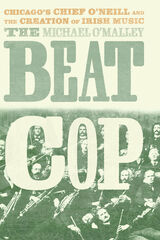 The Beat Cop: Chicago's Chief O'Neill and the Creation of Irish Music
Michael O'Malley
University of Chicago Press, 2022 The remarkable story of how modern Irish music was shaped and spread through the brash efforts of a Chicago police chief. Irish music as we know it today was invented not just in the cobbled lanes of Dublin or the green fields of County Kerry, but also in the burgeoning metropolis of early-twentieth-century Chicago. The genre’s history combines a long folk tradition with the curatorial quirks of a single person: Francis O’Neill, a larger-than-life Chicago police chief and an Irish immigrant with a fervent interest in his home country’s music. Michael O’Malley’s The Beat Cop tells the story of this singular figure, from his birth in Ireland in 1865 to his rough-and-tumble early life in the United States. By 1901, O’Neill had worked his way up to become Chicago’s chief of police, where he developed new methods of tracking criminals and recording their identities. At the same time, he also obsessively tracked and recorded the music he heard from local Irish immigrants, enforcing a strict view of what he felt was and wasn’t authentic. Chief O’Neill’s police work and his musical work were flip sides of the same coin, and O’Malley delves deep into how this brash immigrant harnessed his connections and policing skills to become the foremost shaper of how Americans see, and hear, the music of Ireland.
The Beat Of My Drum: An Autobiography
Michael Babatunde Olatunji
Temple University Press, 2005 Babatunde Olatunji's record album Drums of Passion proclaimed that the time had come for America to recognize Africa's cultural contributions to the music world. Through his many albums and live performances, the Nigerian drummer popularized West African traditional music and spread his message of racial harmony. In this long-awaited autobiography, Olatunji presents his life story and the philosophy that guided him. Olatunji influenced and inspired musicians for more than forty years—from luminaries to music students and the many ordinary people who participated in his drum circles. He writes about rhythm being "the soul of life," and about the healing power of the drum. Ultimately, The Beat of My Drum shows why at the time of his death in 2003, Olatunji had become, according to The New York Times, "the most visible African musician in the United States."
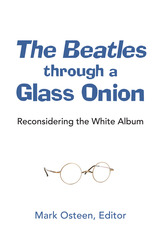 The Beatles through a Glass Onion: Reconsidering the White Album
Mark Osteen, Editor
University of Michigan Press, 2019 The Beatles, the 1968 double LP more commonly known as the White Album, has always been viewed as an oddity in the group’s oeuvre. Many have found it to be inconsistent, sprawling, and self-indulgent. The Beatles through a Glass Onion is the first-ever scholarly volume to explore this seminal recording at length, bringing together contributions by some of the most eminent scholars of rock music writing today. It marks a reconsideration of this iconic but under-appreciated recording and reaffirms the White Album’s significance in the Beatles’ career and in rock history.
This volume treats the White Album as a whole, with essays scrutinizing it from a wide range of perspectives. These essays place the album within the social and political context of a turbulent historical moment; locate it within the Beatles’ lives and careers, taking into consideration the complex personal forces at play during the recording sessions; investigate the musical as well as pharmaceutical influences on the record; reveal how it reflects new developments in the Beatles’ songwriting and arranging; revisit the question of its alleged disunity; and finally, track its legacy and the breadth of its influence on later rock, pop, and hip-hop artists.
The Beatles through a Glass Onion features the scholarship of Adam Bradley, Vincent Benitez, Lori Burns, John Covach, Walter Everett, Michael Frontani, Steve Hamelman, Ian Inglis, John Kimsey, Mark Osteen, Russell Reising, Stephen Valdez, Anthony D. Villa, Kenneth Womack, and Alyssa Woods. John Covach’s Afterword summarizes the White Album’s lasting impact and value. The Beatles through a Glass Onion represents a landmark work of rock music scholarship. It will prove to be an essential and enduring contribution to the field.
 Beatrice of Bayou Têche
Alice Ilgenfritz Jones
University of Wisconsin Press, 2001 Beatrice of Bayou Têche is a work of great historical and artistic interest: a late-nineteenth-century novel by a white woman about a black woman artist-protagonist. As the introduction for this reprint edition shows, Alice Ilgenfritz Jones was the first white woman to take an extended interest in the intersection of creativity, race, and gender. In Beatrice, Jones seeks to unveil the relationships between white and African Americans during the twenty years before the Civil War by following her mixed-race protagonist from her childhood as a slave in New Orleans through her career as a free woman and inspired painter and opera singer. Beatrice renders the white author’s effort to find a place for the mixed-race woman in relation to paradigms of creativity that are not only gendered but racialized. In the process, it exposes the fault lines of ideology and literary convention that underlie attempts to negotiate issues of race, gender, and creativity in late nineteenth-century America.
Beatrix Farrand’s Plant Book for Dumbarton Oaks
Beatrix Farrand
Harvard University Press The Plant Book for Dumbarton Oaks was prepared as a resource for those charged with maintenance of the gardens following their acquisition by Harvard University in 1941. Beatrix Farrand here explains the reasoning behind her plan for each of the gardens and stipulates how each should be cared for in order that its basic character remain intact. Her resourceful suggestions for alternative plantings, her rigorous strictures concerning pruning and replacement, her exposition of the overall concept that underlies each detail, and the plant lists that accompany her discussion of each garden make this a volume of interest to every student, practitioner, and lover of landscape design.
 Beatrix Farrand’s Plant Book for Dumbarton Oaks: Revised Edition
Beatrix Farrand
Harvard University Press The Plant Book for Dumbarton Oaks was prepared by Beatrix Farrand as a resource for those charged with maintenance of the Dumbarton Oaks Gardens following their acquisition by Harvard University in 1941. To commemorate the 100th anniversary of the Gardens, and in conjunction with the Farrand’s 150th birthday, this new edition contains updated commentary and new contemporary and historical photography, showing the gardens in all their current beauty and as they were conceived and created. Accompanying the original plant lists, Farrand’s text carefully explains the reasoning behind her plan for each of the gardens and shares how each should be cared for in order that its basic character should remain intact. While she provides suggestions for alternative plantings, strictures concerning pruning and replacement, and exposition of the overall concept that underlies each detail, Jonathan Kavalier’s thoughtful commentary provides context for changes that have affected new plant choices for the gardens, such as new, disease resistant cultivars and recognition that some plants are now considered invasive. This book is an excellent companion to a stroll through the garden for any lover of plants and landscape architecture, and any fan of Farrand’s garden design.
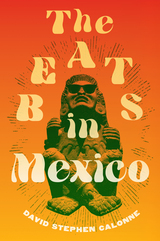 The Beats in Mexico
David Stephen Calonne
Rutgers University Press, 2022 Mexico features prominently in the literature and personal legends of the Beat writers, from its depiction as an extension of the American frontier in Jack Kerouac’s On the Road to its role as a refuge for writers with criminal pasts like William S. Burroughs. Yet the story of Beat literature and Mexico takes us beyond the movement’s superstars to consider the important roles played by lesser-known female Beat writers.
The first book-length study of why the Beats were so fascinated by Mexico and how they represented its culture in their work, this volume examines such canonical figures as Kerouac, Burroughs, Ginsberg, Lamantia, McClure, and Ferlinghetti. It also devotes individual chapters to women such as Margaret Randall, Bonnie Bremser, and Joanne Kyger, who each made Mexico a central setting of their work and interrogated the misogyny they encountered in both American and Mexican culture.
The Beats in Mexico not only considers individual Beat writers, but also places them within a larger history of countercultural figures, from D.H. Lawrence to Antonin Artaud to Jim Morrison, who mythologized Mexico as the land of the Aztecs and Maya, where shamanism and psychotropic drugs could take you on a trip far beyond the limits of the American imagination.
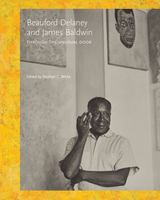 Beauford Delaney and James Baldwin: Through the Unusual Door
Stephen C. Wicks
University of Tennessee Press, 2020 Beauford Delaney and James Baldwin: Through the Unusual Door examines the thirty-eight-year relationship between painter Beauford Delaney (born in Knoxville, 1901; died in Paris, 1979) and writer James Baldwin (born in New York, 1924; died in Saint-Paul-de-Vence, France, 1987) and the ways their ongoing intellectual exchange shaped each other’s creative output and worldview. This full-color publication documents the groundbreaking exhibition organized by the Knoxville Museum of Art (KMA) and is drawn from the KMA’s extensive Delaney holdings, from public and private collections around the country, and from unpublished photographs and papers held by the Knoxville-based estate of Beauford Delaney. This book seeks to identify and disentangle the skein of influences that grew over and around a complex, lifelong relationship with a selection of Delaney’s works that reflects the powerful presence of Baldwin in Delaney’s life. While no other figure in Beauford Delaney’s extensive social orbit approaches James Baldwin in the extent and duration of influence, none of the major exhibitions of Delaney’s work has explored in any depth the creative exchange between the two.
The volume also includes essays by Mary Campbell, whose research currently focuses on James Baldwin and Beauford Delaney within the context of the civil rights movement; Glenn Ligon, an internationally acclaimed New York-based artist with intimate knowledge of Baldwin’s writings, Delaney’s art, and American history and society; Levi Prombaum, a curatorial assistant at the Solomon R. Guggenheim Museum who did his doctoral research at University College London on Delaney’s portraits of James Baldwin; and Stephen Wicks, the Knoxville Museum of Art’s Barbara W. and Bernard E. Bernstein Curator, who has guided the KMA’s curatorial department for over 25 years and was instrumental in building the world’s largest and most comprehensive public collection of Beauford Delaney’s art at the KMA.
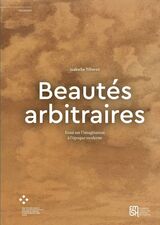 Beautés arbitraires: Essai sur l’imagination à l’époque moderne
Isabelle Tillerot
Diaphanes, 2021 Les beautés arbitraires ont une histoire qui précède la question esthétique du beau et la dépasse. Fortes d’un je ne sais quoi qui les fonde à l’écart des systèmes théoriques, elles renversent au XVIIIe siècle la construction sociale du goût. Il se peut que cette conquête soit le plus grand effort de la pensée moderne. Distinguer, du point de vue de l’histoire de l’art, ce que la notion d’arbitraire recouvre, telle est la vaste énigme dénouée dans ce livre.
La reconnaissance des beautés arbitraires se heurte à l’absolu d’un modèle antique qu’il est temps de contredire. Car il n’est rien de fixe, ni d’immuable dans l’arbitraire de la beauté, tout entier laissé à l’imagination du peintre, du poète, de l’architecte ou du musicien… Beauté chimérique opposée à la beauté véritable, elle revêt soudain valeur de rareté et de distinction et se transforme en beauté nécessaire, liée à l’invention de formes nouvelles qui peuvent plaire et toucher universellement. Entre caprice et convention, non-sens et vraisemblance, raison et sentiment, beautés essentielles et arbitraires échangent leurs rôles pour représenter différemment le monde et ses figures.
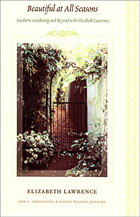 Beautiful at All Seasons: Southern Gardening and Beyond with Elizabeth Lawrence
Elizabeth Lawrence
Duke University Press, 2007 Elizabeth Lawrence (1904–85) is recognized as one of America’s most important gardeners and garden writers. In 1957, Lawrence began a weekly column for the Charlotte Observer, blending gardening lore and horticultural expertise gained from her own gardens in Raleigh and Charlotte, North Carolina, and from her many gardener friends. This book presents 132 of her beloved columns. Never before published in book form, they were chosen from the more than 700 pieces that she wrote for the Observer over fourteen years. Lawrence exchanged plants and gardening tips with everyone from southern “farm ladies” trading bulbs in garden bulletins to prominent regional gardeners. She corresponded with nursery owners, everyday backyard gardeners, and literary luminaries such as Katharine White and Eudora Welty. Her books, including A Southern Garden, The Little Bulbs, and Gardens in Winter, inspired several generations of gardeners in the South and beyond. The columns in this volume cover specific plants, such as sweet peas, hellebores, peonies, and the bamboo growing outside her living-room window, as well as broader topics including the usefulness of vines, the importance of daily pruning, and organic gardening. Like all of Lawrence’s writing, these columns are peppered with references to conversations with neighbors and quotations from poetry, mythology, and correspondence. They brim with knowledge gained from a lifetime of experimenting in her gardens, from her visits to other gardens, and from her extensive reading. Lawrence once wrote, “Dirty fingernails are not the only requirement for growing plants. One must be as willing to study as to dig, for a knowledge of plants is acquired as much from books as from experience.” As inspiring today as when they first appeared in the Charlotte Observer, the columns collected in Beautiful at All Seasons showcase not only Lawrence’s vast knowledge but also her intimate, conversational writing style and her lifelong celebration of gardens and gardening.
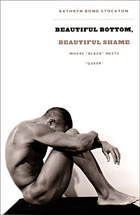 Beautiful Bottom, Beautiful Shame: Where “Black” Meets “Queer”
Kathryn Bond Stockton
Duke University Press, 2006 Shame, Kathryn Bond Stockton argues in Beautiful Bottom, Beautiful Shame, has often been a meeting place for the signs “black” and “queer” and for black and queer people—overlapping groups who have been publicly marked as degraded and debased. But when and why have certain forms of shame been embraced by blacks and queers? How does debasement foster attractions? How is it used for aesthetic delight? What does it offer for projects of sorrow and ways of creative historical knowing? How and why is it central to camp? Stockton engages the domains of African American studies, queer theory, psychoanalysis, film theory, photography, semiotics, and gender studies. She brings together thinkers rarely, if ever, read together in a single study—James Baldwin, Radclyffe Hall, Jean Genet, Toni Morrison, Robert Mapplethorpe, Eldridge Cleaver, Todd Haynes, Norman Mailer, Leslie Feinberg, David Fincher, and Quentin Tarantino—and reads them with and against major theorists, including Georges Bataille, Sigmund Freud, Eve Kosofsky Sedgwick, Jacques Lacan, Roland Barthes, and Leo Bersani. Stockton asserts that there is no clear, mirrored relation between the terms “black” and “queer”; rather, seemingly definitive associations attached to each are often taken up or crossed through by the other. Stockton explores dramatic switchpoints between these terms: the stigmatized “skin” of some queers’ clothes, the description of blacks as an “economic bottom,” the visual force of interracial homosexual rape, the complicated logic of so-called same-sex miscegenation, and the ways in which a famous depiction of slavery (namely, Morrison’s Beloved) seems bound up with depictions of AIDS. All of the thinkers Stockton considers scrutinize the social nature of shame as they examine the structures that make debasements possible, bearable, pleasurable, and creative, even in their darkness.
Beautiful Cosmos: Performance and Belonging in the Caribbean Diaspora
Tina K. Ramnarine
Pluto Press, 2007 What are the musical sounds that people remember in the diaspora? What are the sounds they create? Recognizing the importance that people attach to musical performances, this book explores the significance of widespread Caribbean genres in diaspora politics. Ramnarine uses ethnographic approaches to unravel creative processes of memory, innovation and production and to interrogate geographies of musical canons, hybridity discourses and culture theory. She challenges us to rethink diaspora as only being about displacement, to move beyond the limits of marginalization and otherness, and to imagine the possibilities of "beautiful cosmos". Asking "where is home in the diaspora?" this book presents radical perspectives in the study of diaspora.
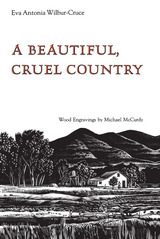 A Beautiful, Cruel Country
Eva Antonia Wilbur-Cruce
University of Arizona Press, 1987 Arizona's Arivaca Valley lies only a short distance from the Mexican border and is a rugged land in which to put down stakes. When Arizona Territory was America's last frontier, this area was homesteaded by Anglo and Mexican settlers alike, who often displaced the Indian population that had lived there for centuries. This frontier way of life, which prevailed as recently as the beginning of the twentieth century, is now recollected in vivid detail by an octogenarian who spent her girlhood in this beautiful, cruel country.
Eva Antonia Wilbur inherited a unique affinity for the land. Granddaughter of a Harvard-educated physician who came to the Territory in the 1860s, she was the firstborn child of a Mexican mother and Anglo father who instilled in her an appreciation for both cultures. Little Toña learned firsthand the responsibilities of ranching—an education usually reserved for boys—and also experienced the racial hostility that occurred during those final years before the Tohono O'odham were confined to a reservation.
Begun as a reminiscence to tell younger family members about their "rawhide tough and lonely" life at the turn of the century, Mrs. Wilbur-Cruce's book is rich with imagery and dialogue that brings the Arivaca area to life. Her story is built around the annual cycle of ranch life—its spring and fall round-ups, planting and harvesting—and features a cavalcade of border characters, anecdotes about folk medicine, and recollections of events that were most meaningful in a young girl's life. Her account constitutes a valuable primary source from a region about which nothing similar has been previously published, while the richness of her story creates a work of literature that will appeal to readers of all ages.
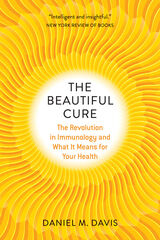 The Beautiful Cure: The Revolution in Immunology and What It Means for Your Health
Daniel M. Davis
University of Chicago Press, 2018 “Visceral.”—Wall Street Journal “Illuminating.”—Publishers Weekly “Heroic.”—Science
The immune system holds the key to human health. In The Beautiful Cure, leading immunologist Daniel M. Davis describes how the scientific quest to understand how the immune system works—and how it is affected by stress, sleep, age, and our state of mind—is now unlocking a revolutionary new approach to medicine and well-being.
The body’s ability to fight disease and heal itself is one of the great mysteries and marvels of nature. But in recent years, painstaking research has resulted in major advances in our grasp of this breathtakingly beautiful inner world: a vast and intricate network of specialist cells, regulatory proteins, and dedicated genes that are continually protecting our bodies. Far more powerful than any medicine ever invented, the immune system plays a crucial role in our daily lives. We have found ways to harness these natural defenses to create breakthrough drugs and so-called immunotherapies that help us fight cancer, diabetes, arthritis, and many age-related diseases, and we are starting to understand whether activities such as mindfulness might play a role in enhancing our physical resilience.
Written by a researcher at the forefront of this adventure, The Beautiful Cure tells a dramatic story of scientific detective work and discovery, of puzzles solved and mysteries that linger, of lives sacrificed and saved. With expertise and eloquence, Davis introduces us to this revelatory new understanding of the human body and what it takes to be healthy.
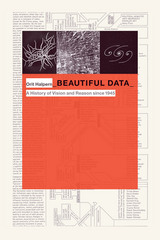 Beautiful Data: A History of Vision and Reason since 1945
Orit Halpern
Duke University Press, 2015 Beautiful Data is both a history of big data and interactivity, and a sophisticated meditation on ideas about vision and cognition in the second half of the twentieth century. Contending that our forms of attention, observation, and truth are contingent and contested, Orit Halpern historicizes the ways that we are trained, and train ourselves, to observe and analyze the world. Tracing the postwar impact of cybernetics and the communication sciences on the social and human sciences, design, arts, and urban planning, she finds a radical shift in attitudes toward recording and displaying information. These changed attitudes produced what she calls communicative objectivity: new forms of observation, rationality, and economy based on the management and analysis of data. Halpern complicates assumptions about the value of data and visualization, arguing that changes in how we manage and train perception, and define reason and intelligence, are also transformations in governmentality. She also challenges the paradoxical belief that we are experiencing a crisis of attention caused by digital media, a crisis that can be resolved only through intensified media consumption.
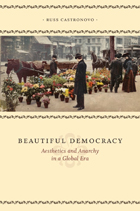 Beautiful Democracy: Aesthetics and Anarchy in a Global Era
Russ Castronovo
University of Chicago Press, 2007 The photographer and reformer Jacob Riis once wrote, “I have seen an armful of daisies keep the peace of a block better than a policeman and his club.” Riis was not alone in his belief that beauty could tame urban chaos, but are aesthetic experiences always a social good? Could aesthetics also inspire violent crime, working-class unrest, and racial murder? To answer these questions, Russ Castronovo turns to those who debated claims that art could democratize culture—civic reformers, anarchists, novelists, civil rights activists, and college professors—to reveal that beauty provides unexpected occasions for radical, even revolutionary, political thinking.
Beautiful Democracy explores the intersection of beauty and violence by examining university lectures and course materials on aesthetics from a century ago along with riots, acts of domestic terrorism, magic lantern exhibitions, and other public spectacles. Philosophical aesthetics, realist novels, urban photography, and black periodicals, Castronovo argues, inspired and instigated all sorts of collective social endeavors, from the progressive nature of tenement reform to the horrors of lynching. Discussing Jane Addams, W.E.B. Du Bois, Charlie Chaplin, William Dean Howells, and Riis as aesthetic theorists in the company of Kant and Schiller, Beautiful Democracy ultimately suggests that the distance separating academic thinking and popular wisdom about social transformation is narrower than we generally suppose.
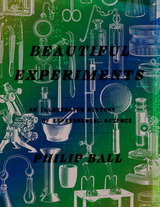 Beautiful Experiments: An Illustrated History of Experimental Science
Philip Ball
University of Chicago Press, 2023 A New Scientist Best Book of 2023
Featuring two hundred color plates, this history of the craft of scientific inquiry is as exquisite as the experiments whose stories it shares.
This illustrated history of experimental science is more than just a celebration of the ingenuity that scientists and natural philosophers have used throughout the ages to study—and to change—the world. Here we see in intricate detail experiments that have, in some way or another, exhibited elegance and beauty: in their design, their conception, and their execution. Celebrated science writer Philip Ball invites readers to marvel at and admire the craftsmanship of scientific instruments and apparatus on display, from the earliest microscopes to the giant particle colliders of today. With Ball as our expert guide, we are encouraged to think carefully about what experiments are, what they mean, and how they are used. Ranging across millennia and geographies, Beautiful Experiments demonstrates why “experiment” remains a contested notion in science, while also exploring how we came to understand the way the world functions, what it contains, and where the pursuit of that understanding has brought us today.
 A Beautiful Fight: The Racial Politics of Capoeira in Backland Bahia
Esther Viola Kurtz
University of Michigan Press, 2025 A Beautiful Fight examines the potentials and limits of capoeira Angola to cohere a multiracial community committed to antiracist struggle. Capoeira, a musical fight-game that originated among enslaved Africans in Brazil, holds special significance for Black Brazilian activists as a spiritual and political practice that affirms the value of Black lives, thus countering anti-Black violence sanctioned by the Brazilian state. However, many capoeira groups count more white practitioners than Black, especially groups of the politicized, Afrocentric style capoeira Angola, raising debates about appropriation of Black culture that resonate across the Americas. A Beautiful Fight addresses these tensions. Drawing on ethnographic research with a multiracial capoeira Angola group in Brazil’s Bahian sertão or backlands, Esther Viola Kurtz explores diverse group members’ understandings of capoeira’s spiritual and political meanings and considers how white participation impacts capoeira’s antiracist politics. A Beautiful Fight argues that white practitioners occupying space in capoeira divert attention from Black members’ concerns and reproduce racist and colonialist ideologies, albeit unintentionally. In this way, the book complicates claims that shared music and dance bridge differences and facilitate cross-racial unity, yet Kurtz proposes that capoeira still transmits knowledge and tools that, when used with intention, commitment, and care, can be wielded to collaboratively contest racism and imagine a more just world.
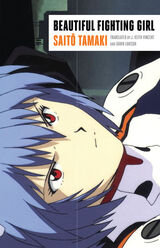 Beautiful Fighting Girl
Saito Tamaki
University of Minnesota Press, 2010 From Cutie Honey and Sailor Moon to Nausicaä of the Valley of the Wind, the worlds of Japanese anime and manga teem with prepubescent girls toting deadly weapons. Sometimes overtly sexual, always intensely cute, the beautiful fighting girl has been both hailed as a feminist icon and condemned as a symptom of the objectification of young women in Japanese society.
In Beautiful Fighting Girl, Saito Tamaki offers a far more sophisticated and convincing interpretation of this alluring and capable figure. For Saito, the beautiful fighting girl is a complex sexual fantasy that paradoxically lends reality to the fictional spaces she inhabits. As an object of desire for male otaku (obsessive fans of anime and manga), she saturates these worlds with meaning even as her fictional status demands her ceaseless proliferation and reproduction. Rejecting simplistic moralizing, Saito understands the otaku’s ability to eroticize and even fall in love with the beautiful fighting girl not as a sign of immaturity or maladaptation but as a result of a heightened sensitivity to the multiple layers of mediation and fictional context that constitute life in our hypermediated world—a logical outcome of the media they consume.
Featuring extensive interviews with Japanese and American otaku, a comprehensive genealogy of the beautiful fighting girl, and an analysis of the American outsider artist Henry Darger, whose baroque imagination Saito sees as an important antecedent of otaku culture, Beautiful Fighting Girl was hugely influential when first published in Japan, and it remains a key text in the study of manga, anime, and otaku culture. Now available in English for the first time, this book will spark new debates about the role played by desire in the production and consumption of popular culture.
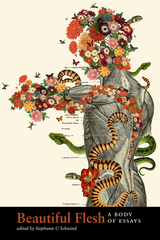 Beautiful Flesh: A Body of Essays
Stephanie G'Schwind
University Press of Colorado, 2017 Selected from the country’s leading literary journals and publications—Colorado Review, Creative Nonfiction, Georgia Review, Prairie Schooner, Crazyhorse, The Normal School, and others—Beautiful Flesh gathers eighteen essays on the body, essentially building a multi-gender, multi-ethnic body out of essays, each concerning a different part of the body: belly, brain, bones, blood, ears, eyes, hair, hands, heart, lungs, nose, ovaries, pancreas, sinuses, skin, spine, teeth, and vas deferens. The title is drawn from Wendy Call’s essay “Beautiful Flesh,” a meditation on the pancreas: “gorgeously ugly, hideously beautiful: crimson globes embedded in a pinkish-tan oval, all nestled on a bed of cabbage-olive green, spun through with gossamer gold.” Other essays include Dinty W. Moore’s “The Aquatic Ape,” in which the author explores the curious design and necessity of sinuses; Katherine E. Standefer’s “Shock to the Heart, Or: A Primer on the Practical Applications of Electricity,” a modular essay about the author’s internal cardiac defibrillator and the nature of electricity; Matt Roberts’s “Vasectomy Instruction 7,” in which the author considers the various reasons for and implications of surgically severing and sealing the vas deferens; and Peggy Shinner’s “Elective,” which examines the author’s own experience with rhinoplasty and cultural considerations of the “Jewish nose.” Echoing the myriad shapes, sizes, abilities, and types of the human body, these essays showcase the many forms of the genre: personal, memoir, lyric, braided, and so on. Contributors: Amy Butcher, Wendy Call, Steven Church, Sarah Rose Etter, Matthew Ferrence, Hester Kaplan, Sarah K. Lenz, Lupe Linares, Jody Mace, Dinty W. Moore, Angela Pelster, Matt Roberts, Peggy Shinner, Samantha Simpson, Floyd Skloot, Danielle R. Spencer, Katherine E. Standefer, Kaitlyn Teer, Sarah Viren, Vicki Weiqi Yang
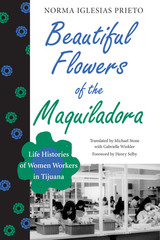 Beautiful Flowers of the Maquiladora: Life Histories of Women Workers in Tijuana
By Norma Iglesias Prieto
University of Texas Press, 1997 Published originally as La flor mas bella de la maquiladora, this beautifully written book is based on interviews the author conducted with more than fifty Mexican women who work in the assembly plants along the U.S.-Mexico border. A descriptive analytic study conducted in the late 1970s, the book uses compelling testimonials to detail the struggles these women face. The experiences of women in maquiladoras are attracting increasing attention from scholars, especially in the context of ongoing Mexican migration to the country's northern frontier and in light of the North American Free Trade Agreement (NAFTA). This book is among the earliest accounts of the physical and psychological toll exacted from the women who labor in these plants. Iglesias Prieto captures the idioms of these working women so that they emerge as dynamic individuals, young and articulate personalities, inexorably engaged in the daily struggle to change the fundamental conditions of their exploitation.
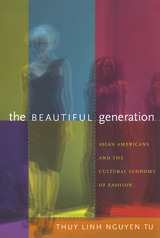 The Beautiful Generation: Asian Americans and the Cultural Economy of Fashion
Thuy Linh Nguyen Tu
Duke University Press, 2011 Since the 1990s, young Asian Americans including Doo-Ri Chung, Derek Lam, Thakoon Panichgul, Alexander Wang, and Jason Wu have emerged as leading fashion designers. They have won prestigious awards, been chosen to head major clothing labels, and had their designs featured in Vogue, Harper’s Bazaar, and other fashion magazines. At the same time that these designers were rising to prominence, the fashion world was embracing Asian chic. During the 1990s, “Asian” shapes, fabrics, iconography, and colors filled couture runways and mass-market clothing racks. In The Beautiful Generation, Thuy Linh Nguyen Tu explores the role of Asian American designers in New York’s fashion industry, paying particular attention to how they relate to the garment workers who produce their goods and to Asianness as a fashionable commodity. She draws on conversations with design students, fashion curators, and fashion publicists; interviews with nearly thirty Asian American designers who have their own labels; and time spent with those designers in their shops and studios, on their factory visits, and at their fashion shows. The Beautiful Generation links the rise of Asian American designers to historical patterns of immigration, racial formation, and globalized labor, and to familial and family-like connections between designers and garment workers.
The Beautiful Immunity
Karen An-hwei Lee
Tupelo Press, 2024 A collection of poems that blesses the reader with a spirit of hope, solace, and inspiration in their own seasons of adversity.
The Beautiful Immunity asks how we create good in an imperfect world of fallible souls. Spare and formally daring, these poems were refined through the catastrophes of wildfires, recession, and a major public health crisis through the hope of a beautiful immunity—an everlasting salve for the lost. This slender volume reads as the culmination of more than a decade’s worth of labor, documenting large-scale social, cultural, and political upheavals, as well as the moment when the word “anthropause” floated indelibly into the world’s vocabulary.
Beautiful Lesson of the I: poems
Frances Brent
Utah State University Press, 2005 The Beautiful Lesson of the I is a collection of finely made poems by an accomplished poet. It will reward the scholar and the student of poetry, as well as the reader looking for the simple pleasures of poetic insight authentically felt. Winner of the Swenson Poetry Award 2005. Now in paperback.
Beautiful Losers: Essays on the Failure of American Conservatism
Samuel Francis
University of Missouri Press, 1994 The 1992 presidential election campaign showed just how deep were the divisions within the Republican party. In Beautiful Losers, Samuel Francis argues that the victory of the Democratic party marks not only the end of the Reagan-Bush era, but the failure of the American conservatism.
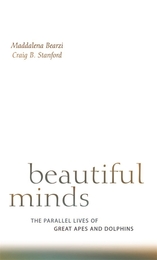 Beautiful Minds: The Parallel Lives of Great Apes and Dolphins
Maddalena Bearzi and Craig Stanford
Harvard University Press, 2010 Apes and dolphins: primates and cetaceans. Could any creatures appear to be more different? Yet both are large-brained intelligent mammals with complex communication and social interaction. In the first book to study apes and dolphins side by side, Maddalena Bearzi and Craig B. Stanford, a dolphin biologist and a primatologist who have spent their careers studying these animals in the wild, combine their insights with compelling results. Beautiful Minds explains how and why apes and dolphins are so distantly related yet so cognitively alike and what this teaches us about another large-brained mammal: Homo sapiens.
Noting that apes and dolphins have had no common ancestor in nearly 100 million years, Bearzi and Stanford describe the parallel evolution that gave rise to their intelligence. And they closely observe that intelligence in action, in the territorial grassland and rainforest communities of chimpanzees and other apes, and in groups of dolphins moving freely through open coastal waters. The authors detail their subjects’ ability to develop family bonds, form alliances, and care for their young. They offer an understanding of their culture, politics, social structure, personality, and capacity for emotion. The resulting dual portrait—with striking overlaps in behavior—is key to understanding the nature of “beautiful minds.”
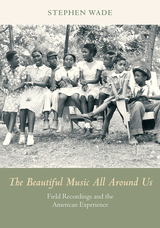 The Beautiful Music All Around Us: Field Recordings and the American Experience
Stephen Wade
University of Illinois Press, 2012 The Beautiful Music All Around Us presents the extraordinarily rich backstories of thirteen performances captured on Library of Congress field recordings between 1934 and 1942 in locations reaching from Southern Appalachia to the Mississippi Delta and the Great Plains. Including the children's play song "Shortenin' Bread," the fiddle tune "Bonaparte's Retreat," the blues "Another Man Done Gone," and the spiritual "Ain't No Grave Can Hold My Body Down," these performances were recorded in kitchens and churches, on porches and in prisons, in hotel rooms and school auditoriums. Documented during the golden age of the Library of Congress recordings, they capture not only the words and tunes of traditional songs but also the sounds of life in which the performances were embedded: children laugh, neighbors comment, trucks pass by. Musician and researcher Stephen Wade sought out the performers on these recordings, their families, fellow musicians, and others who remembered them. He reconstructs the sights and sounds of the recording sessions themselves and how the music worked in all their lives. Some of these performers developed musical reputations beyond these field recordings, but for many, these tracks represent their only appearances on record: prisoners at the Arkansas State Penitentiary jumping on "the Library's recording machine" in a rendering of "Rock Island Line"; Ora Dell Graham being called away from the schoolyard to sing the jump-rope rhyme "Pullin' the Skiff"; Luther Strong shaking off a hungover night in jail and borrowing a fiddle to rip into "Glory in the Meetinghouse." Alongside loving and expert profiles of these performers and their locales and communities, Wade also untangles the histories of these iconic songs and tunes, tracing them through slave songs and spirituals, British and homegrown ballads, fiddle contests, gospel quartets, and labor laments. By exploring how these singers and instrumentalists exerted their own creativity on inherited forms, "amplifying tradition's gifts," Wade shows how a single artist can make a difference within a democracy. Reflecting decades of research and detective work, the profiles and abundant photos in The Beautiful Music All Around Us bring to life largely unheralded individuals--domestics, farm laborers, state prisoners, schoolchildren, cowboys, housewives and mothers, loggers and miners--whose music has become part of the wider American musical soundscape. The hardcover edition also includes an accompanying CD that presents these thirteen performances, songs and sounds of America in the 1930s and '40s.
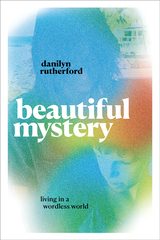 Beautiful Mystery: Living in a Wordless World
Danilyn Rutherford
Duke University Press, 2025 When Danilyn Rutherford and her husband Craig noticed that their six-month-old daughter Millie wasn’t making eye contact, they took her to their pediatrician. And an optometrist. Then a neurologist. Later, to a team of physical and occupational therapists. None of the doctors could give Millie a diagnosis, but it was clear that her brain was not developing at the rate it should. At an age when some children take their first steps, Millie had the cognitive ability and motor skills of a three-month-old. Three years later, Craig died suddenly of a heart attack and Danilyn found herself on the precipice of her anthropology career as a widow and single mother, still trying to solve the puzzle posed by Millie’s inaccessible mind.
Now in her twenties, Millie has never been able to express herself verbally, but she has a thriving social environment rooted in the people around her and in things her companions and family can see, hear, smell, and feel. Life in Millie’s world is far richer than might be immediately evident to those who think and communicate in conventional ways.
Beautiful Mystery explores what it means to be a person in the spaces between what we can and cannot say, and how we can fight to care for those we love when they don’t have the language to fight for themselves. Through her unique lens as a mother and an anthropologist, Rutherford tells the story of arriving in Millie’s world, what she found there, and how Millie showed her that words aren’t always what makes us human. Enlightening and deeply felt, Beautiful Mystery proves that you don’t have to understand someone to love them—a lesson that, if we all learned it, might allow us to live together in a fractured world.
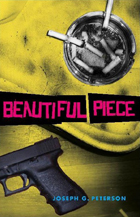 Beautiful Piece
Joseph G. Peterson
Northern Illinois University Press, 2009
During a deadly Chicago heat wave that’s claiming hundreds of lives, Robert, who’s stuck in his apartment alone, fears he’s going to be the next victim. In the apartment above him lives a shell-shocked Vietnam veteran who talks obsessively about the corpses of his war experience while alternately listening to Die Meistersinger and Madama Butterfly.
One day, Robert ventures forth into the searing heat to gas up his car. Immediately he encounters enigmatic Lucy who is trying to escape her brutal fiancé, Matthew Gliss. On a whim, Lucy invites Robert to her apartment where she shows him her mysterious tattoo and tells him of her dangerous life with Matthew Gliss. She warns Robert that if Matthew ever catches them together he should run, not walk, because Matthew won’t think twice of killing him.
So begins the risky, short-lived relationship that leads to a chilling climax. Each of Robert’s increasingly hallucinatory recollections of what happened during the heat wave leads him to profoundly question his own culpability.
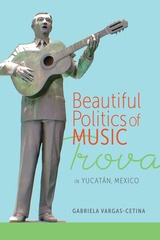 Beautiful Politics of Music: Trova in Yucatán, Mexico
Gabriela Vargas-Cetina
University of Alabama Press, 2017 An exploration into the history and practice of trova, a genre of music that is the soul of Yucatán.
Yucatecan trova is a music genre comprising a type of romantic song that is considered “the soul of Yucatán and Yucatecans.” This first book on Yucatecan trova offers an insider’s view of the history and practice of a treasured cultural heritage. A central theme of Gabriela Vargas-Cetina’s ethnography is what she refers to as the “beautiful politics of music” practiced by Yucatecan trova patrons and organizations, which is a way of asserting the importance of groups and issues through nonconfrontational means.
Trova emerged on the peninsula at the end of the nineteenth century and continues to be part of the general urban soundscape in the states of Yucatán and Campeche. Until the 1920s, this music was little known outside Yucatán and became absorbed into the larger Latin American Bolero genre, making it difficult to perceive its uniqueness and relation to life in Yucatán.
Vargas-Cetina, a native Yucatecan and trova musician, offers ethnographic insight into the local music scene. With family connections, she embedded herself as a trovadora, and her fieldwork—singing, playing the guitar in a trova group, and extensively researching the genre and talking with fellow enthusiasts and experts—ensued. Trova, like other types of artistic endeavors, is the result of collaboration and social milieu. She describes the dedicated trova clubs, cultural institutions, the Yucatecan economy of agricultural exports, and identity politics that helped the music come about and have maintained it today.
Positioned in the larger context of the music of Mexico and Latin America and engaging with theories of modernity and cosmopolitanism, experimental ethnography, and the anthropology of organizations, Beautiful Politics of Music consists of rigorous scholarship. It is also a warm tribute to performers and songs that have inspired many people around the world for more than two centuries.
A Beautiful Sickness: Reflections on the Sweet Science
Thomas Hauser
University of Arkansas Press, 2001 This is the second collection of articles on professional boxing to be published in book form by acclaimed writer Thomas Hauser. It offers unique insights into Muhammad Ali, George Foreman, Shane Mosely, Ray Jones Jr. and many more superstars, as well as an insider's critique of the sweet science today. Satirical, whimsical, and pungent, Hauser deftly maps the politics and poli-tricks of the world's only true universal sport.
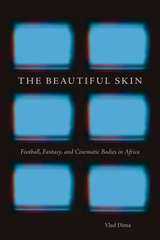 The Beautiful Skin: Football, Fantasy, and Cinematic Bodies in Africa
Vlad Dima
Michigan State University Press, 2020 In this original and provocative study of contemporary African film and literature, Vlad Dima investigates the way that football and cinema express individual and collective fantasies, and highlights where football and cinema converge and diverge with regard to neocolonial fantasies. Shedding new light on both well-known and less familiar films by Mahamat-Saleh Haroun, Abderrahmane Sissako, Jean-Pierre Bekolo, Moussa Touré, Safi Faye, Cheick Doukouré, and Joseph Gaï Ramaka, among others, the study asks just whose fantasy is articulated in football and African cinema. Answering this question requires the exploration of body and identity issues, here through the metaphor of skin: fantasy as a skin; the football jersey as a skin; and ultimately film itself as a skin that has visual, aural, and haptic qualities. The neocolonial body is often depicted as suffering and in the process of being flattened or emptied. So frequently do African cinema and literature replicate this hollowed body, all skin as it were, that it becomes the very type of body that defines neocolonialism. Could the body of film—the depth of both characters and story within the cinematic skin—hold the key to moving into a post-neocolonial era, an era defined by “full” bodies and personal affirmation? This is the question Dima seeks to answer.
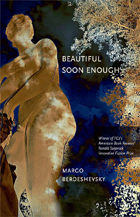 Beautiful Soon Enough
Margo Berdeshevsky
University of Alabama Press, 2009 Winner of FC2's American Book Review/Ronald Sukenick Innovative Fiction Prize Margo Berdeshevsky’s Beautiful Soon Enough is a collection of hypnotic stories that capture the lives—worldly, sexual, obsessive—of twenty–three arresting women.These are snapshots and collages: stories of women on the outside, looking in; of women content to end their affairs; of young women learning the power of seduction; and of older women reminiscing about past loves. They are women who cannot live without love’s embrace, and women who have found it and feel that it is never enough. They are women d'un certain âge and women with naked hearts, of any age.Berdeshevsky’s tales cross the planet: from beds in Paris to the roofs of Havana, from Venice Beach to the hills of Dubrovnik. With settings as varied as the characters they depict, these tales illuminate the lives of women desperate for a balance between love, comfort, and freedom. Personal, driven, and lyrical, together they are Beautiful Soon Enough.
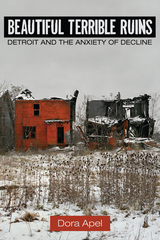 Beautiful Terrible Ruins: Detroit and the Anxiety of Decline
Apel, Dora
Rutgers University Press, 2015 Once the manufacturing powerhouse of the nation, Detroit has become emblematic of failing cities everywhere—the paradigmatic city of ruins—and the epicenter of an explosive growth in images of urban decay. In Beautiful Terrible Ruins, art historian Dora Apel explores a wide array of these images, ranging from photography, advertising, and television, to documentaries, video games, and zombie and disaster films. Apel shows how Detroit has become pivotal to an expanding network of ruin imagery, imagery ultimately driven by a pervasive and growing cultural pessimism, a loss of faith in progress, and a deepening fear that worse times are coming. The images of Detroit’s decay speak to the overarching anxieties of our era: increasing poverty, declining wages and social services, inadequate health care, unemployment, homelessness, and ecological disaster—in short, the failure of capitalism. Apel reveals how, through the aesthetic distancing of representation, the haunted beauty and fascination of ruin imagery, embodied by Detroit’s abandoned downtown skyscrapers, empty urban spaces, decaying factories, and derelict neighborhoods help us to cope with our fears. But Apel warns that these images, while pleasurable, have little explanatory power, lulling us into seeing Detroit’s deterioration as either inevitable or the city’s own fault, and absolving the real agents of decline—corporate disinvestment and globalization. Beautiful Terrible Ruins helps us understand the ways that the pleasure and the horror of urban decay hold us in thrall.
The Beautiful, The True and the Good
Robert E. Wood
Catholic University of America Press, 2015 "Among the foremost Catholic philosophers of his generation. He has utilized the fullness of the Catholic intellectual tradition to brilliantly take the measure of modern philosophical thought . . . This volume is an expression of Robert Wood's singular philosophical outlook." -Jude Dougherty, dean emeritus, school of philosophy, The Catholic University of America
Beautiful Trouble
Amy Fleury
Southern Illinois University Press, 2004 In her first collection of poems, Kansas native Amy Fleury captures images of dragging clotheslines, baked lawns, and sweet potato babies, inserting them with an earnest dignity into her stories of midwestern life. Beautiful Trouble explores the subtleties of landscape, place, families, girlhood, womanhood, and everyday existence on the prairie. Fleury writes of the Midwest with authenticity, speaks of romance with delicate allure, and recalls the heartbreak of childhood without self-pity. In meditations on resilience and life’s contradictions, Fleury engages her characters fully and paints their souls and sensations evenly in language both rare and beautiful. She is a poet in love with sound and its power to summon majesty from quotidian scenes. Her poems are brief and striking, depending on exquisite word choice and balance to achieve a simple order on the page.
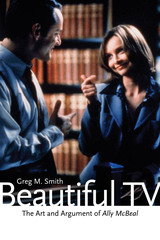 Beautiful TV: The Art and Argument of Ally McBeal
By Greg M. Smith
University of Texas Press, 2007 During its five-year run from 1997 to 2002, the popular TV show Ally McBeal engaged viewers in debates over what it means to be a woman or a man in the modern workplace; how romance factors into the therapeutic understanding of relationships; what value eccentricity has and how much oddity society should tolerate; and what utility fantasy has in the pragmatic world. In addition to these social concerns, however, Ally McBeal stood out for being well-constructed, narratively complex, and stylistically rich—in short, beautiful TV. Starting from the premise that much of television today is "drop-dead gorgeous" and that TV should be studied for its formal qualities as well as its social impact, Greg M. Smith analyzes Ally McBeal in terms of its aesthetic principles and narrative construction. He explores how Ally's innovative use of music, special effects, fantasy sequences, voiceovers, and flashbacks structures a distinctive fictional universe, while it also opens up new possibilities for televisual expression. Smith also discusses the complex narrative strategies that Ally's creator David E. Kelley used to develop a long-running storyline and shows how these serial narrative practices can help us understand a wide range of prime-time TV serials. By taking seriously the art and argument of Ally McBeal, Beautiful TV conclusively demonstrates that aesthetic and narrative analysis is an indispensable key for unlocking the richness of contemporary television.
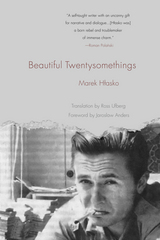 Beautiful Twentysomethings
Marek Hlasko
Northern Illinois University Press, 2013 Marek Hlasko's literary autobiography is a vivid, first-hand account of the life of a young writer in 1950s Poland and a fascinating portrait of the ultimately short-lived rebel generation. Told in a voice suffused with grit and morbid humor, Hlasko's memoir was a classic of its time. In it he recounts his adventures and misadventures, moving swiftly from one tale to the next. Like many writers of his time, Hlasko also worked in screen writing, and his memoir provides a glimpse into just how markedly the medium of film affected him from his very earliest writing days.
The memoir details his relationships with such giants of Polish culture as the filmmaker Roman Polanski and the novelist Jerzy Andrzejewski. Hlasko is the most prominent example of a writer who broke free from the Socialist-Realist formulae that dominated the literary scene in Poland since it fell under the influence of the Soviets. He made his literary debut in 1956 and immediately became a poster boy for Polish Literature. He subsequently worked at some of the most important newspapers and magazines for intellectual life in Warsaw.
Hlasko was sent to Paris on an official mission in 1958, but when he published in an émigré Parisian press his novel of life in post-War Poland, he was denied a renewal of his passport. In effect, he was called back to Poland, and when he refused to return he was stripped of his Polish citizenship. He spent the rest of his life working in exile. Marek Hlasko was a rebel whose writing and iconoclastic way of life became an inspiration to those of his generation and after. Here, in the first English translation of his literary memoir, Ross Ufberg deftly renders Hlasko’s wry and passionate voice.
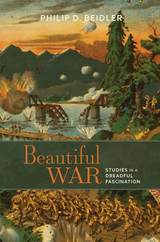 Beautiful War: Studies in a Dreadful Fascination
Philip D. Beidler
University of Alabama Press, 2016 A probing and holistic meditation on the key question: Why do we continue to make art, and thus beauty, out of war?
Beautiful War: Studies in a Dreadful Fascination is a wide-ranging exploration of armed conflict as depicted in art that illustrates the constant presence of war in our everyday lives. Philip D. Beidler investigates the unending assimilation and pervasive presence of the idea of war in popular culture, the impulses behind the making of art out of war, and the unending and debatably aimless trajectories of war itself.
Beidler’s critical scope spans from Shakespeare’s plays, through the Victorian battle paintings of Lady Butler, into the post-World War I writings of F. Scott Fitzgerald and Virginia Woolf, and up to twenty-first-century films such as The Hurt Locker and Extremely Loud and Incredibly Close. As these works of art have become ubiquitous in contemporary culture, the many faces of war clearly spill over into our art and media, and Beidler argues that these portrayals in turn shift the perception of war from a savage truth to a concept.
Beautiful War argues that the representation of war in the arts has always been, and continues to be, an incredibly powerful force. Incorporating painting, music, photography, literature, and film, Beidler traces a disturbing but fundamental truth: that war has always provided an aesthetic inspiration while serving ends as various and complex as ideological or geopolitical history, public memory, and mass entertainment.
Beautiful War is a bold and vivid account of the role of war and military conflict as a subject of art that offers much of value to literary and cultural critics, historians, veterans, students of art history and communication studies, and those interested in expanding their understanding of art and media’s influence on contemporary values and memories of the past.
 Beautiful Wasteland: The Rise of Detroit as America's Postindustrial Frontier
Rebecca J. Kinney
University of Minnesota Press, 2016 According to popular media and scholarship, Detroit, the once-vibrant city that crumbled with the departure of the auto industry, is where dreams can be reborn. It is a place that, like America itself, is gritty and determined. It has faced the worst kind of adversity, and supposedly now it’s back. But what does this narrative of “new Detroit” leave out? Beautiful Wasteland reveals that the contemporary story of Detroit’s rebirth is an upcycled version of the American Dream, which has long imagined access to work, home, and upward mobility as race-neutral projects. They’re not. As Rebecca J. Kinney shows, the narratives of Detroit’s rise, decline, and potential to rise again are deeply steeped in material and ideological investments in whiteness. By remapping the narratives of contemporary Detroit through an extension of America’s frontier mythology, Kinney analyzes a cross-section of twentieth and twenty-first century cultural locations—an Internet forum, ruin photography, advertising, documentary film, and print and online media. She illuminates how the stories we tell about Detroit as a frontier of possibility enable the erasure of white privilege and systemic racism. By situating Detroit as a “beautiful wasteland,” both desirable and distressed, this shows how the narrative of ruin and possibility form a mutually constituted relationship: the city is possible precisely because of its perceived ruin. Beautiful Wasteland tackles the key questions about the future of postindustrial America. As cities around the country reckon with their own postindustrial landscapes, Rebecca Kinney cautions that development that elides considerations of race and class will only continue to replicate uneven access to the city for the poor, working class, and people of color.
Beautiful Women
Giuseppe Antonio Borgese
Northwestern University Press, 2001
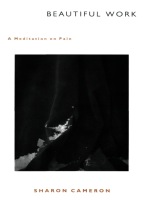 Beautiful Work: A Meditation on Pain
Sharon Cameron
Duke University Press, 2000 The stories one tells about pain are profound ones. Nothing is more legible than these stories. But something is left out of them. If there were no stories, there might be a moment of innocence. A moment before the burden of the stories and their perceived causes and consequences. For Anna, the narrator of Beautiful Work, there were moments when it was not accurate to say in relation to pain "because of this‚" or "leading to that." They were lucid moments. And so she began to hunger for storylessness.
In order to understand the nature of pain, Anna undertakes a meditation practice. We tend to think of pain as self-absorbing and exclusively our own ("my pain," "I am in pain"). In distinction, Sharon Cameron’s Anna comes to explore pain as common property, and as the basis for a radically reconceived selfhood. Resisting the limitations of memoir, Beautiful Work speaks from experience and simultaneously releases it from the closed shell of personal ownership. Outside of the not quite inevitable stories we tell about it, experience is less protected, less compromised, and more vivid than could be supposed.
Beautiful Work brings to bear the same interest in consciousness and intersubjectivity that characterizes Cameron’s other work.
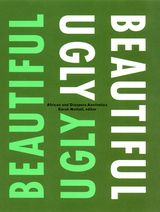 Beautiful/Ugly: African and Diaspora Aesthetics
Sarah Nuttall, ed.
Duke University Press, 2006 In Cameroon, a monumental “statue of liberty” is made from scrap metal. In Congo, a thriving popular music incorporates piercing screams and carnal dances. When these and other instantiations of the aesthetics of Africa and its diasporas are taken into account, how are ideas of beauty reconfigured? Scholars and artists take up that question in this invigorating, lavishly illustrated collection, which includes more than one hundred color images. Exploring sculpture, music, fiction, food, photography, fashion, and urban design, the contributors engage with and depart from canonical aesthetic theories as they demonstrate that beauty cannot be understood apart from ugliness. Highlighting how ideas of beauty are manifest and how they mutate, travel, and combine across time and distance, continental and diasporic writers examine the work of a Senegalese sculptor inspired by Leni Riefenstahl’s photographs of Nuba warriors; a rich Afro-Brazilian aesthetic incorporating aspects of African, Jamaican, and American cultures; and African Americans’ Africanization of the Santería movement in the United States. They consider the fraught, intricate spaces of the urban landscape in postcolonial South Africa; the intense pleasures of eating on Réunion; and the shockingly graphic images on painted plywood boards advertising “morality” plays along the streets of Ghana. And they analyze the increasingly ritualized wedding feasts in Cameroon as well as the limits of an explicitly “African” aesthetics. Two short stories by the Mozambican writer Mia Couto gesture toward what beauty might be in the context of political failure and postcolonial disillusionment. Together the essays suggest that beauty is in some sense future-oriented and that taking beauty in Africa and its diasporas seriously is a way of rekindling hope. Contributors. Rita Barnard, Kamari Maxine Clarke, Mia Couto, Mark Gevisser, Simon Gikandi, Michelle Gilbert, Isabel Hofmeyr, William Kentridge, Dominique Malaquais, Achille Mbembe, Cheryl-Ann Michael, Celestin Monga, Sarah Nuttall, Patricia Pinho, Rodney Place, Els van der Plas, Pippa Stein, Françoise Vergès
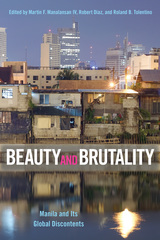 Beauty and Brutality: Manila and Its Global Discontents
Edited by Martin F. Manalansan IV, Robert Diaz, and Roland B. Tolentino
Temple University Press, 2023 Beauty and Brutality provides an exciting, original, and critical encounter with this labyrinthine city’s imagined and material landscape. The authors and contributors investigate the “messy, fleshy, recalcitrant, mercurial, and immeasurable qualities of the city,” examining its urban space and smell: how it is represented in films, literature, music, and urban streetart; how it has endured the politics of colonialism, U.S. imperialism, neoliberalism, and globalization; as well as how its queer citizens engage with digital media platforms to communicate and connect with each other. The first volume to offer a cultural and urban studies approach to Manila, Beauty and Brutality considers the tensions of the Filipino diaspora as they migrate and “re-turn,” as well as the citizens’ responses to the Marcos (and post-Marcos) dictatorship, President Duterte’s authoritarianism, and “Drug War.” Essays also map out of geographies of repression and resistance in the urban war of classes, genders and sexualities, ethnicities and races, and generations, along with the violence of urban life and growth. Ultimately, Beauty and Brutality frames Manila as a vibrant and ever-evolving metropolis that, even in the face of its difficulties, instills hope.
Contributors: Paul Michael Leonardo Atienza, Christine Bacareza Balance, Vanessa Banta, Rosa Cordillera A. Castillo, Roland Sintos Coloma, Gary C. Devilles, Faith R. Kares, John B. Labella, Raffy Lerma, Bliss Cua Lim, Ferdinand M. Lopez, Paul Nadal, Jema M. Pamintuan, Oscar Tantoco Serquiña, Jr., Louise Jashil R. Sonido, and the editors.
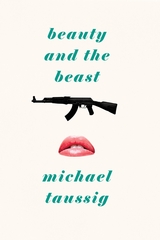 Beauty and the Beast
Michael Taussig
University of Chicago Press, 2012 Beauty and the Beast begins with the question: Is beauty destined to end in tragedy? Drawing on extensive fieldwork in Colombia, Michael Taussig scrutinizes the anxious, audacious, and sometimes destructive attempts people make to transform their bodies through cosmetic surgery and liposuction. He balances an examination of surgeries meant to enhance an individual’s beauty with an often overlooked counterpart, surgeries performed—often on high profile criminals—to disguise one’s identity. Situating this globally shared phenomenon within the economic, cultural, and political history of Colombia, Taussig links the country’s long civil war and its bodily mutilation and torture to the beauty industry at large, sketching Colombia as a country whose high aesthetic stakes make it a stage where some of the most important and problematic ideas about the body are played out.
Central to Taussig’s examination is George Bataille’s notion of depense, or “wasting.” While depense is often used as a critique, Taussig also looks at the exuberance such squandering creates and its position as a driving economic force. Depense, he argues, is precisely what these procedures are all about, and the beast on the other side of beauty should not be dismissed as simple recompense. At once theoretical and colloquial, public and intimate, Beauty and the Beast is a true-to-place ethnography—written in Taussig’s trademark voice—that tells a thickly layered but always accessible story about the lengths to which people will go to be physically remade.
 Beauty and the Beast: Italianness in British Cinema
Elisabetta Girelli
Intellect Books, 2009 Scholarly interest in issues of national identity and representation has been increasing for years, and cinema is a major resource for that work, as it allows for cross-cultural dialogue and the portrayal of different layers of representation and cultural stereotypes. Beauty and the Beast takes a look at the depictions of Italy and the Italians in British cinema. Elisabetta Girelli draws upon cultural and social history to assess the ongoing representation of “Italianness” in British film, and its crucial role in defining and challenging British national identity. Girelli provides an original survey of archival material such as World War II footage, and an analysis of significant British films like Summer Madness and A Room With A View. Drawing on British literary and filmic tradition to analyze the rise of specific images of the Italian other, Beauty and the Beast is a noteworthy and unique contribution to film and cultural studies.
Beauty and the Beast: The Original Story
Gabrielle-Suzanne Barbot de Villeneuve
Iter Press, 2020 Gabrielle-Suzanne Barbot de Villeneuve, the little-known author of Beauty and the Beast, was a successful novelist and fairytale writer in mid eighteenth-century France. While her novels are rarely read today, her compelling fairytale has become universally recognized. This edition is the first integral English translation of Villeneuve’s original tale. The introduction seeks to illuminate the publication of Beauty and the Beast in its historical and literary context, and brings to life the dynamic female characters that first populated this enchanting tale: the courageous Beauty, the Fairy Queen, the Amazon Queen, the Lady Fairy, and the powerful, but mischievous elderly fairy.
The Other Voice in Early Modern Europe: The Toronto Series volume 74
Beauty and the Bible: Toward a Hermeneutics of Biblical Aesthetics
Richard J. Bautch
SBL Press, 2013 These seven essays offer fresh perspectives on beauty’s role in revelation. Each essay features a hermeneutical approach informed by the contemporary study of aesthetics. Covering a series of texts in the Hebrew Bible and New Testament, from Adam and Eve in the garden to Jesus on trial in the Fourth Gospel, the authors engage beauty from three overarching perspectives: modern philosophy, contextual criticism, and the postcritical return to beauty’s primary qualities. The three perspectives are not harmonized but rather explored concurrently to create a volume with intriguing methodological tensions. As this collection highlights beauty in the narratives of scripture, it opens readers to a largely unexplored dimension of the Bible. The contributors are Richard J. Bautch, Jo-Ann A. Brant, Mark Brummitt, David Penchansky, Antonio Portalatín, Jean-François Racine, and Peter Spitaler.
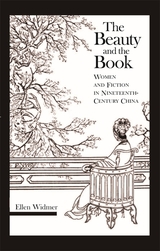 The Beauty and the Book: Women and Fiction in Nineteenth-Century China
Ellen Widmer
Harvard University Press, 2006 Women entered the book trade in significant numbers in China during the late sixteenth century, when it became acceptable for women from “good families” to write poetry and seek to publish their collected poems. At about the same time, a boom in the publication of fiction began, and semiprofessional novelists emerged.
This study begins with three case studies, each of which probes one facet of the relationship between women and fiction in the early nineteenth century. It examines in turn the prefaces written by four women for a novel about women; the activities of a woman editor and writer of fiction; and writings on fiction by three leading literary women. Building on these case studies, the second half of the book focuses on the many sequels to the Dream of the Red Chamber—one of which was demonstrably written by a woman—and the significance of this novel for women. As Ellen Widmer shows, by the end of the century, women were becoming increasingly involved in the novel as critical readers, writers, and editors. And if women and their relationship to fiction changed over the nineteenth century, the novel changed as well, not the least in its growing recognition of the importance of female readers.
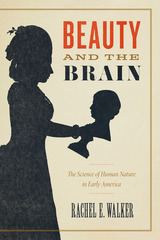 Beauty and the Brain: The Science of Human Nature in Early America
Rachel E. Walker
University of Chicago Press, 2023 Examining the history of phrenology and physiognomy, Beauty and the Brain proposes a bold new way of understanding the connection between science, politics, and popular culture in early America.
Between the 1770s and the 1860s, people all across the globe relied on physiognomy and phrenology to evaluate human worth. These once-popular but now-discredited disciplines were based on a deceptively simple premise: that facial features or skull shape could reveal a person’s intelligence, character, and personality. In the United States, these were culturally ubiquitous sciences that both elite thinkers and ordinary people used to understand human nature.
While the modern world dismisses phrenology and physiognomy as silly and debunked disciplines, Beauty and the Brain shows why they must be taken seriously: they were the intellectual tools that a diverse group of Americans used to debate questions of race, gender, and social justice. While prominent intellectuals and political thinkers invoked these sciences to justify hierarchy, marginalized people and progressive activists deployed them for their own political aims, creatively interpreting human minds and bodies as they fought for racial justice and gender equality. Ultimately, though, physiognomy and phrenology were as dangerous as they were popular. In addition to validating the idea that external beauty was a sign of internal worth, these disciplines often appealed to the very people who were damaged by their prejudicial doctrines. In taking physiognomy and phrenology seriously, Beauty and the Brain recovers a vibrant—if largely forgotten—cultural and intellectual universe, showing how popular sciences shaped some of the greatest political debates of the American past.
 Beauty and the Brain: The Science of Human Nature in Early America
Rachel E. Walker
University of Chicago Press, 2023 This is an auto-narrated audiobook edition of this book.
Examining the history of phrenology and physiognomy, Beauty and the Brain proposes a bold new way of understanding the connection between science, politics, and popular culture in early America.
Between the 1770s and the 1860s, people all across the globe relied on physiognomy and phrenology to evaluate human worth. These once-popular but now discredited disciplines were based on a deceptively simple premise: that facial features or skull shape could reveal a person’s intelligence, character, and personality. In the United States, these were culturally ubiquitous sciences that both elite thinkers and ordinary people used to understand human nature.
While the modern world dismisses phrenology and physiognomy as silly and debunked disciplines, Beauty and the Brain shows why they must be taken seriously: they were the intellectual tools that a diverse group of Americans used to debate questions of race, gender, and social justice. While prominent intellectuals and political thinkers invoked these sciences to justify hierarchy, marginalized people and progressive activists deployed them for their own political aims, creatively interpreting human minds and bodies as they fought for racial justice and gender equality. Ultimately, though, physiognomy and phrenology were as dangerous as they were popular. In addition to validating the idea that external beauty was a sign of internal worth, these disciplines often appealed to the very people who were damaged by their prejudicial doctrines. In taking physiognomy and phrenology seriously, Beauty and the Brain recovers a vibrant—if largely forgotten—cultural and intellectual universe, showing how popular sciences shaped some of the greatest political debates of the American past.
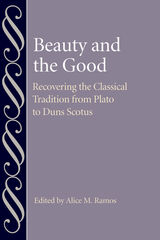 Beauty and the Good: Recovering the Classical Tradition from Plato to Duns Scotus
Alice M. Ramos
Catholic University of America Press, 2021 In the past twenty years or more, there has been a growing interest among philosophers and theologians alike in the transcendentals and especially in the beautiful. This seems fortuitous since so much of contemporary culture is fixated in many ways on beauty, on what might be called a superficial or man-made beauty, intent on outward appearance, with little or no concern for the human person’s interiority and distinctive nature. The Ancients and the Medievals, on the contrary, were sensitive not only to the beauty of nature and art but also to beauty as intelligible, that is, to the beauty of moral harmony and of metaphysical splendor. While the question of whether the beautiful is in fact a transcendental aspect of being continues to be a subject of dispute in contemporary scholarship, the relationship between the beautiful and the good has been accepted since ancient times and has been attended to in recent publications. None of these publications, however, offers a systematic treatment of this relationship by drawing from the wisdom of both ancient and medieval thought in such a way as to bring together the work of scholars in this tradition.
Beauty and the Good intends therefore to make a singular contribution by presenting a richer alternative to the contemporary cult of beauty and appearance on the one hand, and to the concomitant decline of real beauty on the other hand. In addition to highlighting the centrality of beauty in the Aristotelian account of moral virtue, where virtue is kalon and virtuous actions are done for the sake of kalon—an account which is found echoed in the medieval notion of intrinsic goodness (bonum honestum), understood as intelligible or spiritual beauty—this volume will provide the metaphysical and theological grounding for beauty, as influenced in part by Plato and Neoplatonism, together with a much needed account of how we know and judge beauty, and how for the recognition of true good and real beauty we need to be properly disposed. The integration of philosophical and theological reflection on the nature and relationship of beauty and the good, on our perception and judgment of beauty and of the good as beautiful, and on the motivational role of beauty in human action has as its goal to produce a coherent volume of essays.
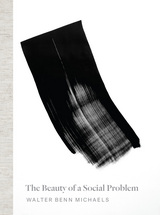 The Beauty of a Social Problem: Photography, Autonomy, Economy
Walter Benn Michaels
University of Chicago Press, 2015 Bertolt Brecht once worried that our sympathy for the victims of a social problem can make the problem’s “beauty and attraction” invisible. In The Beauty of a Social Problem, Walter Benn Michaels explores the effort to overcome this difficulty through a study of several contemporary artist-photographers whose work speaks to questions of political economy.
Although he discusses well-known figures like Walker Evans and Jeff Wall, Michaels’s focus is on a group of younger artists, including Viktoria Binschtok, Phil Chang, Liz Deschenes, and Arthur Ou. All born after 1965, they have always lived in a world where, on the one hand, artistic ambition has been synonymous with the critique of autonomous form and intentional meaning, while, on the other, the struggle between capital and labor has essentially been won by capital. Contending that the aesthetic and political conditions are connected, Michaels argues that these artists’ new commitment to form and meaning is a way for them to depict the conditions that have taken US economic inequality from its lowest level, in 1968, to its highest level today. As Michaels demonstrates, these works of art, unimaginable without the postmodern critique of autonomy and intentionality, end up departing and dissenting from that critique in continually interesting and innovative ways.
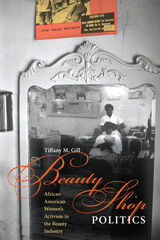 Beauty Shop Politics: African American Women's Activism in the Beauty Industry
Tiffany M. Gill
University of Illinois Press, 2010 Looking through the lens of black business history, Beauty Shop Politics shows how black beauticians in the Jim Crow era parlayed their economic independence and access to a public community space into platforms for activism. Tiffany M. Gill argues that the beauty industry played a crucial role in the creation of the modern black female identity and that the seemingly frivolous space of a beauty salon actually has stimulated social, political, and economic change. From the founding of the National Negro Business League in 1900 and onward, African Americans have embraced the entrepreneurial spirit by starting their own businesses, but black women's forays into the business world were overshadowed by those of black men. With a broad scope that encompasses the role of gossip in salons, ethnic beauty products, and the social meanings of African American hair textures, Gill shows how African American beauty entrepreneurs built and sustained a vibrant culture of activism in beauty salons and schools. Enhanced by lucid portrayals of black beauticians and drawing on archival research and oral histories, Beauty Shop Politics conveys the everyday operations and rich culture of black beauty salons as well as their role in building community.
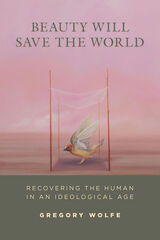 Beauty Will Save the World: Recovering the Human in an Ideological Age
Gregory Wolfe
Intercollegiate Studies Institute, 2011
Culture, Not Politics
We live in a politicized time. Culture wars and increasingly partisan conflicts have reduced public discourse to shouting matches between ideologues. But rather than merely bemoaning the vulgarity and sloganeering of this era, says acclaimed author and editor Gregory Wolfe, we should seek to enrich the language of civil discourse. And the best way to do that, Wolfe believes, is to draw nourishment from the deepest sources of culture: art and religious faith.
Wolfe has been called “one of the most incisive and persuasive voices of our generation,” and this penetrating and wide-ranging book makes a powerful case for the importance of beauty and imagination to cultural renewal. He begins by tracing his own journey from a young culture warrior bent on attacking the modern world to a career devoted to nurturing the creation of culture through contemporary literature and art that renew the Western tradition. Along the way, Wolfe finds in Renaissance Christian humanists like Erasmus and Thomas More—and their belief that imagination and the arts are needed to offset the danger of ideological abstractions— a “distant mirror” in which to see our own times.
Beauty Will Save the World offers a revealing introduction to the artists and thinkers who are the Christian humanists of the modern era, from well-known figures like Evelyn Waugh and Wendell Berry to lesser-known authors like Shusaku Endo, Andrew Lytle, and Geoffrey Hill. A section on visual artists Mary McCleary, Fred Folsom, and Makoto Fujimura (accompanied by reproductions of their works) demonstrates that there are artists who can reimagine the Western tradition in strikingly contemporary terms. Finally, Wolfe pays tribute to the conservative thinkers who served as his mentors: Russell Kirk, Gerhart Niemeyer, Marion Montgomery, and Malcolm Muggeridge— all of whom rejected rigid ideology and embraced culture and tradition.
At a time when our public discourse has come to be dominated by warring factions with little regard for truth, Wolfe’s affirmation of beauty as a redemptive force is both refreshing and encouraging.
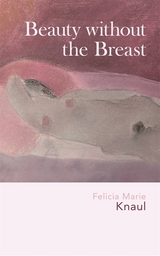 Beauty without the Breast
Felicia Marie Knaul
Harvard University Press, 2012 Felicia Knaul, an economist who has lived and worked for two decades in Latin America on health and social development, documents the personal and professional sides of her breast cancer experience. Beauty without the Breast contrasts her difficult but inspiring journey with that of the majority of women throughout the world who face not only the disease but stigma, discrimination, and lack of access to health care. This wrenching contrast is the cancer divide—an equity imperative in global health.
Knaul exposes barriers affecting women in low and middle-income countries and highlights the role of men, family, and community in responding to the challenge of breast cancer. She shares striking data about breast cancer, a leading killer of young women in developing countries, and narrates the process of applying this evidence and launching Tómatelo a Pecho (also the book title in Spanish)—a Mexico-based program promoting awareness and access to health care. The book concludes with letters from Dr. Julio Frenk, her husband and former Minister of Health of Mexico, written while they shared the trauma of diagnosis and treatment. With force and lucidity, the book narrates the journey of patient and family as they courageously navigate disease and survivorship.
Beauty, Wonder, and the Mystical Mind
WILSON VAN DUSEN
Swedenborg Foundation Publishers, 1999 Beauty, Wonder, and the Mystical Mind spreads before the reader a rich word picture of the spiritual realm. Wilson Van Dusen describes the mature mystic, enumerating the characteristics of those whose lives are shaped by the experience of God. He explains how religion fits within the context of culture and how mysticism fits -- or does not -- within the context of religion. He also compares the mystical to the aesthetic, noting the similar ways in which art and epiphany move and elevate the experiencer. Believing that all have the potential to experience God, Van Dusen opens the mystical realm to the reader with his warm and accessible style. Writing from lifelong personal experience in the spiritual dimension, he offers a singular interpretation of the history of major religions and their regard for mysticism.
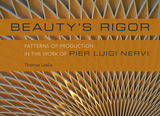 Beauty's Rigor: Patterns of Production in the Work of Pier Luigi Nervi
Thomas Leslie
University of Illinois Press, 2017 Born in Sondrio, Italy, in 1891, Pier Luigi Nervi was a pioneer in the engineering and architecture of reinforced concrete. His buildings showed how the use of reinforced concrete expanded the possibilities of form and structure. His methods, meanwhile, ingrained his structures with patterns that came directly out of his economical, manual construction processes. The results were buildings that matched awe-inspiring spans with surprisingly human scale. Beauty's Rigor offers a comprehensive overview of Nervi's long career. Drawing on the Nervi archives and a wealth of photographs and architectural drawings, Thomas Leslie explores celebrated buildings like Palazetto dello Sport built for the 1960 Rome Olympics, St. Mary's Cathedral in San Francisco, and the UNESCO headquarters in Paris. He also sheds new light on unbuilt projects such as the Pavilion of Italian Civilization for the Universal Exposition of Rome E42. What emerges is the first complete account of Nervi's contributions to modern architecture and his essential role in a revolution that realized concrete's potential to match grace with strength.
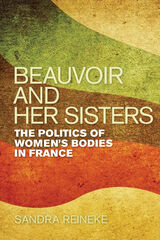 Beauvoir and Her Sisters: The Politics of Women's Bodies in France
Sandra Reineke
University of Illinois Press, 2011 Beauvoir and Her Sisters investigates how women's experiences, as represented in print culture, led to a political identity of an "imagined sisterhood" through which political activism developed and thrived in postwar France. Through the lens of women's political and popular writings, Sandra Reineke presents a unique interpretation of feminist and intellectual discourse on citizenship, identity, and reproductive rights. Drawing on feminist writings by Simone de Beauvoir, feminist reviews from the women's liberation movement, and cultural reproductions from French women's fashion and beauty magazines, Reineke illustrates how print media created new spaces for political and social ideas. This sustained study extends from 1944, when women received the right to vote in France, to 1993, when the French government outlawed anti-abortion activities. Touching on the relationship between consumer culture and feminist practice, Reineke's analysis of a selection of women's writings underlines how these texts challenged traditional gender models and ideals. In revealing that women collectively used texts to challenge the state to redress its abortion laws, Reineke renders the act of writing as a form of political action and highlights the act of reading as an essential but often overlooked space in which marginalized women could exercise dissent and create solidarity.
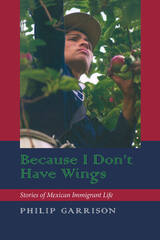 Because I Don't Have Wings: Stories of Mexican Immigrant Life
Philip Garrison
University of Arizona Press, 2006 For Mexican workers, the agricultural valleys of the inland Northwest are a long way from home. But there they have established communities, settlements recent enough that it feels like these newly arrived immigrant mexicanos are pioneers, still getting used to the Anglos and to each other. This book looks at the inner lives of Mexican immigrants in a northwestern U.S. boomtown, a loose collection of families from Michoacán and surrounding states living a mere 150 miles from Canada. They are more isolated than most mexicano communities closer to home, and they endure severe winters that make life more difficult still. Neighborhoods form, dissolve, and re-form. Family members who leave may stay in touch, but friends very often simply vanish, leaving only their nicknames behind. Without a market or a plaza, residents meet at weddings, christenings, and funerals—or at the food bank.
Philip Garrison has spent most of his life in this region and shares in vivid prose tales of immigrant life, both contemporary and historical, revealing the dual lives of first-generation Mexican immigrants who move smoothly between the Yakima Valley and their homes in Mexico. And with a scholar’s eye he examines figures of speech that reflect mexicano feelings about immigrant life, offering glimpses of adaptation through offhand remarks, family spats, and town gossip.
Written with irony but bursting with compassion, Because I Don’t Have Wings features vivid characters, telling anecdotes, and poignant reflections on life, unfolding an immigrant’s world strikingly different from the one we usually read about. Adaptation, persistence, and survival, we learn, are traits that mexicano culture values. We also learn that, over time, mexicano immigrants don’t merely adapt to the culture of el norte, they transform it.
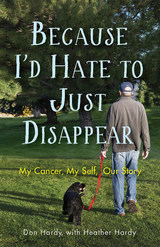 Because I'd Hate to Just Disappear: My Cancer, My Self, Our Story
Don Hardy
University of Nevada Press, 2018 “Illness, in the larger sense of mortality,” Don Hardy writes, “is an inescapable shared trait among all living creatures, and we humans know about it, whether or not we want to talk about it.”
Because I’d Hate to Just Disappear is a portrait of a husband and wife, Don and Heather Hardy, thrown into the physical and emotional machinery of Don being diagnosed with leukemia and going through chemotherapy and treatment over a period of close to two years.
In this thoughtful and exquisite account, Don and Heather narrate Don’s struggle in real-time. Disarmingly honest, they recount each intimate stage of a couple living through cancer together, the mental and physical struggles, the humor and visceral emotion to reveal how two very different personalities shape—and are shaped by—the experience of cancer and its treatment. Through these moments emerge a constant flow of human kindness and discovery that lifts them each day.
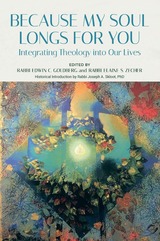 Because My Soul Longs for You: Integrating Theology into Our Lives
Rabbi Edwin C. Goldberg and Rabbi Elaine S. Zecher
Central Conference of American Rabbis, 2021 Because My Soul Longs for You seeks to answer one of the most enduring human questions: Where can we find God in our lives? While Jewish theologians have long pondered the "God question" from ethical and philosophical perspectives, the last century has made space for a more experiential theology: God is present in our lived experiences. Radical amazement, to use Rabbi Abraham Joshua Heschel's phrase, can be found in everyday life. Contributors to this volume share how they welcome God's presence into their lives, as well as the theological language they use to think and speak about this presence. Chapters explore how we experience God through prayer, text study, poetry, food, music, service, movement, meditation, interpersonal connection, and much more.
FINALIST: Foreword Reviews INDIES Book of the Year Award (Religion category)
Silver medal: Independent Publisher Book Awards (Inspirational/Spiritual category)
FINALIST: Next Generation Indie Book Awards (Spirituality category)
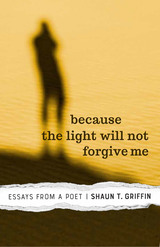 Because the Light Will Not Forgive Me: Essays from a Poet
Shaun T, Griffin
University of Nevada Press, 2019 “Think of a man walking in the desert,” writes Griffin, “looking for the path to its summit, looking for the observatory that may, at last, shed light on what’s below.” In this luminous and moving book of essays, award-winning author Shaun Griffin weaves together a poetic meditation on living meaningfully in this world. Anchored in the American West but reaching well beyond, he recounts his discoveries as a poet and devoted reader of poetry, a teacher of the disadvantaged, a friend of poets and artists, and a responsible member of the human family. Always grounded in place, be it Nevada, South Africa, North Dakota, Spain, Zimbabwe, or Mexico, Griffin confronts the world with an openness that allows him to learn and grow from the people he meets. This is a meditation on how all of us can confront our own influences to achieve wholeness in our lives. Along with Griffin, readers will reflect on how they might respond to a homeless man walking through central Nevada, viewing the open desert as Thoreau might have viewed Walden, seeing the US-Mexico border as a region of lost identity, reconciling how poets who live west of the Hudson River find anonymity to be their laurel, and experiencing how writing poetry in prison becomes lifesaving. Whether poets or places in the West or beyond, experiences with other cultures, or an acute awareness that poetry is the refuge of redress—all have influenced Griffin’s writing and thinking as a poet and activist in the Great Basin. The mindfulness of Because the Light Will Not Forgive Me demonstrates that even though the light does not forgive, it still reveals.
 Because We Must: A Memoir
Tracy Youngblom
University of Massachusetts Press, 2025 A breathtaking memoir navigating caregiving, motherhood, and letting go after a tragic accident
On March 16th, 2015, Tracy Youngblom was rushing to finish last-minute preparations for a class she would teach the next day when there was an unexpected knock at her door. Grudgingly, she answered it to find a uniformed officer standing on her front porch. Youngblom realized then that her youngest son Elias should have been arriving home from a trip to Fargo where he was visiting friends at North Dakota State University. The officer told her that Elias had been in an accident and was in the hospital. Later, she learned that his car had been struck nearly head on by a drunk driver going 70 miles per hour. Denial and shock took over as she made the long drive from their home in Coon Rapids, Minnesota. When she saw Elias in the ICU—swollen beyond recognition, covered in stitches, with a myriad of tubes attached to him—the full gravity of the situation descended.
On the day of the crash, Elias had been driving back to Coon Rapids to celebrate National Ice Cream Day with friends. An avid lover of music, he’d been working as a conductor while wrapping up his degree, moving toward his dream of becoming a marching band director. After the accident, Elias begins his long journey of recovery, which is set back when doctors announce that his optic nerves are dead. Despite it all, Elias never wavers, approaching each challenge with resilience, grace, and humor.
Alongside Elias, Youngblom faces her own challenges, staying by his side in the ICU for weeks, coordinating with other family members and friends, and never flagging in her care of her severely injured son, yet all the while coping with her own emotions, fears, and trauma. She struggles to support Elias, heal her self, and let him go on with his life. In this riveting memoir, Youngblom traverses her family’s lives before and after the accident, capturing the complications of grief, recovery, and the strength it takes to move forward—because we must.
Because What Else Could I Do: Poems
Martha Collins
University of Pittsburgh Press, 2019 Winner of the 2020 Poetry Society of America's William Carlos Williams Award
Because What Else Could I Do is a sequence of fifty-five untitled short poems, almost all of them addressed to the poet’s husband during the six months following his sudden and shocking death. Perhaps best known for her historical explorations of sociopolitical issues, Martha Collins did not originally intend to publish these poems. But while they are intensely personal, they make use of all of her poetic attention and skills. Spare, fragmented, musical even in their most heartbreaking moments, the poems allow the reader to share both an intimate expression the poet’s grief and a moving record of her attempt to comprehend the events surrounding her loss.
 Because You Have To: A Writing Life
Joan Frank
University of Notre Dame Press, 2012
Part memoir, part handbook, part survey of the contemporary literary scene, Joan Frank’s Because You Have To: A Writing Life is a collection of essays that, taken together, provide a walking tour of the writing life. Frank’s aim is to form a coherent vision, one that may provide some communion about realities of the writer's vocation that have struck her as rarely revealed.
Frank offers what she has learned as a writer not only to other writers, but to those to whom good writing matters. Her insights about "thinking on paper" are never dogmatic or pontifical; rather, they are cordial and intellectually welcoming.
Original, witty, and practical, Frank ably steers us through the journey of her own life as a writer, as well as through the careers and work of other writers. Her subjects range widely, from the “boot camp” conditioning of marketing work to squaring off with rejection and envy; from sustaining belief in art’s necessity to the baffling subjectivity of literary perception and the magical books that nourish writers. Frank’s personal journey is wonderfully told, so that what in these essays is particular becomes useful and universal.
"Once in a blue moon a book on writing comes along that reads as though it's speaking directly to you. Because You Have To is just that: an honest and wise and brave account of what it means to be a writer in this odd, new century. I recommend to you this rare thing, a book packed full of useful information that is also a work of art." —John McNally, author of After the Workshop
"What I treasure is Joan Frank’s voice, placed so beautifully in concert with those of a multitude of writers in our tradition. She has turned research into art and advice into song. No matter where you are in your artistic evolution, you will appreciate this writer blues, writer-opera, writer-jazz." —David Huddle, author of La Tour Dreams of the Wolf Girl and Nothing Can Make Me Do This
"Wittily, elegantly, disputatiously, passionately, Joan Frank lays bare the paradox-ridden psychology of the artistic vocation. She has a wised-up and intimate knowledge of the writing life's curriculum: doubt, fear, anticipation, rejection, recovery. Here is a writer speaking from the heart. Because You Have To delivers hard-won recognitions with an almost disconcerting fluency." —Sven Birkerts, author of The Gutenberg Elegies: The Fate of Reading in an Electronic Age and The Other Walk: Essays
"Poignant and witty, trenchant and tender, lament and celebration—wisdom deeply honed, in beautifully crafted sentences. A companion volume in the truest sense: a book for writers at every stage, through every mood of the writing life." —Noelle Oxenhandler, author of The Wishing Year and The Eros of Parenthood
"On every page of these stunning essays, Frank lays bare the hardest truths of being a writer, and on every page she confesses her hopeless, passionate love for the pursuit. The artist’s conundrum has rarely been so eloquently voiced. Part erudite treatise, part love letter, Because You Have To is certain to find myriad ardent admirers of its own." —Robin Black, author of If I Loved You, I Would Tell You This
"There are craft books. There are "Just do it" books. There are memoirs. But Because You Have To is the story of what it is like to be a real literary writer in the 21st century, a story about time, money, desire, anxiety, and (complicated) community. It's about loving books, writing, and art. Occupational hazards of the writing life? Many. Pleasures for the reader? Plenty—if Joan Frank is the writer, and Because You Have To is the book." —Debra Spark, author of The Pretty Girl <
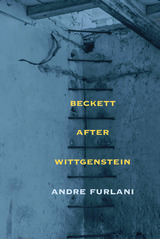 Beckett after Wittgenstein
Andre Furlani
Northwestern University Press, 2015 Among the best-represented authors in Samuel Beckett’s library was Ludwig Wittgenstein, yet the philosopher’s relevance to the Nobel laureate’s work is scarcely acknowledged and seldom elucidated. Beckett after Wittgenstein is the first book to examine Beckett’s formative encounters with, and profound affinities to, Wittgenstein’s thought, style, and character. While a number of influential critics, including the philosopher Alain Badiou, have discerned a transition in Beckett’s work beginning in the late 1950s, Furlani is the first to identify and clarify how this change occurs in conjunction with the writer’s sustained engagement with Wittgenstein’s thought on, for example, language, cognition, subjectivity, alterity, temporality, belief, hermeneutics, logic, and perception. Drawing on a wealth of Beckett’s archival materials, much of it unpublished, Furlani’s study reveals the extent to which Wittgenstein fostered Beckett’s views and emboldened his purposes.
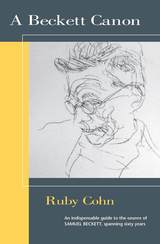 A Beckett Canon
Ruby Cohn
University of Michigan Press, 2005 Samuel Beckett is unique in literature. Born and educated in Ireland, he lived most of his life in Paris. His literary output was rendered in either English or French, and he often translated one to the other, but there is disagreement about the contents of his bilingual corpus. A Beckett Canon by renowned theater scholar Ruby Cohn offers an invaluable guide to the entire corpus, commenting on Beckett's work in its original language.
Beginning in 1929 with Beckett's earliest work, the book examines the variety of genres in which he worked: poems, short stories, novels, plays, radio pieces, teleplays, reviews, and criticism. Cohn grapples with the difficulties in Beckett's work, including the opaque erudition of the early English verse and fiction, and the searching depths and syntactical ellipsis of the late works.
Specialist and nonspecialist readers will find A Beckett Canon valuable for its remarkable inclusiveness. Cohn has examined the holdings of all of the major Beckett depositories, and is thus able to highlight neglected manuscripts and correct occasional errors in their listings. Intended as a resource to accompany the reading of Beckett's writing--in English or French, published or unpublished, in part or as a whole--the book offers context, information, and interpretation of the work of one of the last century's most important writers.
Ruby Cohn is Professor Emerita of Comparative Drama, University of California, Davis. She is author or editor of many books, including Anglo-American Interplay in Recent Drama; Retreats from Realism in Recent English Drama; From Desire to Godot; and Just Play: Beckett's Theater.
 Beckett’s Art of Mismaking
Leland de la Durantaye
Harvard University Press, 2016 Readers have long responded to Samuel Beckett’s novels and plays with wonder or bafflement. They portray blind, lame, maimed creatures cracking whips and wielding can openers who are funny when they should be chilling, cruel when they should be tender, warm when most wounded. His works seem less to conclude than to stop dead. And so readers quite naturally ask: what might all this be meant to mean?
In a lively and enlivening study of a singular creative nature, Leland de la Durantaye helps us better understand Beckett’s strangeness and the notorious difficulties it presents. He argues that Beckett’s lifelong campaign was to mismake on purpose—not to denigrate himself, or his audience, nor even to reconnect with the child or the savage within, but because he believed that such mismaking is in the interest of art and will shape its future. Whether called “creative willed mismaking,” “logoclasm,” or “word-storming in the name of beauty,” Beckett meant by these terms an art that attacks language and reason, unity and continuity, art and life, with wit and venom.
Beckett’s Art of Mismaking explains Beckett’s views on language, the relation between work and world, and the interactions between stage and page, as well as the motives guiding his sixty-year-long career—his strange decision to adopt French as his literary language, swerve from the complex novels to the minimalist plays, determination to “fail better,” and principled refusal to follow any easy path to originality.
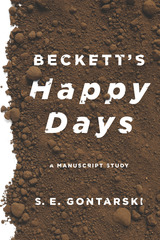 Beckett’s Happy Days: A Manuscript Study
S. E. Gontarski
Ohio State University Press, 2017 Beckett’s Happy Days: A Manuscript Study by S. E. Gontarski traces the development of Samuel Beckett’s final two-act play, composed in English between October 1960 and May 1961, through annotated and bedoodled manuscript notebooks, holographs, and typescript drafts to the final published and performed text. The analysis details Beckett’s most salient alterations and revisions, including his development of the work’s tapestry of fragmented, half-remembered literary allusions.
The current reissue of Beckett’s Happy Days comes at a timely moment not only in Beckett studies but also in the general growth in programs of book history and digital humanities. Gontarski’s study is not just a look back to origins. It traces an arc of research that developed over forty years as the Samuel Beckett archive at the University of Reading matured, as the fields of genetic and textual research grew, and as book history reemerged on a grand, international scale. In this timeframe, the Beckett Digital Manuscript and Library Projects responded to interest in Beckett studies and archival studies, taking textual production, genetic study, and book history into the twenty-first century with their emphasis on electronic access and digital collation. At The Ohio State University, the Rare Books and Manuscripts archive held papers central to Gontarski’s study. Beckett’s Happy Days is thus a fundamental, even seminal, part of that forty-year scholarly trajectory, and in its current edition, is readily accessible to individual students and scholars alike.
The Beckoning World: A Novel
Douglas Bauer
University of Iowa Press, 2022 The Beckoning World is set in the first quarter of the twentieth century and follows Earl Dunham. His weeks are comprised of six days mining coal, followed by Sundays playing baseball. Then one day a major-league scout happens on a game, signs Earl, and he begins a life he had no idea he could even dream.
But dreams sometimes suffer from a lovely abundance, and in Earl’s case her name is Emily Marchand. They fall quickly and deeply in love, but with that love comes heartbreaking complications.
The Beckoning World gathers a cast of characters that include Babe Ruth and Lou Gehrig; a huge-hearted Pullman steward offering aphoristic wisdom; and countless others, not least of which is the 1918 Spanish flu taking vivid spectral form. At the center is a relentless love that Earl and Emily are defenseless against, allied as they are “in this business of their hearts.”
Become Like the Angels
Benjamin P. Blosser
Catholic University of America Press, 2012 Become Like the Angels explores Origen's legacy and, in particular, his teachings about the origin, nature, and destiny of the human person. By way of a historical critical approach, Benjamin P. Blosser discusses the influence of Middle Platonic philosophy on the human soul and then compares it with Origen's teaching.
 Become Ungovernable: An Abolition Feminist Ethic for Democratic Living
H.L.T. Quan
Pluto Press, 2004 'Phenomenal ... Offers us possibilities for rescuing the concept of democracy from its fatal entanglement with racial, heteropatriarchal capitalism' -- Angela Y. Davis
'Embraces the unruliness of collective struggle, and recognizes freedom not as a destination but practice—an abolitionist, feminist, anticapitalist, antiracist, radically inclusive practice' -- Robin D.G. Kelley, author of Freedom Dreams
'A compelling and inspiring book that belongs in our movements and our classrooms' -- Chandra Talpade Mohanty, author of Feminism Without Borders
'An elegantly written masterpiece' -- Barbara Ransby, author of Making All Black Lives Matter
Become Ungovernable is a provocative new work of political thought setting out to reclaim “freedom”, “justice”, and “democracy”, revolutionary ideas that are all too often warped in the interests of capital and the state. Revealing the mirage of mainstream democratic thought and the false promises of liberal political ideologies, H.L.T. Quan offers an alternative approach: an abolition feminism drawing on a kaleidoscope of refusal praxes, and on a deep engagement with the Black Radical Tradition and queer analytics.
With each chapter anchored by episodes from the long history of resistance and rebellions against tyranny, Quan calls for us to take up a feminist ethic of living rooted in the principles of radical inclusion, mutuality and friendship as part of the larger toolkit for confronting fascism, white supremacy, and the neoliberal labor regime.
H.L.T. Quan is a political theorist, award-winning filmmaker and Associate Professor of Justice and Social Inquiry in the School of Social Transformation at Arizona State University. Quan is the author of Growth Against Democracy and editor of Cedric J. Robinson.
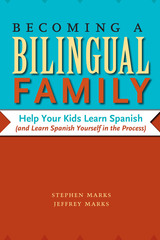 Becoming a Bilingual Family: Help Your Kids Learn Spanish (and Learn Spanish Yourself in the Process)
By Stephen Marks and Jeffrey Marks
University of Texas Press, 2013 Would you like your children to grow up bilingual, even if you aren’t yet? Then speak to your kids in Spanish as you learn the language along with them. Becoming a Bilingual Family gives English-speaking parents the tools to start speaking Spanish with their kids in their earliest years, when children are most receptive to learning languages. It teaches the vocabulary and idioms for speaking to children in Spanish and offers practical, proven ways to create a language-learning environment at home. The first part of the book introduces parents to many resources—books, audio books, music, television, computer programs, childcare workers, school, and friends—that can help you establish a home environment conducive to the acquisition of Spanish. The second part is a Spanish phrasebook that takes you through all the typical activities that parents and children share, from getting up in the morning to going to bed at night. Few, if any, other Spanish study aids provide this much vocabulary and guidance for talking to small children about common daily activities. The authors also include a quick course in Spanish pronunciation and enough grammar to get a parent started. Spanish-language resources, kids’ names in Spanish, and an easy-to-use index and glossary complete the book. Take the Markses’ advice and start talking to your kids in Spanish, even if it’s not perfect. You’ll learn the language together and share the excitement of discovering the peoples and cultures that make up the Spanish-speaking world.
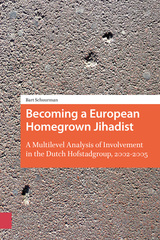 Becoming a European Homegrown Jihadist: A Multilevel Analysis of Involvement in the Dutch Hofstadgroup, 2002-2005
Bart Schuurman
Amsterdam University Press, 2018 How and why do people become involved in European homegrown jihadism? This book addresses this question through an in-depth study of the Dutch Hofstadgroup, infamous for containing the murderer of filmmaker Theo van Gogh, who was killed in November 2004 in Amsterdam, and for plotting numerous other terrorist attacks. The Hofstadgroup offers a window into the broader phenomenon of homegrown jihadism that arose in Europe in 2004 and is still with us today. Utilizing interviews with former Hofstadgroup participants and the extensive police files on the group, Becoming a European Homegrown Jihadist overcomes the scarcity of high-quality data that has hampered the study of terrorism for decades. The book advances a multicausal and multilevel understanding of involvement in European homegrown jihadism that is critical of the currently prevalent 'radicalization'-based explanatory frameworks. It stresses that the factors that initiate involvement are separate from those that sustain it, which in turn are again likely to differ from those that bring some individuals to actual acts of terrorism. This is a key resource for scholars of terrorism and all those interested in understanding the pathways that can lead to involvement in European homegrown jihadism.
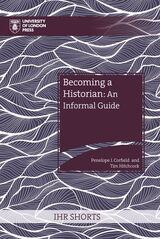 Becoming a Historian: An Informal Guide
Edited by Penelope J. Corfield and Tim Hitchcock
University of London Press, 2022 An accessible guide to completing research projects and building a career as a practicing historian.
Writing history is both an art and a craft. This handbook is designed as an instructional guide to support students, independent scholars, and more. Becoming a Historian guides prospective historians on how best to participate in this vibrant community of scholars. This friendly guide will teach readers how to design research projects, how to differentiate between quantitative and qualitative research methodologies, and how to follow a project through to a positive conclusion. Becoming a Historian is also frank about the pains and pleasures of sticking with a long-term project. Finally, this guide explains how to present original research to wider audiences, including the appropriate use of social media, the art of public lecturing, and strategies for publication.
Written by esteemed historians Penelope J. Corfield and Tim Hitchcock, who bring more than forty years of collective experience to the project, Becoming a Historian explodes the myths and systems that can make the world of research seem intimidating. Instead, this guide offers step-by-step advice designed to make it easier to join this community of scholarship.
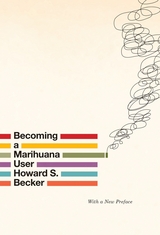 Becoming a Marihuana User
Howard S. Becker
University of Chicago Press, 2015 OG Kush. Sour Diesel. Wax, shatter, and vapes. Marijuana has come a long way since its seedy days in the back parking lots of our culture. So has Howard S. Becker, the eminent sociologist, jazz musician, expert on “deviant” culture, and founding NORML board member. When he published Becoming a Marihuana User more than sixty years ago, hardly anyone paid attention—because few people smoked pot. Decades of Cheech and Chong films, Grateful Dead shows, and Cannabis Cups later, and it’s clear—marijuana isn’t just an established commodity, it’s an entire culture. And that’s just the thing—Becker totally called it: pot has everything to do with culture. It’s not a blight on culture, but a culture itself—in fact, you’ll see in this book the first use of the term “users,” rather than “abusers” or “addicts.” Come along on this short little study—now a famous timestamp in weed studies—and you will be astonished at how relevant it is to us today.
Becker doesn’t judge, but neither does he holler for legalization, tell you how to grow it in a hollowed-out dresser, or anything else like that for which there are plenty of other books you can buy. Instead, he looks at marijuana with a clear sociological lens—as a substance that some people enjoy, and that some others have decided none of us should. From there he asks: so how do people decide to get high, and what kind of experience do they have as a result of being part of the marijuana world? What he discovers will bother some, especially those who proselytize the irrefutably stunning effects of the latest strain: chemistry isn’t everything—the important thing about pot is how we interact with it. We learn to be high. We learn to like it. And from there, we teach others, passing the pipe in a circle that begins to resemble a bona fide community, defined by shared norms, values, and definitions just like any other community.
All throughout this book, you’ll see the intimate moments when this transformation takes place. You’ll see people doing it for the first time and those with considerable experience. You’ll see the early signs of the truths that have come to define the marijuana experience: that you probably won’t get high at first, that you have to hold the hit in, and that there are other people here who are going to smoke that, too.
 Becoming a Marihuana User
Howard S. Becker
University of Chicago Press, 2015 This is an auto-narrated audiobook version of this book.
OG Kush. Sour Diesel. Wax, shatter, and vapes. Marijuana has come a long way since its seedy days in the back parking lots of our culture. So has Howard S. Becker, the eminent sociologist, jazz musician, expert on “deviant” culture, and founding NORML board member. When he published Becoming a Marihuana User more than sixty years ago, hardly anyone paid attention—because few people smoked pot. Decades of Cheech and Chong films, Grateful Dead shows, and Cannabis Cups later, and it’s clear—marijuana isn’t just an established commodity, it’s an entire culture. And that’s just the thing—Becker totally called it: pot has everything to do with culture. It’s not a blight on culture, but a culture itself—in fact, you’ll see in this book the first use of the term “users,” rather than “abusers” or “addicts.” Come along on this short little study—now a famous timestamp in weed studies—and you will be astonished at how relevant it is to us today.
Becker doesn’t judge, but neither does he holler for legalization, tell you how to grow it in a hollowed-out dresser, or anything else like that for which there are plenty of other books you can buy. Instead, he looks at marijuana with a clear sociological lens—as a substance that some people enjoy, and that some others have decided none of us should. From there he asks: so how do people decide to get high, and what kind of experience do they have as a result of being part of the marijuana world? What he discovers will bother some, especially those who proselytize the irrefutably stunning effects of the latest strain: chemistry isn’t everything—the important thing about pot is how we interact with it. We learn to be high. We learn to like it. And from there, we teach others, passing the pipe in a circle that begins to resemble a bona fide community, defined by shared norms, values, and definitions just like any other community.
All throughout this book, you’ll see the intimate moments when this transformation takes place. You’ll see people doing it for the first time and those with considerable experience. You’ll see the early signs of the truths that have come to define the marijuana experience: that you probably won’t get high at first, that you have to hold the hit in, and that there are other people here who are going to smoke that, too.
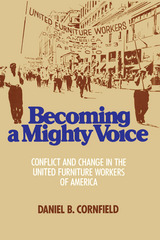 Becoming a Mighty Voice
Daniel Cornfield
Russell Sage Foundation, 1989 American labor unions resemble private representative democracies, complete with formally constituted conventions and officer election procedures. Like other democratic institutions, unions have repeatedly experienced highly charged conflicts over the integration of ethnic minorities and women into leadership positions. In Becoming a Mighty Voice, Daniel B. Cornfield traces the 55-year history of the United Furniture Workers of America (UFWA), describing the emergence of new social groups into union leadership and the conditions that encouraged or inhibited those changes. This vivid case history explores leadership change during eras of union growth, stability, and decline, not simply during isolated episodes of factionalism. Cornfield demonstrates that despite the strong forces perpetuating existing union hierarchies, leadership turnover is just as likely as leadership stagnation. He also shows that factors external to the union may influence leadership change; periods of turnover in the UFWA leadership reflected employer efforts to find cheap, non-union labor, as well as union efforts to unionize workers. When unions are threatened by intensified conflict with employers and when entrenched high status groups within the union are obliged to recruit members of lower socioeconomic status, then new social groups are likely to be integrated into union leadership. Becoming a Mighty Voice develops a theory of leadership change that will be of interest to many engaged in the labor, civil rights, and women's movements as well as to sociologists or historians of work, gender, and race, and to students of political and organizational behavior.
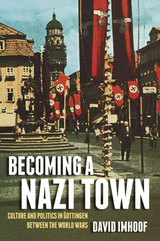 Becoming a Nazi Town: Culture and Politics in Göttingen between the World Wars
David Imhoof
University of Michigan Press, 2013 Becoming a Nazi Townreveals the ways in which ordinary Germans changed their cultural lives and their politics from the mid-1920s to the mid-1930s. Casting the origins of Nazism in a new light, David Imhoof charts the process by which Weimar and Nazi culture flowed into each other. He analyzes this dramatic transition by looking closely at three examples of everyday cultural life in the mid-sized German city of Göttingen: sharpshooting, an opera festival, and cinema. Imhoof draws on individual and community experiences over a series of interwar periods to highlight and connect shifts in culture, politics, and everyday life. He demonstrates how Nazi leaders crafted cultural policies based in part on homegrown cultural practices of the 1920s and argues that overdrawn distinctions between “Weimar” and “Nazi” culture did not always conform to most Germans’ daily lives. Further, Imhoof presents experiences in Göttingen as a reflection of the common reality of many German towns beyond the capital city of Berlin.
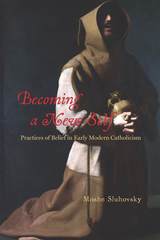 Becoming a New Self: Practices of Belief in Early Modern Catholicism
Moshe Sluhovsky
University of Chicago Press, 2017 In Becoming a New Self, Moshe Sluhovsky examines the diffusion of spiritual practices among lay Catholics in early modern Europe. By offering a close examination of early modern Catholic penitential and meditative techniques, Sluhovsky makes the case that these practices promoted the idea of achieving a new self through the knowing of oneself.
Practices such as the examination of conscience, general confession, and spiritual exercises, which until the 1400s had been restricted to monastic elites, breached the walls of monasteries in the period that followed. Thanks in large part to Franciscans and Jesuits, lay urban elites—both men and women—gained access to spiritual practices whose goal was to enhance belief and create new selves. Using Michel Foucault’s writing on the hermeneutics of the self, and the French philosopher’s intuition that the early modern period was a moment of transition in the configurations of the self, Sluhovsky offers a broad panorama of spiritual and devotional techniques of self-formation and subjectivation.
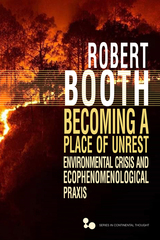 Becoming a Place of Unrest: Environmental Crisis and Ecophenomenological Praxis
Robert Booth
Ohio University Press, 2021 The key to mitigating the environmental crisis isn’t just based on science; it depends upon a profound philosophical revision of how we think about and behave in relation to the world. Our ongoing failure to interrupt the environmental crisis in a meaningful way stems, in part, from how we perceive the environment—what Robert Booth calls the "more-than-human world.” Anthropocentric presumptions of this world, inherited from natural science, have led us to better scientific knowledge about environmental problems and more science-based—yet inadequate—practical “solutions.” That’s not enough, Booth argues. Rather, he asserts that we must critically and self-reflexively revise how we perceive and consider ourselves within the more-than-human world as a matter of praxis in order to arrest our destructive impact on it. Across six chapters, Booth brings ecophenomenology—environmentally focused phenomenology—into productive dialogue with a rich array of other philosophical approaches, such as ecofeminism, new materialism, speculative realism, and object-oriented ontology. The book thus outlines and justifies why and how a specifically ecophenomenological praxis may lead to the disruption of the environmental crisis at its root. Booth’s observations and arguments make the leap from theory to practice insofar as they may influence how we fundamentally grasp the environmental crisis and what promising avenues of practical activism might look like. In Booth’s view, this is not about achieving a global scientific consensus regarding the material causes of the environmental crisis or the responsible use of “natural resources.” Instead, Booth calls for us to habitually resist our impetus to uncritically reduce more-than-human entities to “natural resources” in the first place. As Booth recognizes, Becoming a Place of Unrest cannot and does not tell us how we should act. Instead, it outlines and provides the basic means by which to instill positive and responsible conceptual and behavioral relationships with the rest of the world. Based on this, there is hope that we may begin to develop more concrete, actionable policies that bring about profound and lasting change.
Becoming a Poet: Elizabeth Bishop with Marianne Moore and Robert Lowell
David Kalstone
University of Michigan Press, 2001 Becoming a Poet traces the evolution of Elizabeth Bishop's poetic career through her friendships with other poets, notably Marianne Moore and Robert Lowell. Published in 1989 following critic David Kalstone's death, with the help of a number of his friends and colleagues, it was greeted with uniformly enthusiastic praise. Hailed at that time as "one of the most sensitive appreciations of Elizabeth Bishop's genius ever composed" and "a first-rate piece of criticism" and "a masterpiece of understanding about friendship and about poetry," it has been largely unavailable in recent years.
Becoming a Psychotherapist: A Clinical Primer
Rosemary Marshall Balsam and Alan Balsam
University of Chicago Press, 1984 This well-respected guide to psychoanalytic psychotherapy addresses key issues for both beginning and practicing therapists, from the rhythm of the initial, middle, and final stages of therapy to the setting up of an office and the handling of fees and insurance. The book also deals with the management of borderline and potentially suicidal or homocidal patients in an out-patient setting. Unique in their direct approach to problems in a therapist's own life, the authors also discuss transference and contertransference issues that arise with pregnancy, changes in the therapist's love attachments, age, illness and a death in the practitioner's family. New in this second edition is a chapter on women therapists and women patients.
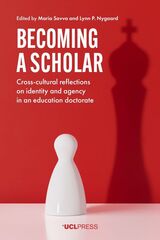 Becoming a Scholar: Cross-Cultural Reflections on Identity and Agency in an Education Doctorate
Edited by Maria Savva and Lynn P. Nygaard
University College London, 2021 A window into the lives of nine non-traditional doctoral students and their journeys to become scholars.
This book provides a window into the lives of nine non-traditional doctoral students. As mature, part-time, international students enrolled in a professional doctorate program, the students reflect on the transformation process of becoming scholars, as their narratives provide breadth and depth to themes that represent a diverse cross-section of cultures, identities, and communities. The volume brings the “human face” behind the doctoral journey to the forefront, as the narratives draw much-needed attention to the personal journey that inevitably parallels and intersects with the academic journey. Although the narratives are drawn from a professional doctor-in-education program based in the United Kingdom, the struggles will resonate with a much wider range of doctoral students and academics, sparking lively discussion, debate, and reflection. A must-read for students preparing to embark on the doctoral journey, this book will be essential reading for leaders of doctoral programs who wish to equip students with important knowledge about the challenges ahead.
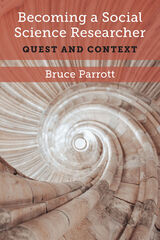 Becoming a Social Science Researcher: Quest and Context
Bruce Parrott
University of Michigan Press, 2023 Becoming a Social Science Researcher is designed to help aspiring social scientists, including credentialed scholars, understand the formidable complexities of the research process. Instead of explaining specific research techniques, it concentrates on the philosophical, sociological, and psychological dimensions of social research. These dimensions have received little coverage in guides written for social science researchers, but they are arguably even more important than particular analytical techniques. Truly sophisticated social science scholarship requires that the researcher understand the intellectual and social contexts in which they collect and interpret information. While social science training in US graduate schools has become more systematic over the past two decades with numerous publications aimed at instruction, training and guidance still fall short in addressing the fundamental needs of this field.
 Becoming a Visible Man: Second Edition
Jamison Green
Vanderbilt University Press, 2020 At least two generations of transgender, nonbinary, and gender-nonconforming people have emerged since Becoming a Visible Man was first published in 2004, but the book remains a beloved resource for trans people and their allies.
Since the first edition's publication, author Jamison Green's writings and advocacy among business and governmental organizations around the world have led to major changes in the fields of law, medicine, and social policy, and his (mostly invisible) work has had significant effects on trans people globally. This new edition captures the changes of the last two decades, while also imparting a message of self-acceptance and health.
With profoundly personal and eminently practical threads, Green clarifies transgender experience for transgender people and their families, friends, and coworkers. Medical and mental health care providers, educators, business leaders, and advocates seeking information about transgender concerns can all gain from Green's integrative approach to the topic. This book candidly addresses emotional relationships that are affected by a transition, and brings refined integrity to the struggle to self-define, whether one undergoes a transition or chooses not to.
Emphasizing the lives of transgender men—who are often overlooked—he elucidates the experience of masculinity in a way that is self-assured and inclusive of feminist values. Green's inspirational wisdom has informed and empowered thousands of readers. There is still no other book like Becoming a Visible Man in the transgender canon.
 Becoming a Visible Man: Second Edition
Jamison Green
Vanderbilt University Press, 2020 At least two generations of transgender, nonbinary, and gender-nonconforming people have emerged since Becoming a Visible Man was first published in 2004, but the book remains a beloved resource for trans people and their allies.
Since the first edition's publication, author Jamison Green's writings and advocacy among business and governmental organizations around the world have led to major changes in the fields of law, medicine, and social policy, and his (mostly invisible) work has had significant effects on trans people globally. This new edition captures the changes of the last two decades, while also imparting a message of self-acceptance and health.
With profoundly personal and eminently practical threads, Green clarifies transgender experience for transgender people and their families, friends, and coworkers. Medical and mental health care providers, educators, business leaders, and advocates seeking information about transgender concerns can all gain from Green's integrative approach to the topic. This book candidly addresses emotional relationships that are affected by a transition, and brings refined integrity to the struggle to self-define, whether one undergoes a transition or chooses not to.
Emphasizing the lives of transgender men—who are often overlooked—he elucidates the experience of masculinity in a way that is self-assured and inclusive of feminist values. Green's inspirational wisdom has informed and empowered thousands of readers. There is still no other book like Becoming a Visible Man in the transgender canon.
 Becoming a Visually Reflective Practitioner: An Integrated Self-Study Model for Professional Practice
Sheri R. Klein and Kathy Marzilli Miraglia
Intellect Books, 2024 A consideration of how self-study using arts-based methods can enable purposeful reflection toward understanding and envisioning professional practice.
Professional practice is increasingly becoming more complex, demanding, dynamic, and diverse, and the fluctuating nature of professional practice necessitates the pursuit of discernment and clarity through ongoing reflective practice. Ideal for visual arts practitioners of all levels, this book presents a self-study model grounded in compelling research that highlights arts-based methods for examining four areas of professional practice: professional identities, work cultures, change and transitions, and new pathways.
Each chapter focuses on a component of the self-study model and an area of professional practice. Additional chapters are devoted to artistic materials and research methods for interpreting self-study artifacts with the aim of goal setting. Throughout the text, charts and end-of-chapter prompts summarize key points, and images by visual arts practitioners represent a wide range of artistic media, methods, and approaches appropriate for self-study. The appendices provide additional resources for enhanced understanding of chapter concepts and key terms, guidelines, and rubrics for writing reflections, creating visual responses, and using a visual journal in the self-study process.
 Becoming African Americans: Black Public Life in Harlem, 1919–1939
Clare Corbould
Harvard University Press, 2009 In 2000, the United States census allowed respondents for the first time to tick a box marked “African American” in the race category. The new option marked official recognition of a term that had been gaining currency for some decades. Africa has always played a role in black identity, but it was in the tumultuous period between the two world wars that black Americans first began to embrace a modern African American identity.
Following the great migration of black southerners to northern cities after World War I, the search for roots and for meaningful affiliations became subjects of debate and display in a growing black public sphere. Throwing off the legacy of slavery and segregation, black intellectuals, activists, and organizations sought a prouder past in ancient Egypt and forged links to contemporary Africa. In plays, pageants, dance, music, film, literature, and the visual arts, they aimed to give stature and solidity to the American black community through a new awareness of the African past and the international black world. Their consciousness of a dual identity anticipated the hyphenated identities of new immigrants in the years after World War II, and an emerging sense of what it means to be a modern American.
 Becoming Alcoholic: Alcoholics Anonymous and the Reality of Alcoholism
David R. Rudy. Foreword by Norman K. Denzin
Southern Illinois University Press, 1986
Affiliation with Alcoholics Anonymous parallels religious conversion, according to David R. Rudy in this timely study of the most famous self-help organization in the world.
Drinkers who commit themselves to Alcoholics Anonymous embrace the radically different life-style, the altered world of the convert.
To understand this conversion and, more important, to get a grip on the even deeper mystery of alcoholism itself, Rudy sought to answer these three questions: What processes are involved in becoming alcoholic? How does the alcoholic affiliate with, and become committed to, A. A.’s belief system? What is the relationship between the world of A. A. members and that constructed by alcohologists?
Rudy establishes the history and structure of A. A. and examines the organization’s relationship to dominant sociological models, theories, and definitions of alcoholism.
 Becoming America: The Revolution before 1776
Jon Butler
Harvard University Press, 2000 Winner of the John G. Cawelti Award, Popular Culture Association and American Culture Association
“We must congratulate Butler for [bringing] under control [a] profusion of scholarship and [making] sense of it in fewer than 250 pages. His book is a tour de force…Compelling and readable.”—Gordon S. Wood, New Republic
“Americans today think of the colonial period, if at all, as a time remote from modern America, in which society was unimaginably different from ours. Butler argues persuasively that America during the late colonial period…displayed distinctive traits of modern America, among them vigorous religious pluralism, bewildering ethnic diversity, tremendous inequalities of wealth, and a materialistic society with pervasively commercial values.”—Kirkus Reviews
Multinational, profit-driven, materialistic, power-hungry, religiously plural: America today—and three hundred years ago. Jon Butler’s panoramic view of the mainland American colonies after 1680 transforms our customary picture of pre-Revolutionary America; it reveals a strikingly “modern“ character that belies the eighteenth-century quaintness fixed in history. Stressing the middle and late decades (the hitherto “dark ages”) of the American colonial experience, Butler shows us vast revolutionary changes in a society that, for ninety years before 1776, was already becoming America.
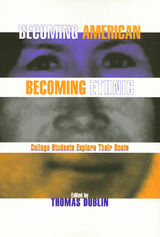 Becoming American Becoming Ethnic
edited by Thomas Dublin
Temple University Press, 1996 More than at any time since the 1920's the issues of immigration and ethnicity have become central to discussions of American society and identity. Becoming American, Becoming Ethnic addresses this contemporary debate, bringing together essays written over the past eighteen years by college students exploring their ethnic roots—from the experiences of their forbears to the place of ethnicity in their lives. The students range from descendants of Europeans whose families immigrated several generations ago to Asian and Latin American immigrants of more recent decades to African-Americans and Hispanics—some have more than one ethnic heritage to grapple with, while others have migrated from one place to another within the United States. Together their voices create a dialogue about the interplay of ethnic traditions and values with American culture. These are moving personal reflections on the continuities and changes in the ethnic experience in the United States and on the evolving meaning of ethnicity over time and across generations. Despite vocal concerns in recent years about ethnic divisiveness, these student writings show how much many young Americans share even in their differences.
In the series Critical Perspectives on the Past, edited by Susan Porter Benson, Stephen Brier, and Roy Rosenzweig.
Becoming American: The Early Arab Immigrant Experience
Alixa Naff
Southern Illinois University Press, 1993 A unique study in American immigration and assimilation history that also provides a special view of one of the smaller ethnic groups in American society. Naff focuses on the pre-World War I pioneering generation of Arabic-speaking immigrants, the generation that set the patterns for settlement and assimilation. Unlike many immigrants who were drawn to the United States by dreams of industrial jobs or to escape religious or economic persecution, most of these artisans and owners of small, disconnected plots of land came to America to engage in the enterprise of peddling. Most planned to stay two or three years and return to their homelands.
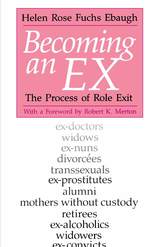 Becoming an Ex: The Process of Role Exit
Helen Rose Fuchs Ebaugh
University of Chicago Press, 1988 The experience of becoming an ex is common to most people in modern society. Unlike individuals in earlier cultures who usually spent their entire lives in one marriage, one career, one religion, one geographic locality, people living in today's world tend to move in and out of many roles in the course of a lifetime. During the past decade there has been persistent interest in these "passages" or "turning points," but very little research has dealt with what it means to leave behind a major role or incorporate it into a new identity. Helen Rose Fuchs Ebaugh's pathbreaking inquiry into the phenomenon of becoming an ex reveals the profundity of this basic aspect of establishing an identity in contemporary life.
Ebaugh is herself an ex, having left the life of a Catholic nun to become a wife, mother, and professor of sociology. Drawing on interviews with 185 people, Ebaugh explores a wide range of role changes, including ex-convicts, ex-alcoholics, divorced people, mothers without custody of their children, ex-doctors, ex-cops, retirees, ex-nuns, and—perhaps most dramatically—transsexuals. As this diverse sample reveals, Ebaugh focuses on voluntary exits from significant roles. What emerges are common stages of the role exit process—from disillusionment with a particular identity, to searching for alternative roles, to turning points that trigger a final decision to exit, and finally to the creation of an identify as an ex.
Becoming an Ex is a challenging and influential study that will be of great interest to sociologists, mental health counselors, members of self-help groups such as Alcoholics Anonymous and Parents Without Partners, those in corporate settings where turnover has widespread implications for the organization, and for anyone struggling through a role exit who is trying to establish a new sense of self.
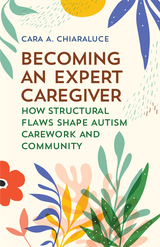 Becoming an Expert Caregiver: How Structural Flaws Shape Autism Carework and Community
Cara A. Chiaraluce
Rutgers University Press, 2025 “The hardest thing is dealing with the rest of the world. And we kind of accommodate our lives around that. But the rest of the world doesn’t.” These poignant words were spoken by Charlotte, a mother and primary caregiver of a five-year-old autistic boy, and her words reference the structural arrangements of our world that shape autism carework today. This book features the voices of fifty primary caregivers of autistic and neurodivergent children who illuminate the process through which laywomen become expert caregivers to provide the best care for their children. Expert caregiving captures an intensification of traditional family carework – meeting dependents’ financial, emotional, and physical needs – that transcends the walls of one’s private home and family and challenges the strict boundaries between many worlds: lay and professional, family and work, private and public, medical and social, and individual and society. The process of becoming an expert caregiver spotlights several interesting paradoxes in sociological literature, particularly regarding gender, family, and medicalization, and often forgotten structural flaws in “the rest of the world.”
Throughout the chapters in this book, the expert caregiver is one person who faces unbelievably daunting tasks of filling or reforming persistent institutional gaps, primarily in education and health care, and subverting ableist cultural norms. Without institutional support, answers to their questions, or pragmatic avenues to access resources, lay caregivers become the experts. Their trials and tribulations, especially when navigating the boundaries of professional/lay and private/public worlds, illuminate a type of carework that is increasingly relevant to a growing number of young families caring for neurodivergent, disabled, medically fragile, and/or chronically ill children. These stories offer a vivid picture of the often invisible complex challenges and structural forces that drive individuals to become expert caregivers in the first place.
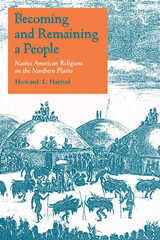 Becoming and Remaining a People: Native American Religions on the Northern Plains
Howard L. Harrod
University of Arizona Press, 1995 The power of religion to preserve individual and group identity is perhaps nowhere more evident than among Native American peoples. In Becoming and Remaining a People, Howard Harrod shows how the oral traditions and ritual practices of Northern Plains Indians developed, how they were transformed at critical points in their history, and how they provided them with crucial means of establishing and maintaining their respective identities.
This book offers a bold new interpretation of anthropological studies, demonstrating how religious traditions and ritual processes became sources of group and individual identity for many people. Harrod reconstructs the long religious development of two village peoples, the Mandans and the Hidatsas, describing how their oral traditions enabled them to reinterpret their experiences as circumstances changed. He then shows how these and other groups on the Northern Plains remained distinct peoples in the face of increased interactions with Euro-Americans, other Indians,.and the new religion of Christianity.
Harrod proposes that other interpretations of culture change may fail to come to terms with the role that religion plays in motivating both cultural conservatism and social change. For Northern Plains peoples, religion was at the heart of social identity and thus resisted change, but religion was also the source of creative reinterpretation, which produced culture change. Viewed from within the group, such change often seemed natural and was understood as an elaboration of traditions having roots in a deeper shared past. In addition to demonstrating religious continuity and change among the Mandans and the Hidatsas, he also describes instances of religious and social transformation among the peoples who became the Crows and the Cheyennes.
Becoming and Remaining a People adopts a challenging analytical approach that draws on the author's creative interpretations of rituals and oral traditions. By enabling us to understand the relation of religion both to the construction of social identity and to the interpretation of social change, it reveals the richness, depth, and cultural complexity of both past Native American people and their contemporary successors.
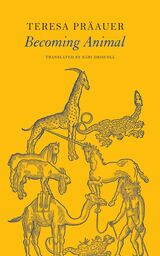 Becoming Animal
Teresa Präauer
Seagull Books, 2024 An unveiling of the presence of captivating figures and creatures throughout history.
In this gripping philosophical and cultural exploration, Teresa Präauer sets out to investigate figures of transformation, transmission, and translation—across languages, cultures, genres, media, species, and spaces. Hybrids, chimeras, monsters, and liminal creatures of all sorts inhabit these pages, as indeed they do the pages of the cultural archive from Antiquity and the Middle Ages to the present day: everything from the harpies, ape-men, and cynocephali that inhabit the edges of medieval maps and taxonomies to the Krampuses and Furries that roam through Alpine villages and convention centers today. Yet these chimeras are not aberrations; rather, they reveal an essential truth about culture and artistic expression.
What emerges in Becoming Animal is a kaleidoscopic image of culture as the constant probing of the limits of the sayable, as an unending process of attempting to capture in words and symbols that which cannot be pinned down.
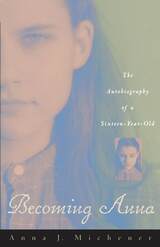 Becoming Anna
Anna J. Michener
University of Chicago Press, 1998 Becoming Anna is the poignant memoir of the first sixteen years in the life of Anna Michener, a young woman who fought a painful battle against her abusive family. Labeled "crazy girl" for much of her childhood, Anna suffered physical and emotional damage at the hands of the adults who were supposed to love and protect her. Committed to various mental institutions by her family, at sixteen Anna was finally able to escape her chaotic home life and enter a foster home. As an effort toward recovery and self-affirmation as well as a powerful plea on behalf of other abused children, Anna wrote this memoir while the experience was fresh and the emotions were still raw and unhealed. Her story is a powerful tale of survival.
"A teen's raw, in-your-face chronicle of events almost as they were happening. As such, it's unforgettable. . . . Michener's story gives voice to the thousands of children and adolescents trapped in 'the system,' biding their time until their 18th birthdays. A candid and unstinting tell-all."—Kirkus Reviews
"Extraordinary. . . . Michener's expressive writing does justice to a topic that is clearly very disturbing to her personally and communicates a profoundly important message on behalf of all abused and neglected children."—Booklist
"An important book, painful to read, but essential if other children in similar situations are to be saved."—Library Journal
"An innocent child's account of 16 years in hell and of the terrible wrongs inflicted on children who are without rights or caring advocates."—Choice
"[Michener] emerges as a compelling and courageous advocate for children and their welfare—she's a young writer with an extraordinary voice."Feminist Bookstore News
"Quite simply one of the best, most compelling, well-written autobiographies published in years. . . . Remember the name. We have not heard the last of Anna Michener."—Myree Whitfield, Melbourne Herald-Sun, cover story
Becoming Apart: National Power and Local Politics in Toyama, 1868–1945
Michael Lewis
Harvard University Press, 2000 What ties bound region to center in the making of the modern Japanese state? What forces shaped these bonds? How did the local–center relationship change over time? What is its current legacy?
Focusing on the marginal region of Toyama, on the Sea of Japan, the author explores the interplay of central and regional authorities, local and national perceptions of rights, and the emerging political practices in Toyama and Tokyo that became part of the new political culture that took shape in Japan following the Meiji Restoration. Michael Lewis argues that in response to the demands of the centralizing state, local elites and leaders in Toyama developed a repertoire of supple responses that varied with the political or economic issue at stake.
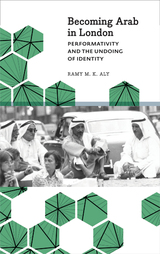 Becoming Arab in London: Performativity and the Undoing of Identity
Ramy M. K. Aly
Pluto Press, 2015 In this, the first ethnographic exploration of gender, race, and class practices among British-born or British-raised Arabs in London, Ramy M. K. Aly looks critically at the idea of “Arab-ness” and the ways in which London produces, marks, and understands ethnic subjects. Looking at everyday experiences, Becoming Arab in London explores the lives of young people and the ways in which they perform or achieve Arab ethnicity. Aly uncovers narratives of growing up in London, the codes of sociability at Shisha, and the sexual politics and ethnic self-portraits that construct British-Arab men and women.
Drawing on the work of Judith Butler, Aly emphasizes the need to move away from the concept of identity and toward the idea of race, gender, and class as performance. Based on seven years of fieldwork, during which time the author immersed himself in London’s Arab community, Becoming Arab in London is an innovative and necessary contribution to the study of diaspora and difference in contemporary Britain.
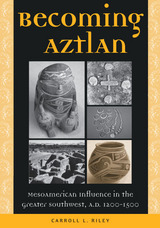 Becoming Aztlan: Mesoamerican Ingluence in the Greater Southwest, A.D. 1200-1500
Carroll L Riley
University of Utah Press, 2005 For decades archaeologists insisted that southwestern cultures such as the Anasazi, Hohokam, and Mogollon had little or no relation to peoples south of the "border"' Now American archaeology is beginning to take seriously the notion that goods, gods, and even humans may have passed with some frequency between the high cultures of Mexico and the Southwest.
In his latest book, Carroll Riley presents an ambitious overview of the continuities he sees in the geographically vast and culturally complex American Southwest and the adjacent northwest of Mexico. Aided by extensive illustrations, he argues that although the Southwest remained "southwestern" in its basic economy, there were drastic changes beginning around A.D. 1200 that transformed socio-religious life throughout the region. Riley calls this period Aztlan, a name adopted from the mythic Aztec land of origin. A Pueblo Indian in A.D. 800 would have gathered and farmed the same foods as his descendants, but by 1400 those distant relatives had a very different concept of the physical and spiritual universe.
In addition to bringing vast erudition and jargon-free prose to bear on a complex subject, Riley’s conclusions have potentially sweeping implications for the future of archaeological studies in the greater Southwest.
Becoming Beautiful: Ballroom Dance in the American Heartland
Joanna Bosse
University of Illinois Press, 2015 In Becoming Beautiful, Joanna Bosse explores the transformations undergone by the residents of a Midwestern town when they step out on the dance floor for the very first time.
Bosse uses sensitive fieldwork as well as her own immersion in ballroom culture to lead readers into a community that springs up around ballroom dance. The result is a portrait of the real people who connect with others, change themselves, and join a world that foxtrots to its own rules, conventions, and rewards. Bosse's eye for revealing, humorous detail adds warmth and depth to discussions around critical perspectives on the experiences the dance hall provides, the nature of partnership and connection, and the notion of how dancing allows anyone to become beautiful.
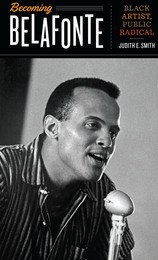 Becoming Belafonte: Black Artist, Public Radical
By Judith E. Smith
University of Texas Press, 2014 A son of poor Jamaican immigrants who grew up in Depression-era Harlem, Harry Belafonte became the first black performer to gain artistic control over the representation of African Americans in commercial television and film. Forging connections with an astonishing array of consequential players on the American scene in the decades following World War II—from Paul Robeson to Ed Sullivan, John Kennedy to Stokely Carmichael—Belafonte established his place in American culture as a hugely popular singer, matinee idol, internationalist, and champion of civil rights, black pride, and black power. In Becoming Belafonte, Judith E. Smith presents the first full-length interpretive study of this multitalented artist. She sets Belafonte’s compelling story within a history of American race relations, black theater and film history, McCarthy-era hysteria, and the challenges of introducing multifaceted black culture in a moment of expanding media possibilities and constrained political expression. Smith traces Belafonte’s roots in the radical politics of the 1940s, his careful negotiation of the complex challenges of the Cold War 1950s, and his full flowering as a civil rights advocate and internationally acclaimed performer in the 1960s. In Smith’s account, Belafonte emerges as a relentless activist, a questing intellectual, and a tireless organizer. From his first national successes as a singer of Calypso-inflected songs to the dedication he brought to producing challenging material on television and film regardless of its commercial potential, Belafonte stands as a singular figure in American cultural history—a performer who never shied away from the dangerous crossroads where art and politics meet.
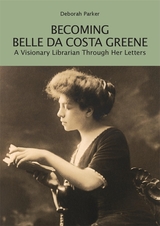 Becoming Belle da Costa Greene: A Visionary Librarian Through Her Letters
Deborah Parker
Harvard University Press In Becoming Belle da Costa Greene: A Visionary Librarian through Her Letters, Deborah Parker chronicles the making and empowerment of a female connoisseur, curator, and library director in a world where such positions were held by men. Belle da Costa Greene (1879–1950) was Pierpont Morgan’s personal librarian (1908–1913) and the first Director of the Morgan Library (1924–1948). She was also the daughter of two mixed-race parents and passed for white. In the nearly six hundred letters that Greene sent to art historian Bernard Berenson (1865–1959), Parker identifies Greene’s energetic pursuit of exceptional opportunities, illuminating the artistry and imaginative features of Greene’s writing—her self-invention, her vibrant responses to books and art, and her pathbreaking work as a librarian. As Greene transformed a private library into a magnificent public institution, she also transformed herself: hers was a life both lived and writ large.
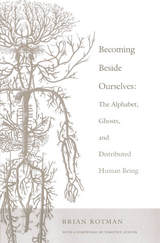 Becoming Beside Ourselves: The Alphabet, Ghosts, and Distributed Human Being
Brian Rotman
Duke University Press, 2008 Becoming Beside Ourselves continues the investigation that the renowned cultural theorist and mathematician Brian Rotman began in his previous books Signifying Nothing and Ad Infinitum...The Ghost in Turing’s Machine: exploring certain signs and the conceptual innovations and subjectivities that they facilitate or foreclose. In Becoming Beside Ourselves, Rotman turns his attention to alphabetic writing or the inscription of spoken language. Contending that all media configure what they mediate, he maintains that alphabetic writing has long served as the West’s dominant cognitive technology. Its logic and limitations have shaped thought and affect from its inception until the present. Now its grip on Western consciousness is giving way to virtual technologies and networked media, which are reconfiguring human subjectivity just as alphabetic texts have done for millennia. Alphabetic texts do not convey the bodily gestures of human speech: the hesitations, silences, and changes of pitch that infuse spoken language with affect. Rotman suggests that by removing the body from communication, alphabetic texts enable belief in singular, disembodied, authoritative forms of being such as God and the psyche. He argues that while disembodied agencies are credible and real to “lettered selves,” they are increasingly incompatible with selves and subjectivities formed in relation to new virtual technologies and networked media. Digital motion-capture technologies are restoring gesture and even touch to a prominent role in communication. Parallel computing is challenging the linear thought patterns and ideas of singularity facilitated by alphabetic language. Barriers between self and other are breaking down as the networked self is traversed by other selves to become multiple and distributed, formed through many actions and perceptions at once. The digital self is going plural, becoming beside itself.
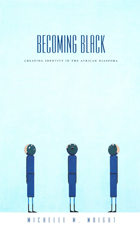 Becoming Black: Creating Identity in the African Diaspora
Michelle M. Wright
Duke University Press, 2004 Becoming Black is a powerful theorization of Black subjectivity throughout the African diaspora. In this unique comparative study, Michelle M. Wright discusses the commonalties and differences in how Black writers and thinkers from the United States, the Caribbean, Africa, France, Great Britain, and Germany have responded to white European and American claims about Black consciousness. As Wright traces more than a century of debate on Black subjectivity between intellectuals of African descent and white philosophers, she also highlights how feminist writers have challenged patriarchal theories of Black identity. Wright argues that three nineteenth-century American and European works addressing race—Thomas Jefferson’s Notes on the State of Virginia, G. W. F. Hegel’s Philosophy of History, and Count Arthur de Gobineau’s Essay on the Inequality of the Human Races—were particularly influential in shaping twentieth-century ideas about Black subjectivity. She considers these treatises in depth and describes how the revolutionary Black thinkers W. E. B. Du Bois, Aimé Césaire, Léopold Sédar Senghor, and Frantz Fanon countered the theories they promulgated. She explains that while Du Bois, Césaire, Senghor, and Fanon rejected the racist ideologies of Jefferson, Hegel, and Gobineau, for the most part they did so within what remained a nationalist, patriarchal framework. Such persistent nationalist and sexist ideologies were later subverted, Wright shows, in the work of Black women writers including Carolyn Rodgers and Audre Lorde and, more recently, the British novelists Joan Riley, Naomi King, Jo Hodges, and Andrea Levy. By considering diasporic writing ranging from Du Bois to Lorde to the contemporary African novelists Simon Njami and Daniel Biyaoula, Wright reveals Black subjectivity as rich, varied, and always evolving.
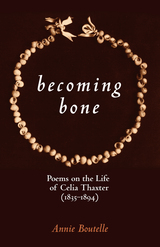 Becoming Bone: Poems on the Life of Celia Thaxter (1836-1894)
Annie Boutelle
University of Arkansas Press, 2005 In the tradition of such outstanding biography-in-poetry collections as Maurice Manning’s A Companion of Owls about Daniel Boone and Sharon Chmielarz’s The Other Mozart, Annie Boutelle’s first collection probes the layered life of one of nineteenth-century America’s most popular poets, who is now almost forgotten. The Celia Thaxter who speaks these poems disturbs the placid myth created around her public persona, and focuses on the fierce mysteries and ironies that frame her. Boutelle carefully reveals Thaxter’s childhood on the stark Isles of Shoals off the New Hampshire coast; the trap of a Victorian marriage; the struggle to invent herself as a writer and painter; her celebrated circle of friends, which included Nathaniel Hawthorne, John Greenleaf Whittier, Sarah Orne Jewett, and Childe Hassam; and the hard-won serenity of her last decade. At the fringes of Thaxter’s life a wider world clamors, particularly with the onset of the Civil War. At the center rests a quiet, almost elliptical silence. Like fine champagne, these poems ravish. Clear, airy, crystalline, they move us into an elemental world where “nothing is left but water, / air, and the uncertain space between.” The spare language resonates. With restraint and lyric tenderness, Boutelle leads us toward a woman who shifts from pose to necessary pose, who survives in these pages with intelligence and grace: “The grave / flesh melts. What’s left / is light as bone.”
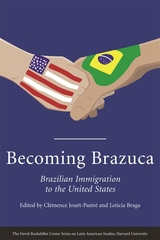 Becoming Brazuca: Brazilian Immigration to the United States
Clémence Jouët-Pastré
Harvard University Press Brazilians in the United States are a relatively new wave of immigrants from South America. In the past their vast country of origin was used to receiving immigrants, not sending them out. The shift is new, and these arrivals do not necessarily fit comfortably in the midst of the huge Spanish-speaking U.S. immigration. This volume offers a broad-ranging discussion of an understudied population and also brings insights into the core issues of immigration research: how immigration can complicate issues of social class, race, and ethnicity, how it intersects with the educational system, and how it fits into the assimilation paradigm.
Within the three broad categories that separate these 14 chapters, discussions by the 24 contributors illuminate the various facets of Brazilian immigration and put them in the broader context of life in the twenty-first century. Discussions of cultural icons like Carmen Miranda and Carnival, of Brazilian immigrant women, of the new generation, and of the economy of remittances are just a few examples of the wide range of topics covered in these pages.
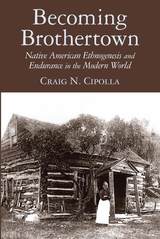 Becoming Brothertown: Native American Ethnogenesis and Endurance in the Modern World
Craig N. Cipolla
University of Arizona Press, 2013 Histories of New England typically frame the region’s Indigenous populations in terms of effects felt from European colonialism: the ravages of epidemics and warfare, the restrictions of reservation life, and the influences of European-introduced ideas, customs, and materials. Much less attention is given to how Algonquian peoples actively used and transformed European things, endured imposed hardships, and negotiated their own identities. In Becoming Brothertown, Craig N. Cipolla searches for a deeper understanding of Native American history.
Covering the eighteenth century to the present, the book explores the emergence of the Brothertown Indians, a "new" community of Native peoples formed in direct response to colonialism and guided by the vision of Samson Occom, a Mohegan Indian and ordained Presbyterian minister. Breaking away from their home settlements of coastal New England during the late eighteenth century, members of various tribes migrated to Oneida Country in central New York State in hopes of escaping East Coast land politics and the corrupting influences of colonial culture. In the nineteenth century, the new community relocated once again, this time to present-day Wisconsin, where the Brothertown Indian Nation remains centered today.
Cipolla combines historical archaeology, gravestone studies, and discourse analysis to tell the story of the Brothertown Indians. The book develops a pragmatic approach to the study of colonialism while adding an archaeological perspective on Brothertown history, filling a crucial gap in the regional archaeological literature.
Becoming Byzantine: Children and Childhood in Byzantium
Arietta Papaconstantinou
Harvard University Press, 2009 Despite increased interest over the last fifty years in childhood in Byzantium, the bibliography on this topic remains rather short and generalized. Becoming Byzantine: Children and Childhood in Byzantium presents detailed information about children's lives and provides a basis for further study. This collection of eight articles drawn from a May 2006 Dumbarton Oaks symposium covers matters relevant to daily life such as the definition of children in Byzantine law, procreation, death, breastfeeding patterns, and material culture. Religious and political perspectives are also used to examine Byzantine views of the ideal child, and the abuse of children in monasteries. Many of these articles present the first comprehensive accounts of specific aspects of childhood in Byzantium.
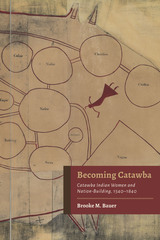 Becoming Catawba: Catawba Indian Women and Nation-Building, 1540–1840
Brooke M. Bauer
University of Alabama Press, 2023 The story of Catawba women who experienced sweeping changes to their world but held onto traditional customs to create and preserve a Catawba identity and build a nation
Winner of the Anne B. & James B. McMillan Prize in Southern History
Winner of the 2023 Erminie Wheeler-Voegelin Book Award Winner
Winner of the 2022 Berkshire Conference of Women Historians Book Award
Winner of the 2022 George C. Rogers, Jr. Award from the South Carolina Historical Society
Brooke M. Bauer’s Becoming Catawba: Catawba Indian Women and Nation-Building, 1540–1840 is the first book-length study of the role Catawba women played in creating and preserving a cohesive tribal identity over three centuries of colonization and cultural turmoil. Bauer, a citizen of the Catawba Indian Nation of South Carolina, weaves ethnohistorical methodologies, family history, cultural context, and the Catawba language together to generate an internal perspective on the Catawbas’ history and heritage in the area now known as the Carolina Piedmont.
This unique and important study examines the lives and legacies of women who executed complex decision-making and diplomacy to navigate shifting frameworks of kinship, land ownership, and cultural production in dealings with colonial encroachments, white settlers, and Euro-American legal systems and governments from the mid-sixteenth century to the early nineteenth century. Personified in the figure of Sally New River, a Catawba cultural leader to whom 500 remaining acres of occupied tribal lands were deeded on behalf of the community in 1796 and which she managed until her death in 1821, Bauer reveals how women worked to ensure the survival of the Catawba people and their Catawba identity, an effort that resulted in a unified nation.
Bauer’s approach is primarily ethnohistorical, although it draws on a number of interdisciplinary strategies. In particular, Bauer uses “upstreaming,” a critical strategy that moves toward the period under study by using present-day community members’ connections to historical knowledge—for example, family histories and oral traditions—to interpret primary-source data. Additionally, Bauer employs archaeological data and material culture as a means of performing feminist recuperation, filling the gaps and silences left by the records, newspapers, and historical accounts as primarily written by and for white men. Ultimately, Becoming Catawba effects a welcome intervention at the intersections of Native, women’s, and Southern history, expanding the diversity and modes of experience in the fraught, multifaceted cultural environment of the early American South.
 Becoming Citizens in the Age of Television: How Americans Challenged the Media and Seized Political Initiative during the Iran-Contra Debate
David Thelen
University of Chicago Press, 1996 An inspired, original argument about the nature of democracy in American society, Becoming Citizens in the Age of Television explores a political process out of touch with everyday needs and concerns of citizens. Instead of focusing on polls and election results, historian David Thelen listens to Americans through their calls and letters to congressmen in which citizens define for themselves the issues they want to raise and the ways they want to be seen and heard.
Thelen argues that the self-referential world of politics and journalism during elections excludes the concerns and voices of Americans, resulting in lower voter turnouts and increased voter apathy. Televised hearings and trials, however—from O. J. Simpson to Anita Hill vs. Clarence Thomas to Oliver North and Iran-Contra—have ignited storms of controversy and public debate. Focusing upon the spontaneous, unmediated reactions of American citizens to these events, Thelen discovers a new kind of political participation in which Americans shape their interventions.
Through an analysis of a remarkable documentary collection—the correspondence sent by citizens to the House Select Committee on Iran-Contra in the wake of the Oliver North testimony—Thelen explains how Americans are reclaiming the political process. Examining more than 5,000 letters and telegrams, Thelen uncovers the anger and resolve of a vocal public insulted by the media and opinion-managers who have misrepresented them as mindless supporters of "Olliemania."
Concluding with suggestions on how citizens can reclaim their voice from the opinion managing industries, this work promises to provoke the kind of public discourse on which democracy depends.
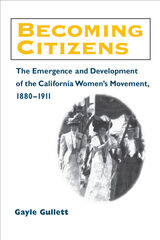 Becoming Citizens: The Emergence and Development of the California Women's Movement, 1880-1911
Gayle Gullett
University of Illinois Press, 2000 In 1880, Californians believed a woman safeguarded the Republic by maintaining a morally sound home. Scarcely forty years later, women in the state won full-fledged citizenship and voting rights by stepping outside the home to engage in robust activism. Gayle Gullett reveals how this enormous transformation came about and the ways women's search for a larger public life led to a flourishing women's movement in California. Though voters rejected women's radical demand for citizenship in 1896, women rebuilt the movement in the early years of the twentieth century and forged critical bonds between activist women and the men involved in the urban Good Government movement. This alliance formed the basis of progressivism, with male Progressives helping to legitimize women's new public work by supporting their civic campaigns, appointing women to public office, and placing a suffrage referendum before the male electorate in 1911. Placing local developments in a national context, Becoming Citizens illuminates the links between women's reform movements and progressivism in the American West.
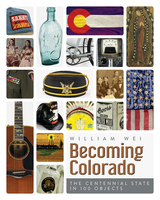 Becoming Colorado: The Centennial State in 100 Objects
William Wei
University Press of Colorado, 2021 Copublished with History Colorado In Becoming Colorado, historian William Wei paints a vivid portrait of Colorado history using 100 of the most compelling artifacts from Colorado’s history. These objects reveal how Colorado has evolved over time, allowing readers to draw multiple connections among periods, places, and people. Collectively, the essays offer a treasure trove of historical insight and unforgettable detail. Beginning with Indigenous people and ending in the early years of the twenty-first century, Wei traces Colorado’s story by taking a close look at unique artifacts that bring to life the cultures and experiences of its people. For each object, a short essay accompanies a full-color photograph. These accessible accounts tell the human stories behind the artifacts, illuminating each object’s importance to the people who used it and its role in forming Colorado’s culture. Together, they show how Colorado was shaped and how Coloradans became the people they are. Theirs is a story of survival, perseverance, enterprise, and luck. Providing a fresh lens through which to view Colorado’s past, Becoming Colorado tells an inclusive story of the Indigenous and the immigrant, the famous and the unknown, the vocal and the voiceless—for they are all Coloradans.
Becoming Creole: Nature and Race in Belize
Johnson, Melissa A.
Rutgers University Press, 2019 Becoming Creole explores how people become who they are through their relationships with the natural world, and it shows how those relationships are also always embedded in processes of racialization that create blackness, brownness, and whiteness. Taking the reader into the lived experience of Afro-Caribbean people who call the watery lowlands of Belize home, Melissa A. Johnson traces Belizean Creole peoples’ relationships with the plants, animals, water, and soils around them, and analyzes how these relationships intersect with transnational racial assemblages. She provides a sustained analysis of how processes of racialization are always present in the entanglements between people and the non-human worlds in which they live.
Becoming Designers: Education and Influence
Stuart Mealing
Intellect Books, 2000 Design Research is an area that is both current and growing, but texts on the subjects are in short supply. This book is a response to the vitality of discussion within journals and at conferences, and it intends to place Design Research in its rightful place at the heart of studio-based education and practice. Offering a valuable context within which to understand the educational needs and aspirations of the designer, Becoming Designers is also a vital resource for students in this field, whose access to books on the subject is currently very limited.
 Becoming Dickens: The Invention of a Novelist
Robert Douglas-Fairhurst
Harvard University Press, 2011 Becoming Dickens tells the story of how an ambitious young Londoner became England’s greatest novelist. In following the twists and turns of Charles Dickens’s early career, Robert Douglas-Fairhurst examines a remarkable double transformation: in reinventing himself Dickens reinvented the form of the novel. It was a high-stakes gamble, and Dickens never forgot how differently things could have turned out. Like the hero of Dombey and Son, he remained haunted by “what might have been, and what was not.”
In his own lifetime, Dickens was without rivals. He styled himself simply “The Inimitable.” But he was not always confident about his standing in the world. From his traumatized childhood to the suicide of his first collaborator and the sudden death of the woman who had a good claim to being the love of his life, Dickens faced powerful obstacles. Before settling on the profession of novelist, he tried his hand at the law and journalism, considered a career in acting, and even contemplated emigrating to the West Indies. Yet with The Pickwick Papers, Oliver Twist, and a groundbreaking series of plays, sketches, and articles, he succeeded in turning every potential breakdown into a breakthrough.
Douglas-Fairhurst’s provocative new biography, focused on the 1830s, portrays a restless and uncertain Dickens who could not decide on the career path he should take and would never feel secure in his considerable achievements.
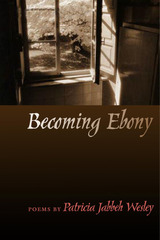 Becoming Ebony
Patricia Jabbeh Wesley
Southern Illinois University Press, 2003 Recapturing the celebratory voice of Africa in poems that are both contemporary and traditional, Liberian-born Patricia Jabbeh Wesley weaves lyrical storytelling with oral history and images of Africa and America, revealing powerful insights about the relationship between strength and tragedy—and finding reason to celebrate even in the presence of war, difficulties, and death. Rooted in myths that can be traced to the Grebo tradition, Becoming Ebony portrays Liberian-born Wesley’s experiences of village talk and civil war as well as her experiences of the pain of her mother’s death and the difficulties of rearing a family away from home in the United States, and explores the questions of living in the African Diaspora. Turning on the African proverb of “the wandering child” and the metaphor of the ebony tree—which is beautiful in life and death— these poems delve into issues of human suffering and survival, plainly and beautifully chronicling what happens “after the sap is gone.”
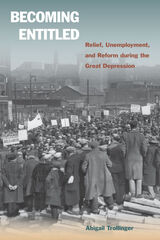 Becoming Entitled: Relief, Unemployment, and Reform during the Great Depression
Abigail Trollinger
Temple University Press, 2020 In the 1930s, the unemployed were organizing. Jobless workers felt they were “entitled" to a new kind of government protection—the protection from undeserved unemployment and the financial straits that such unemployment created. They wanted dignified forms of relief (including work relief) during the Depression, and unemployment insurance after. Becoming Entitled artfully chronicles the emergence of this worker entitlement and the people who cultivated it. Abigail Trollinger focuses largely on Chicago after the Progressive Era, where the settlement house and labor movements both flourished. She shows how reformers joined workers and relief officials to redeem the unemployed and secure government-funded social insurance for them. Becoming Entitled also offers a critical reappraisal of New Deal social and economic changes, suggesting that the transformations of the 1930s came from reformers in the “middle,” who helped establish a limited form of entitlement for workers. Ultimately, Trollinger highlights the achievements made by reformers working on city- and nation-wide issues. She captures the moment when some people shed the stigma that came with unemployment and demanded that the government do the same.
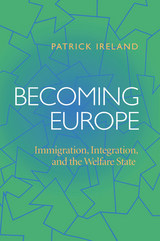 Becoming Europe: Immigration Integration And The Welfare State
Patrick Ireland
University of Pittsburgh Press, 2004 Across Europe, millions of immigrants, refugees, and asylum-seekers have often had difficulties fitting into their new societies. Most analysts have laid the blame on a clash of cultures. Becoming Europe provides evidence that institutions matter more than culture in determining the shape of ethnic relations.
Patrick Ireland argues that it is incorrect blithely to anticipate unavoidable conflict between Muslim immigrants and European host societies. Noting similarities in the structure of the welfare states in Germany, the Netherlands, and Belgium—as well as in their respective North African and Turkish immigrant communities—he compares national- and city-level developments to show how approaches toward immigrant settlement have diverged widely and evolved over time.
Becoming Europe demonstrates how policymakers have worked hard to balance immigrants’ claims to distinct traditions with demands for equal treatment. Ultimately, it reveals a picture of people learning by doing in the day-to-day activities that shape how communities come together and break apart.
 Becoming Free in the Cotton South
Susan Eva O'Donovan
Harvard University Press, 2010 Becoming Free in the Cotton South challenges our most basic ideas about slavery and freedom in America. Instead of seeing emancipation as the beginning or the ending of the story, as most histories do, Susan Eva O’Donovan explores the perilous transition between these two conditions, offering a unique vision of both the enormous changes and the profound continuities in black life before and after the Civil War.This boldly argued work focuses on a small place—the southwest corner of Georgia—in order to explicate a big question: how did black men and black women’s experiences in slavery shape their lives in freedom? The reality of slavery’s demise is harsh: in this land where cotton was king, the promise of Reconstruction passed quickly, even as radicalism crested and swept the rest of the South. Ultimately, the lives former slaves made for themselves were conditioned and often constrained by what they had endured in bondage. O’Donovan’s significant scholarship does not diminish the heroic efforts of black Americans to make their world anew; rather, it offers troubling but necessary insight into the astounding challenges they faced.Becoming Free in the Cotton South is a moving and intimate narrative, drawing upon a multiplicity of sources and individual stories to provide new understanding of the forces that shaped both slavery and freedom, and of the generation of African Americans who tackled the passage that lay between.
|
|
